fall inside a hole
Plarail James (1994)
First written November 19, 2023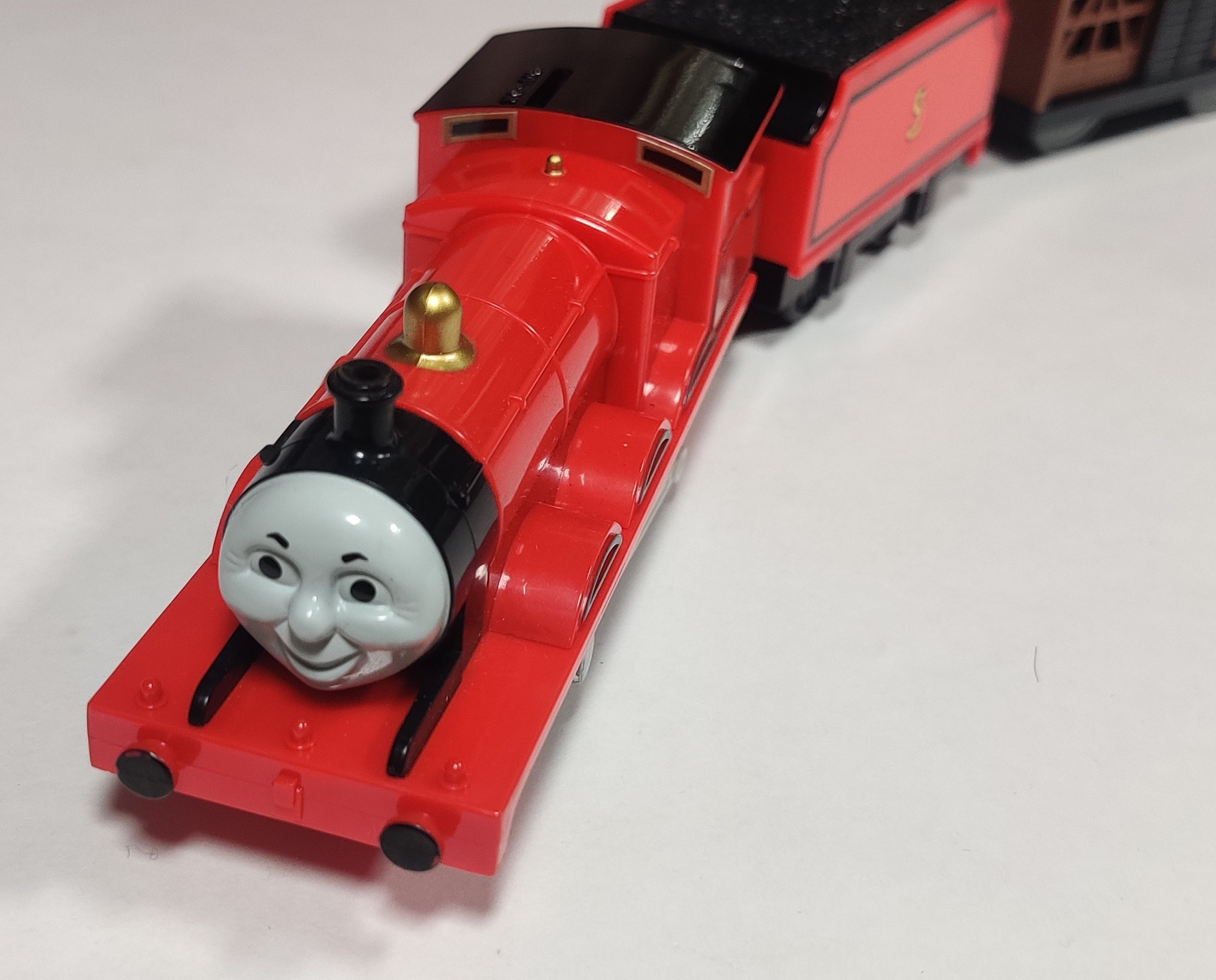
James the Red Engine is one of the main characters of the Thomas the Tank Engine and Friends T.V. show as well as the Railway Series books it is based on. James is a mixed-traffic tender engine on the fictional Island of Sodor.

Similar to other 90s Plarail Thomas trains, a late stage prototype with a slightly different face sculpt appears on some boxes and other printed materials. One promo shot used in a sales advertisement shows the black brake van with original red wheels instead of the grey wheels used on the Thomas series one.
Plarail James (initial made in Japan release) (1994)

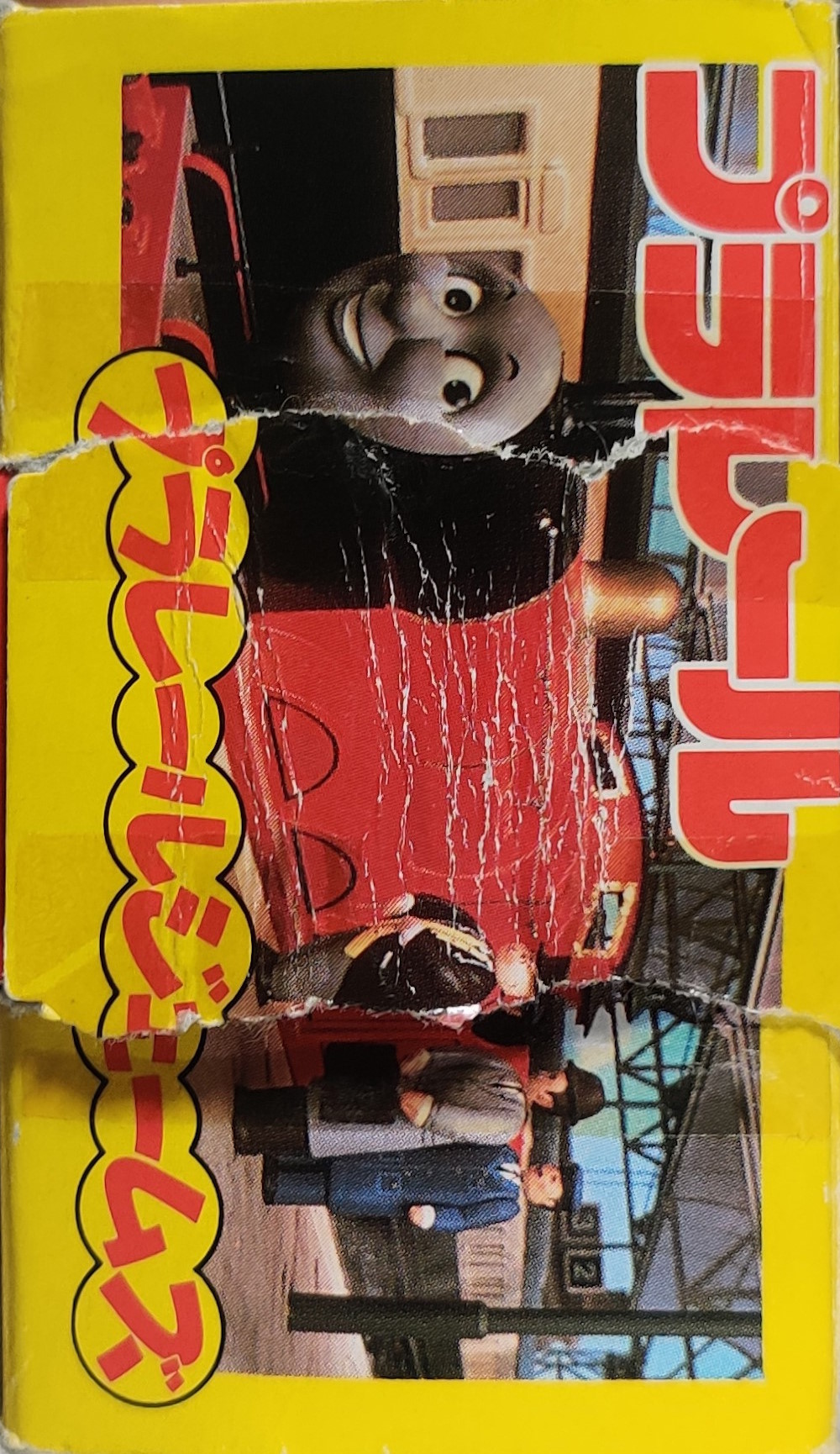

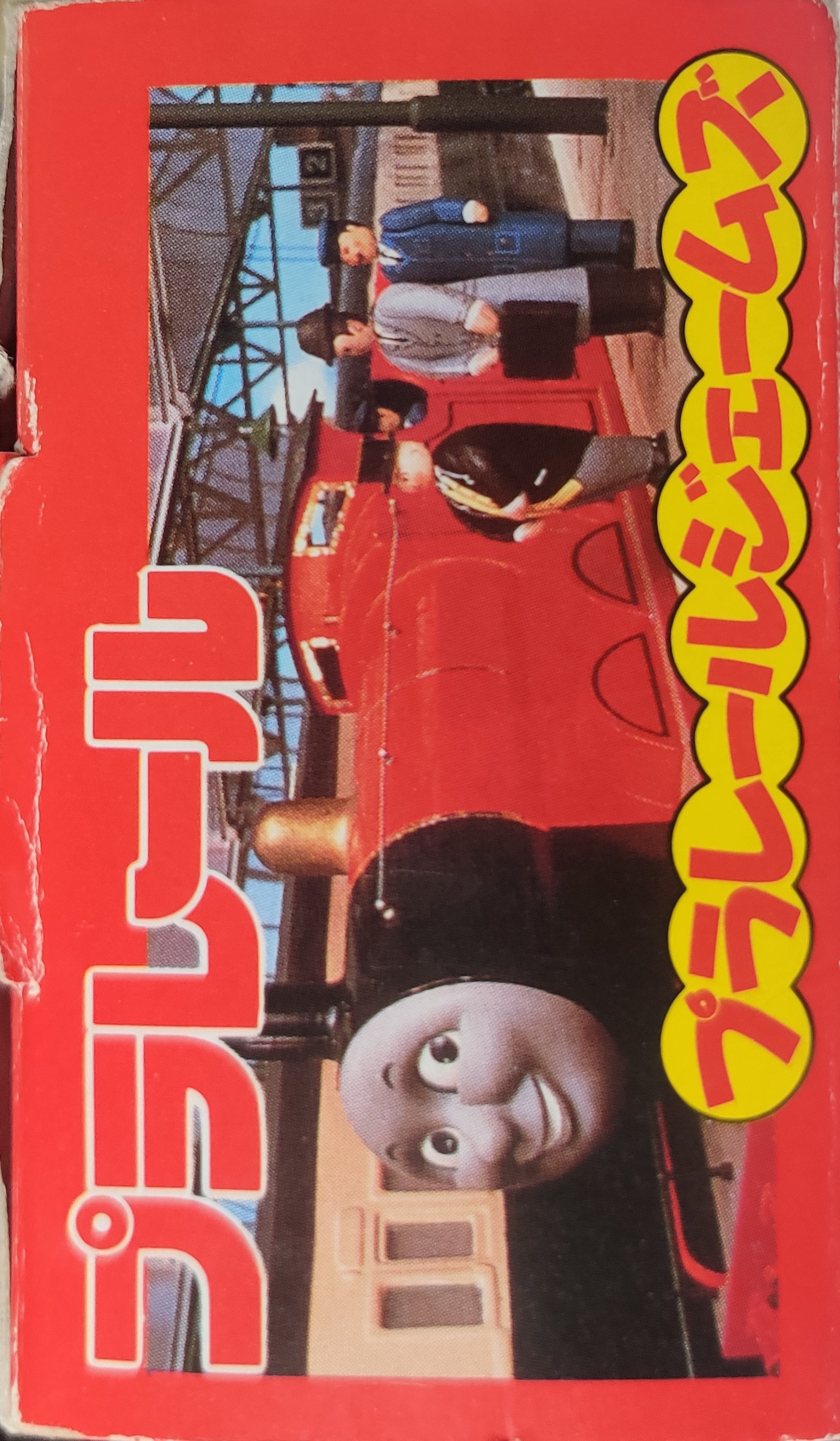


Plarail James (プラレールジェームズ) was released on October 15, 1994 and was the third engine in the Thomas series of Plarail sets, trains, and accessories. The three-pack release includes James with connected tender, a dark brown recolor of the 1979 cattle van with black doors (and no animal figurines inside), and a black brakevan with grey wheels which is almost identical to the Plarail guard's van. The box shape used for the Thomas series in the 90s is similar to the regular sixth generation Plarail boxes with the first two units of the train visible even after regular Plarail releases transitioned to the seventh generation box with all three cars visible in 1994. Unlike the two previous made in Japan Thomas-series engines, James had the Britt Allcroft logo on the front of the box instead of the Kaye and Ward logo from the start. The rear of the box has battery installation information as well as a promo shot of the late prototype and a list of incompatible accessories.

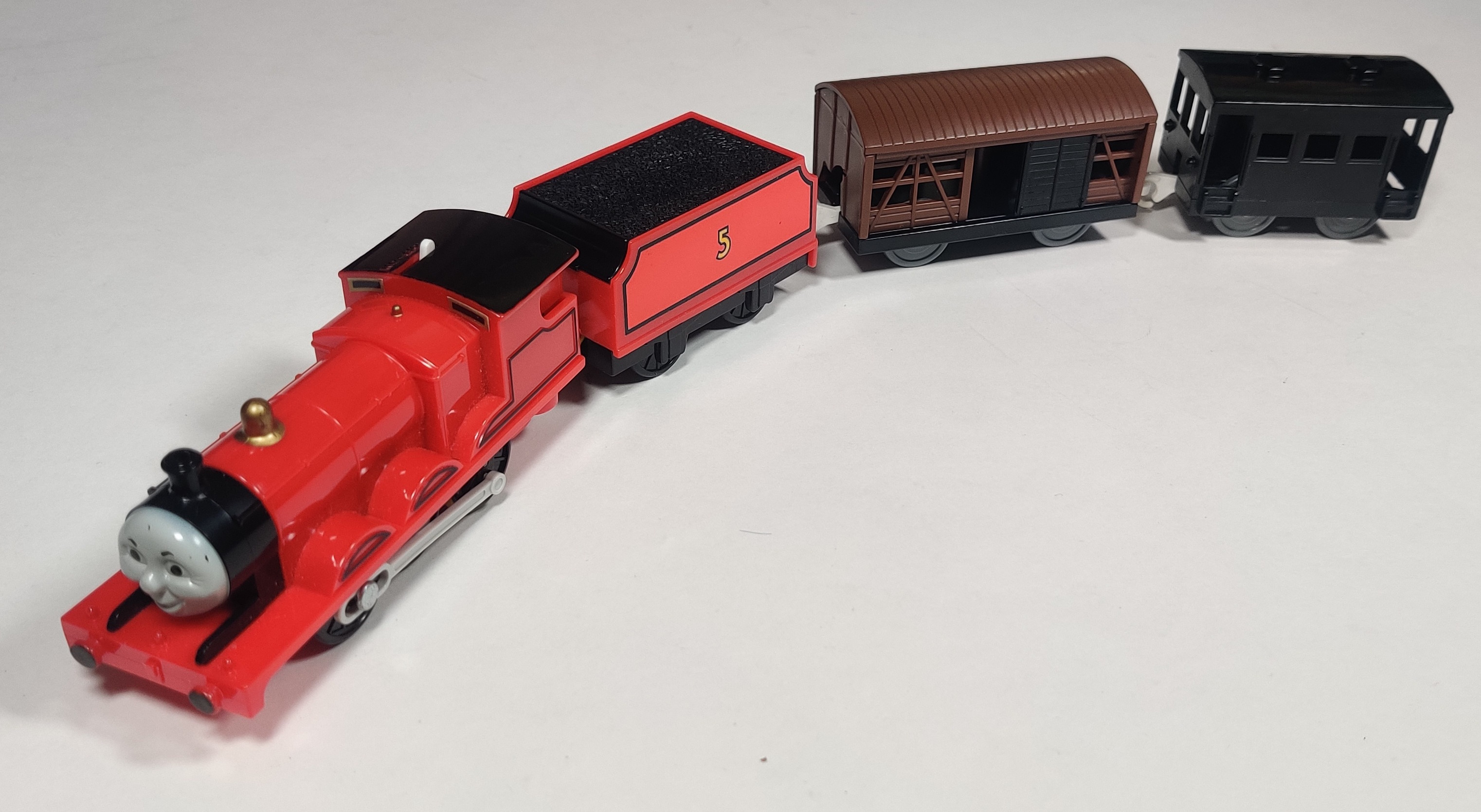
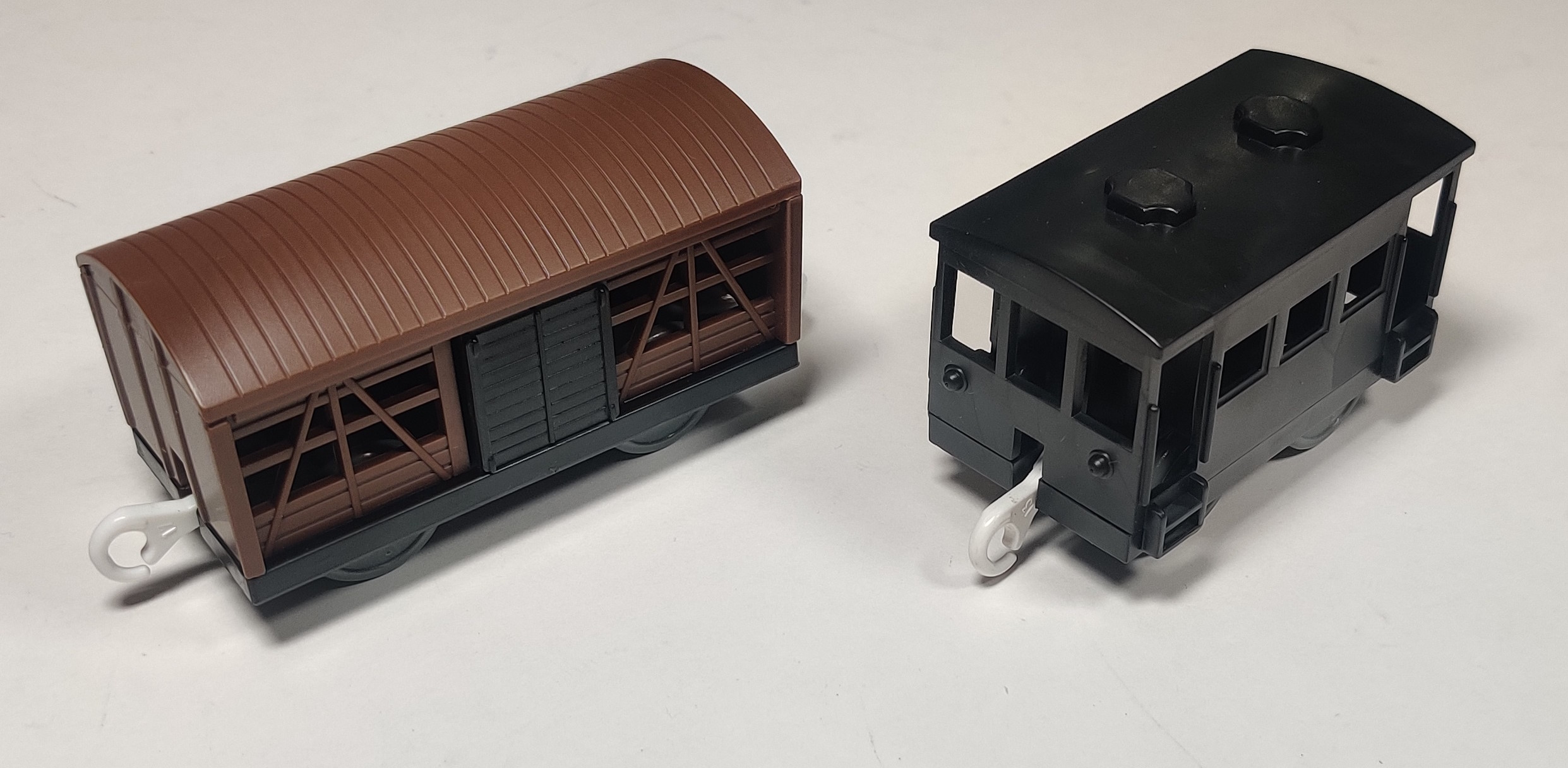
Like most other Plarail Thomas trains made in the 90s, James's face is molded into the smokebox and painted grey. The cattle van fits into the Thomas aesthetic perfectly and resembles those seen in the show while the JNR guard's van only roughly fits in. This molding would later represent a "coach" of sorts as HiT Toys and Mattel adapted it for their TrackMaster range. There was only one made in Japan run of James boxes in 1994, signified by the ST-4 mark on the rear.


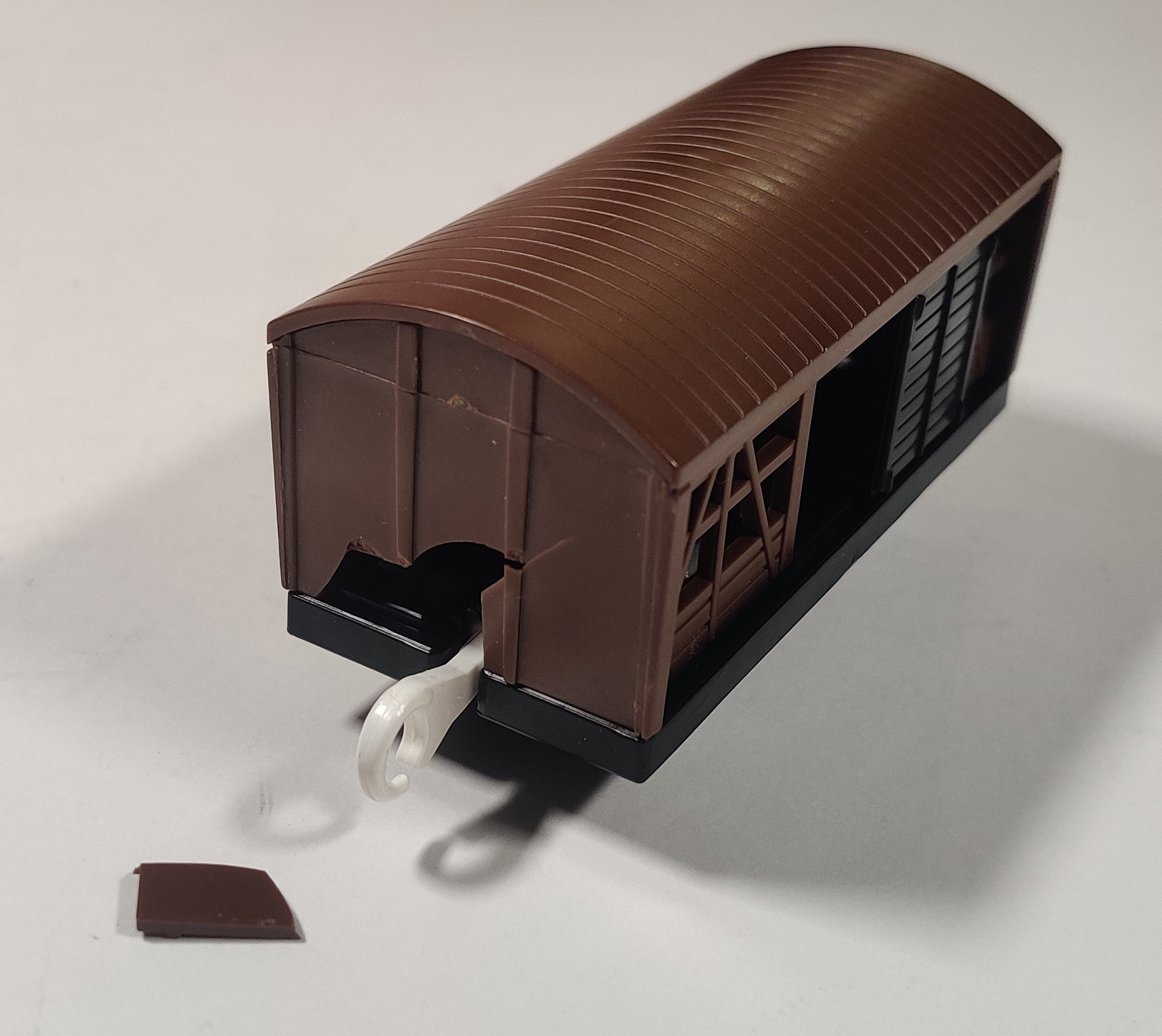
1994 Jameses are marked with 1994 licensing and made in Japan. The tooling for the cattle car and brakevan were moved to Thailand around 1990, and were thusly produced there for this release, although they still used the older single-split coupling at the time. The cattle van in this example has actually been damaged from the contents shifting around inside the box and jamming its front coupler up into its bodywork at some point.
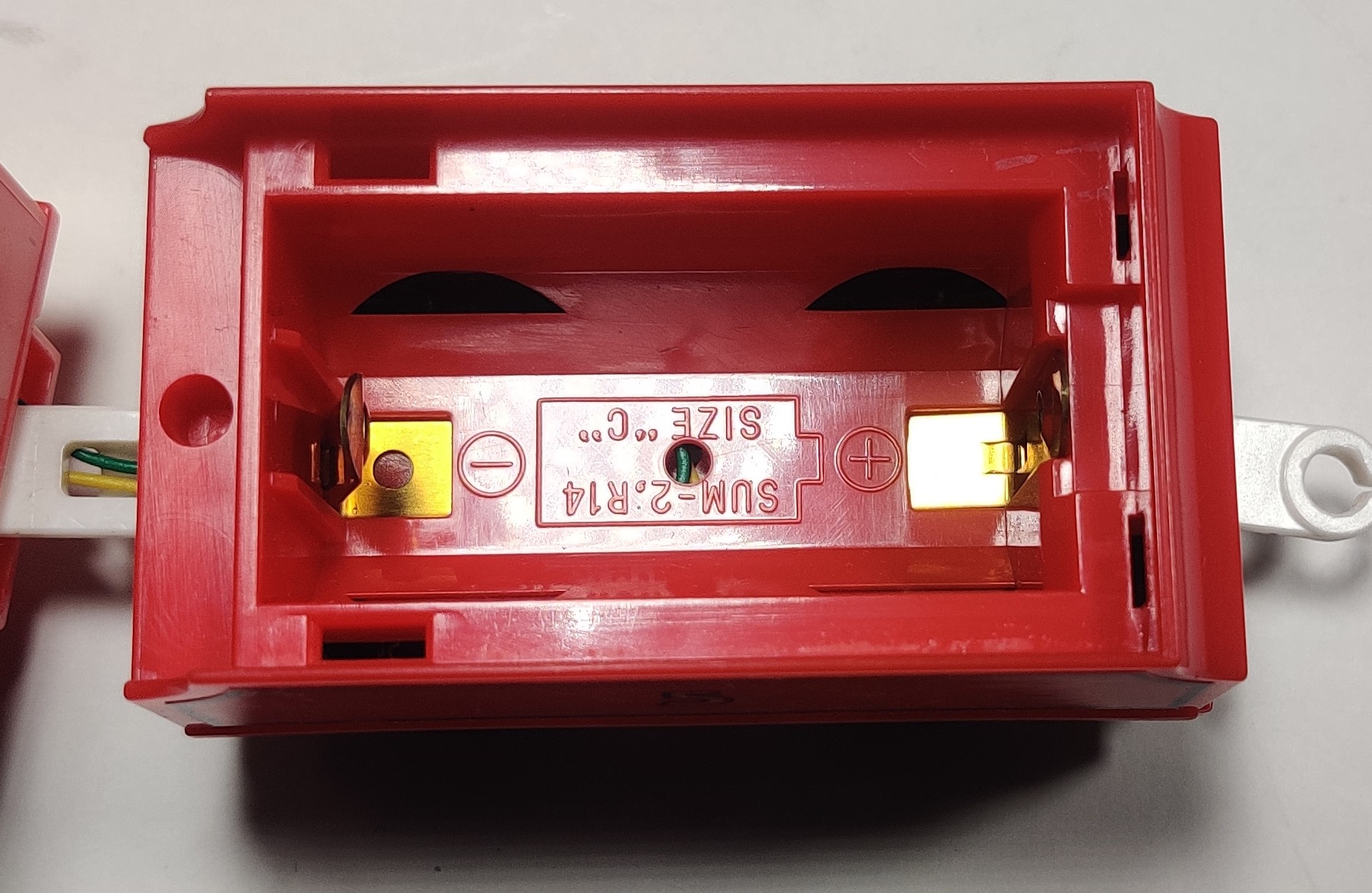
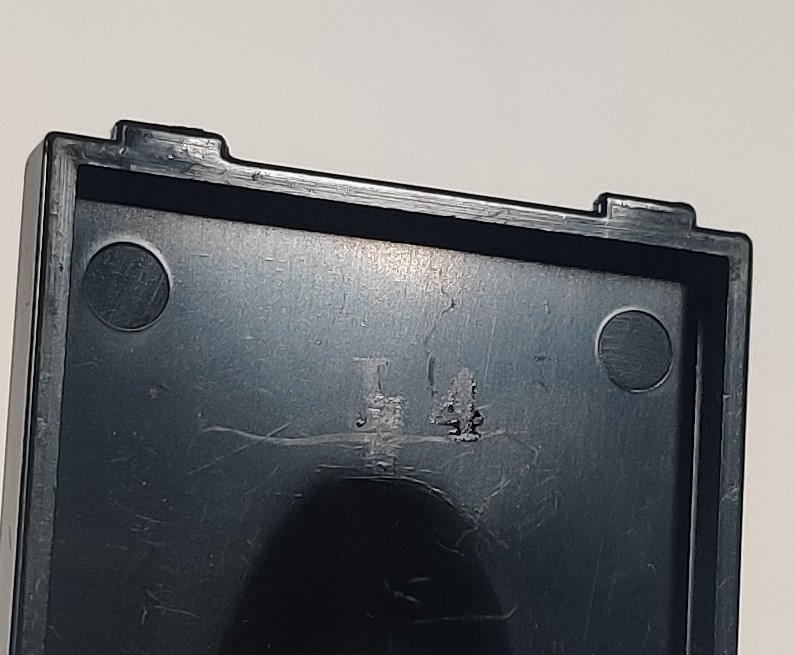
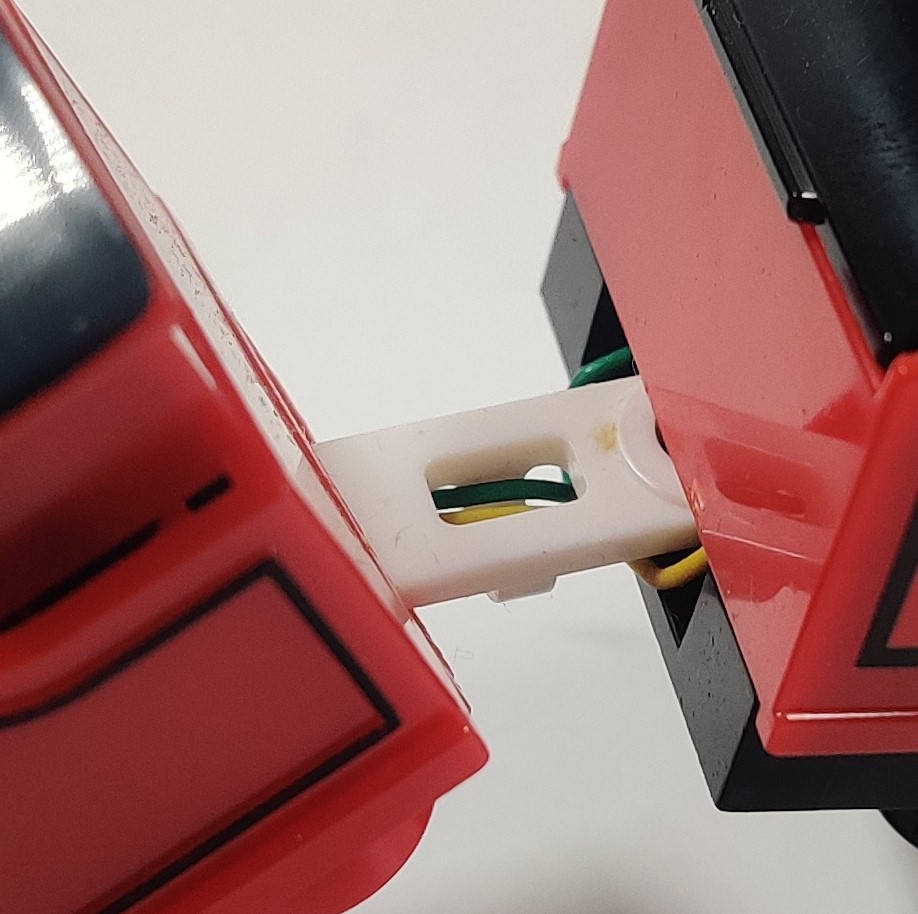
Of the three Japan-made Jameses I have with original battery covers, all three were manufactured in October 1994, the month he was first released. Unlike most other Plarail engines new enough to have a production code sticker or stamp, the stamps on made in Japan Jameses (and Henrys) are stamped directly onto the underside of the black plastic coal load and are somewhat hard to read (and lost even more easily than the stickers placed inside the main body shell). Made in Japan Jameses have brass battery contacts like other Japan-made trains and use the rigid drawbar that is prone to breaking. Interestingly, these early Jameses use green and yellow wire instead of the more common red and blue used on Henry and other engines.
Plarail James (Thailand rerelease) (1995)

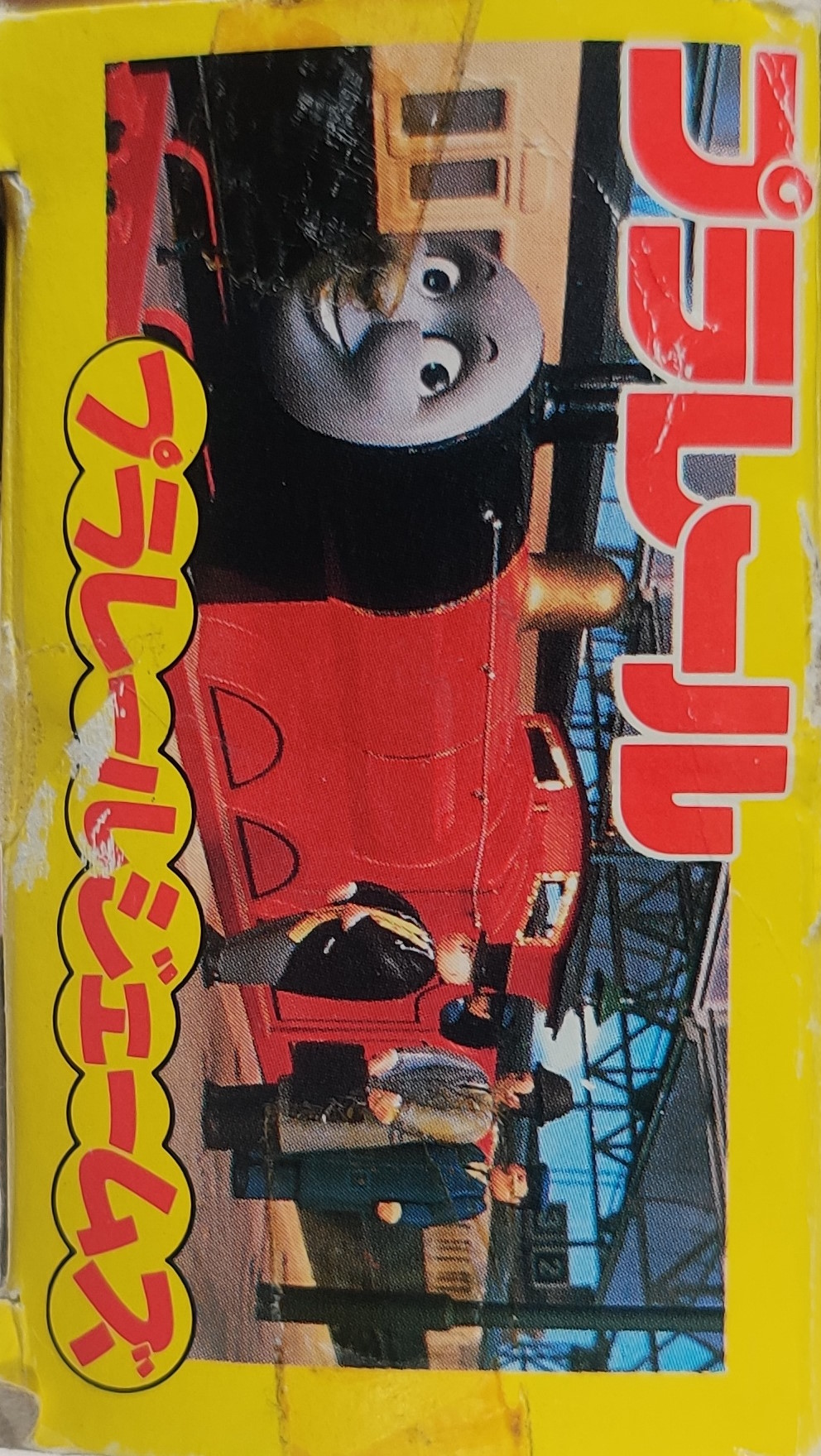

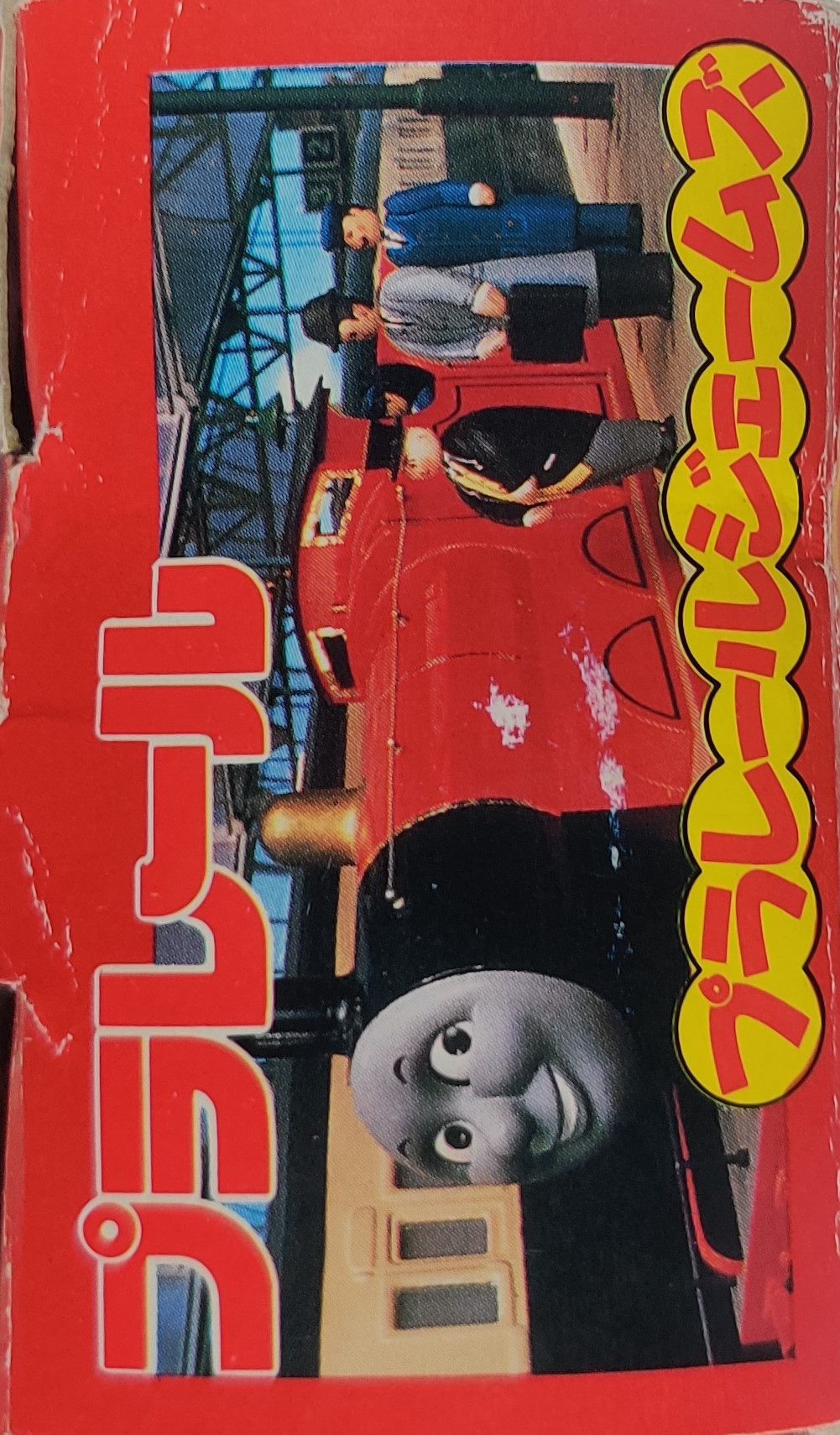


In 1995 new Jameses began being made in Tomy's Thailand factory, which began producing Plarail in 1989. The first print run of boxes for Thailand-produced Jameses was printed in late 1994 and had minor changes like some additional battery information. This style of box also added the pull-out hang tag flap and is slightly shorter than the older designs. The hang tag was introduced on the redesigned three-window seventh generation boxes, but the slanted sixth generation designed continued to be used for the Thomas series as it allowed for a large character portrait on the front of the box. This box shape was also used for the Tomica World range.
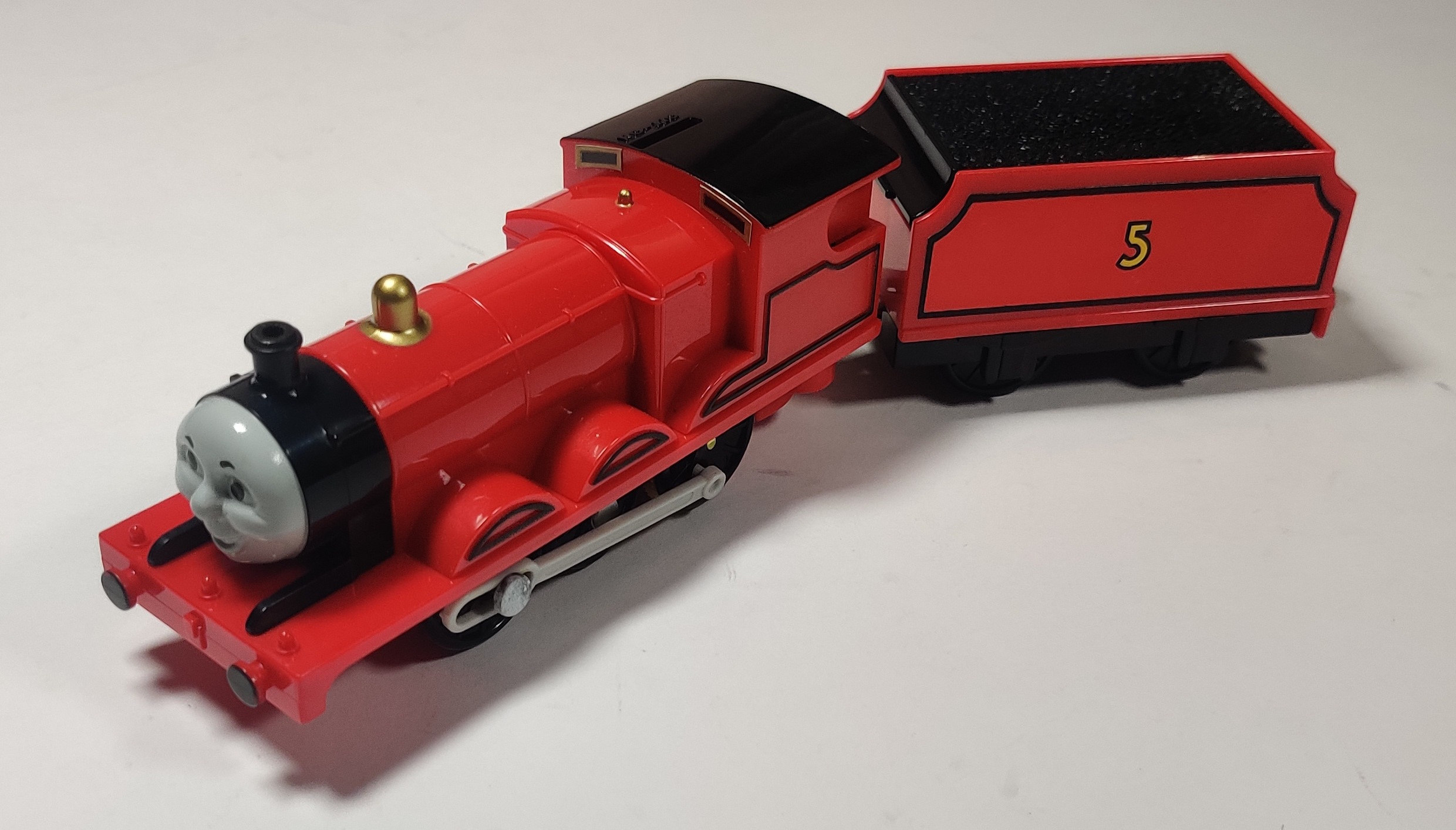
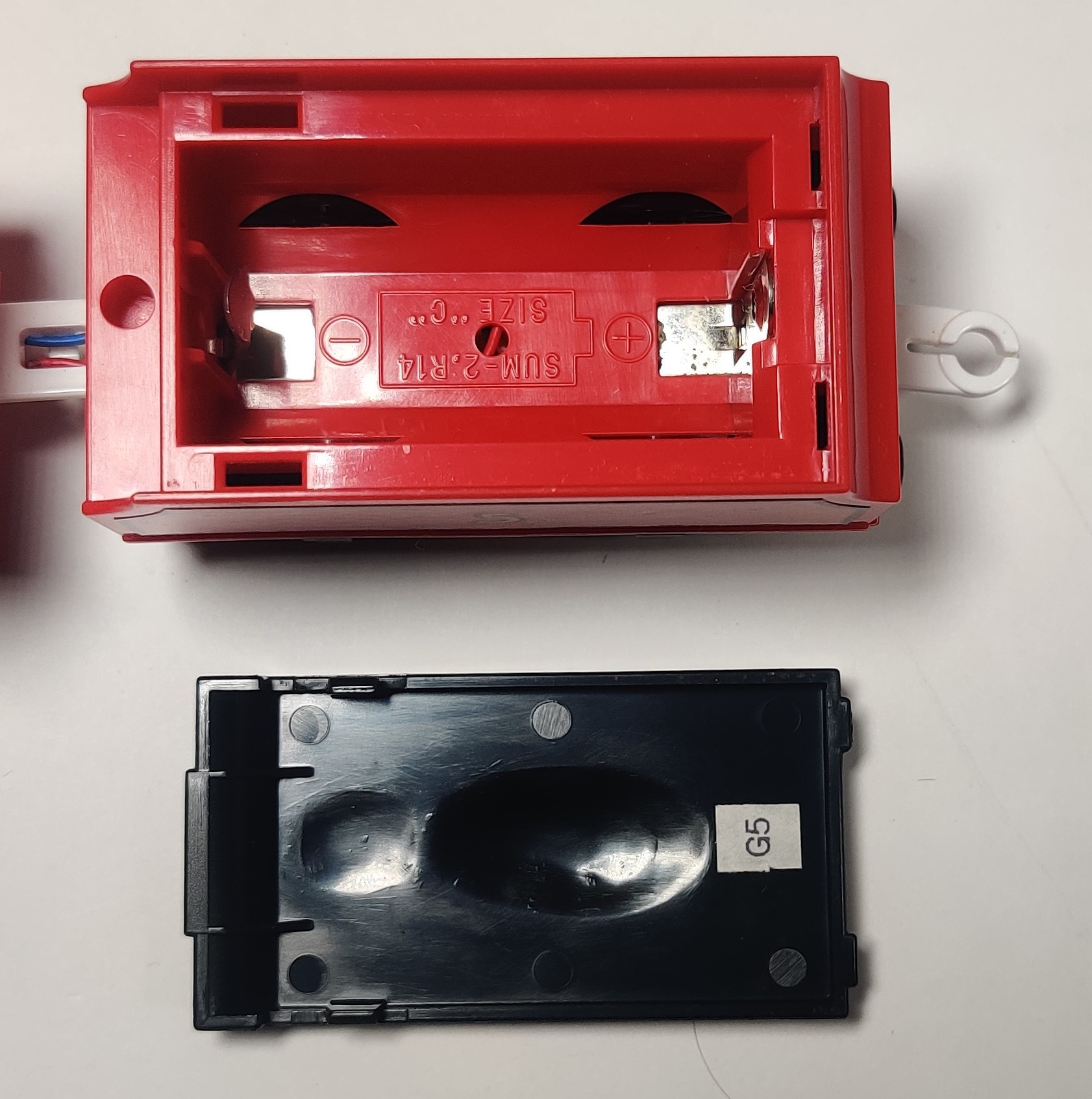
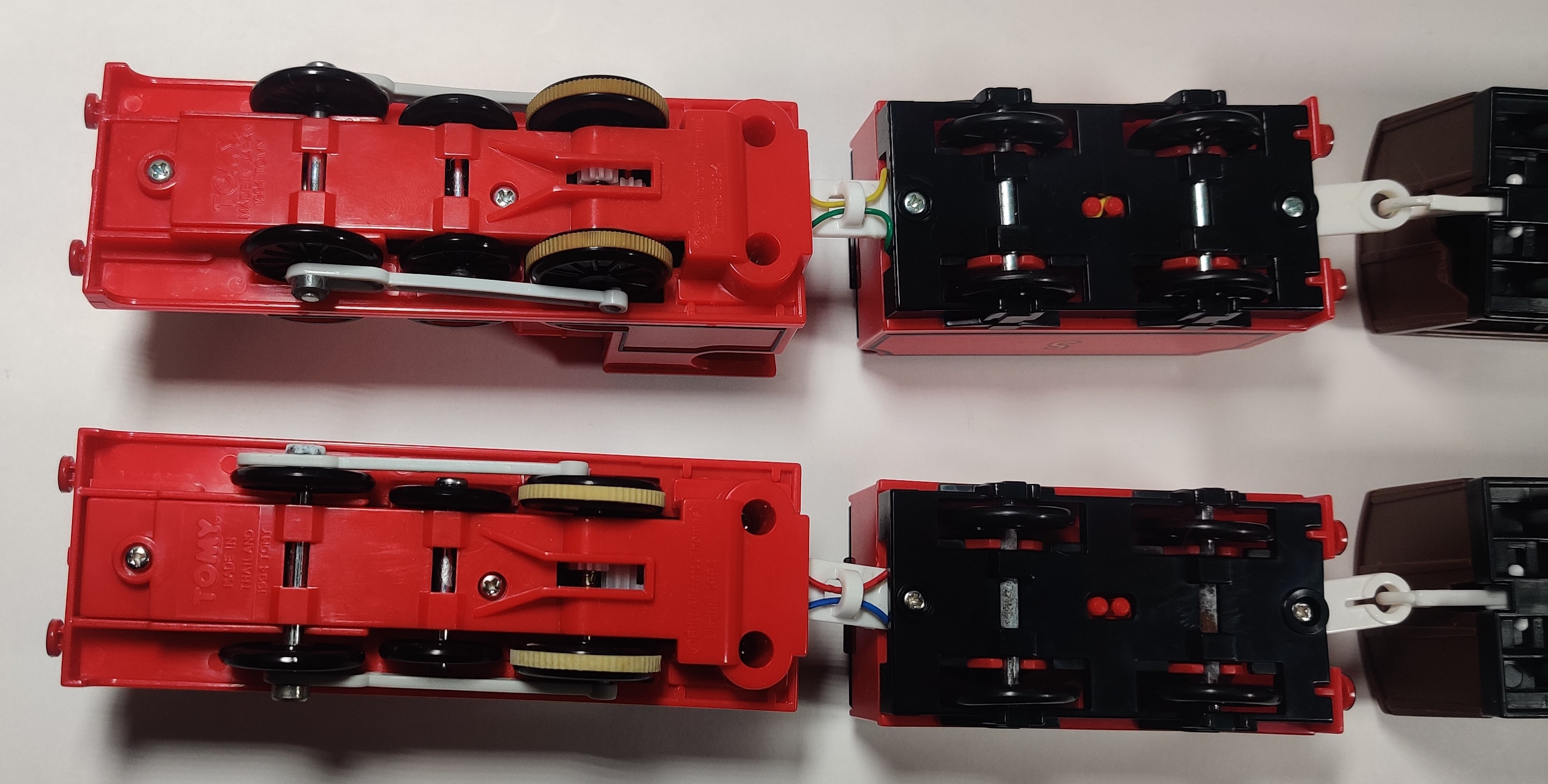
Mid 90s Thailand made Jameses have silver battery contacts and the slightly further spaced out traction tires used in the mid 90s. The chassis molding was updated to say made in Thailand. The one in my 1994 print run box was produced in July 1995, but I have a few earlier 1995 Jameses with some minor differences. The power switch on this James is also cracked - the plastic on older tender engine power switches are starting to contract to the point that they split around the attached metal contact and become inoperable.
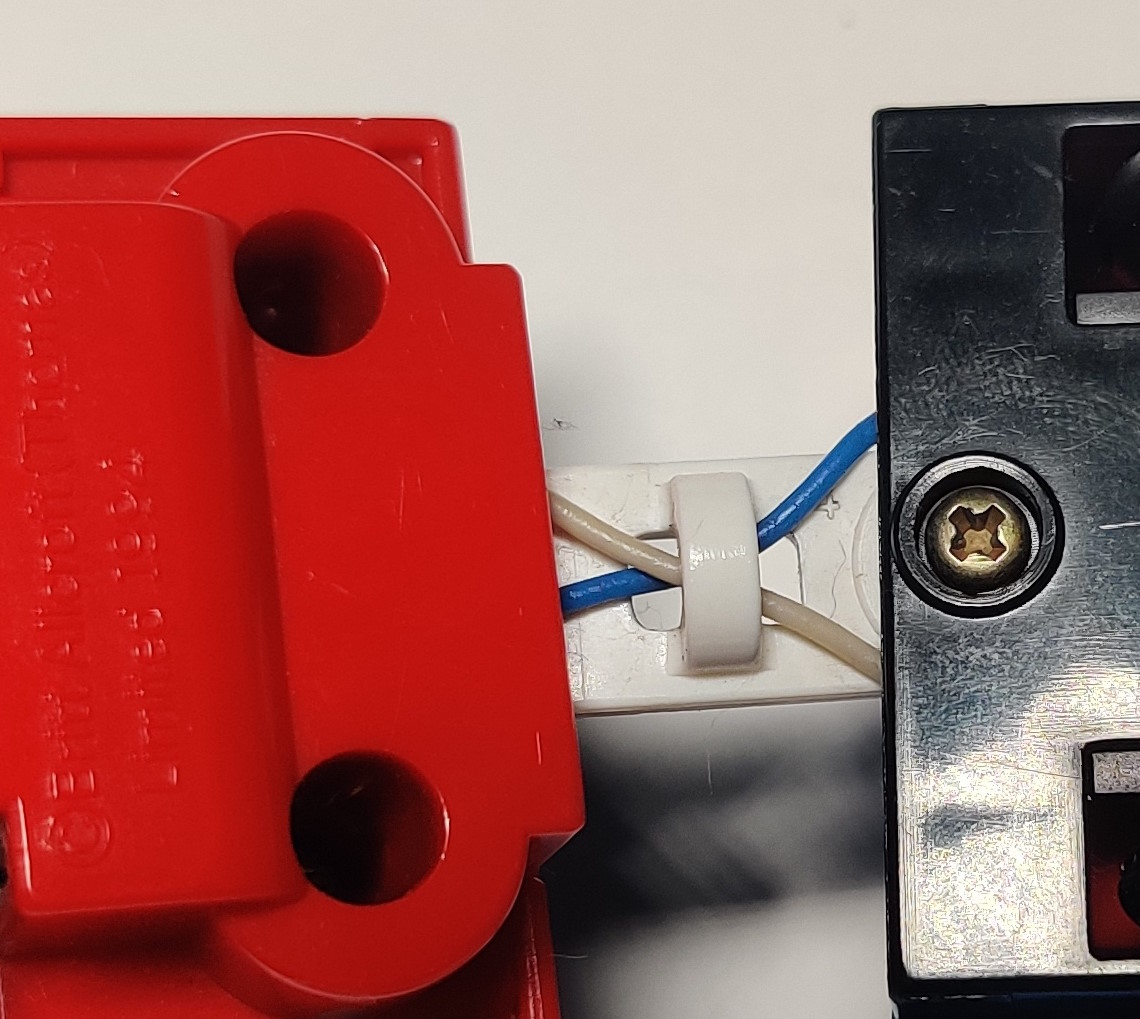
The earliest Thailand James I have from March 1995 has white and blue wires instead of the older green and yellow or later red and blue. This James also still uses the older still tender drawbar as well as a single split rear coupling. The use of older rigid drawbars seems to have continued in Thailand for a short time, as I have another James missing the coal load that has red and blue wires, the strain-relief rear coupling, but still the rigid drawbar. New strain-relief couplers are in use as well as the new flexible tender drawbar. Of the Jameses I have from this era with intact production codes, I have one from March, two from July, and one from November 1995.
Plarail James (Safety update) (1996)

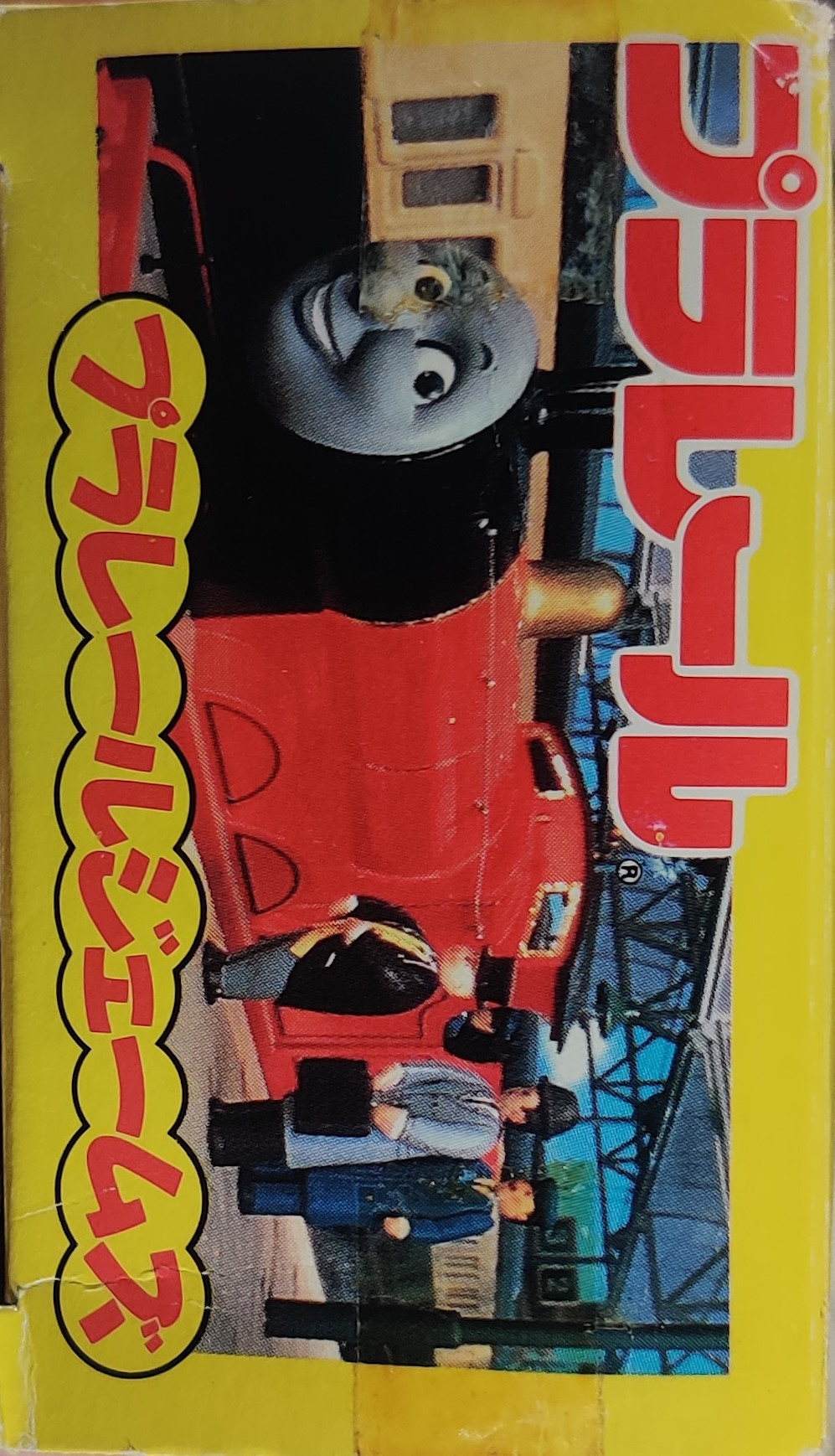

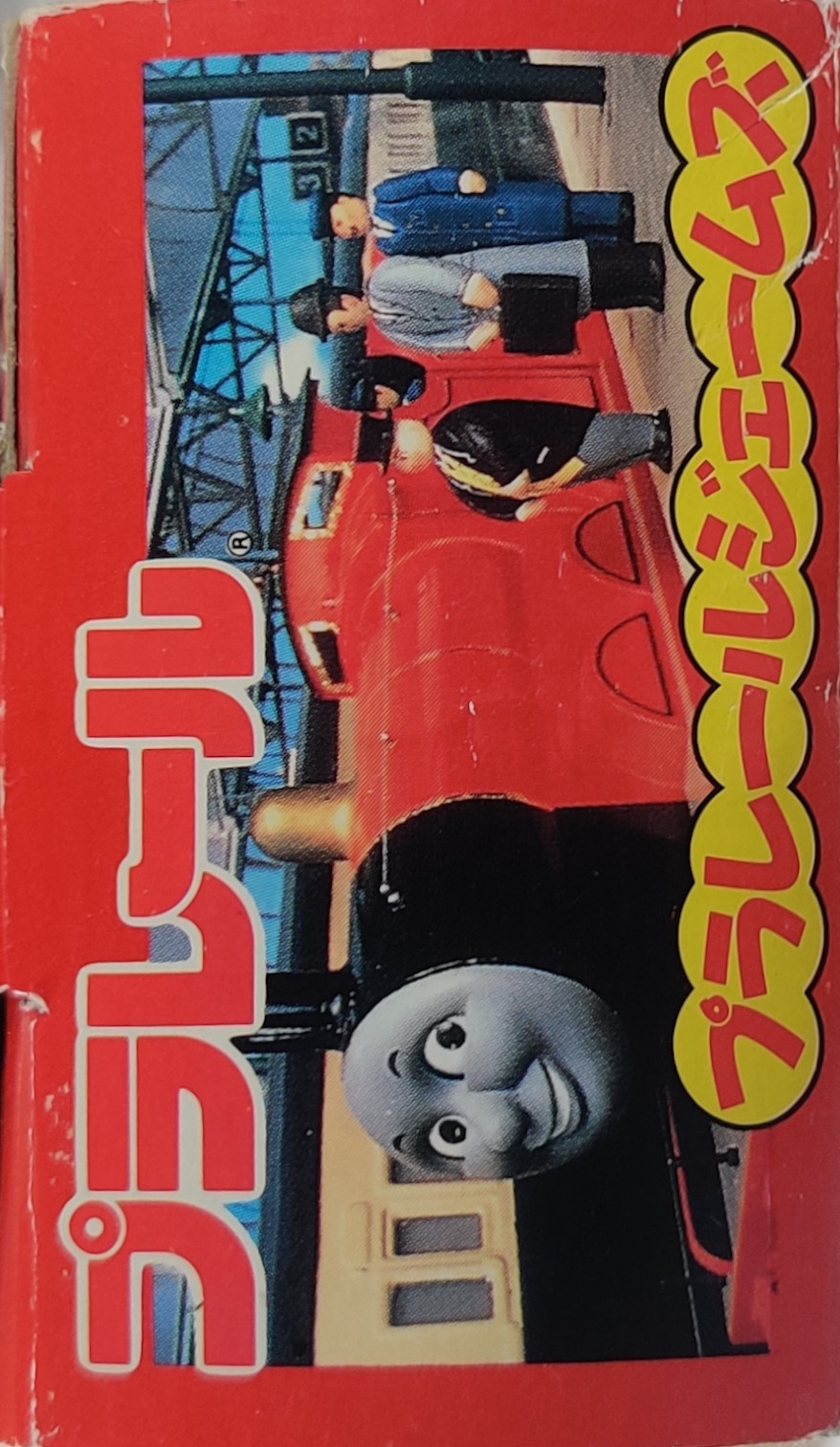


A new updated box was printed in 1996. This update added an additional safety warning box on the left side and changed the battery installation information again.
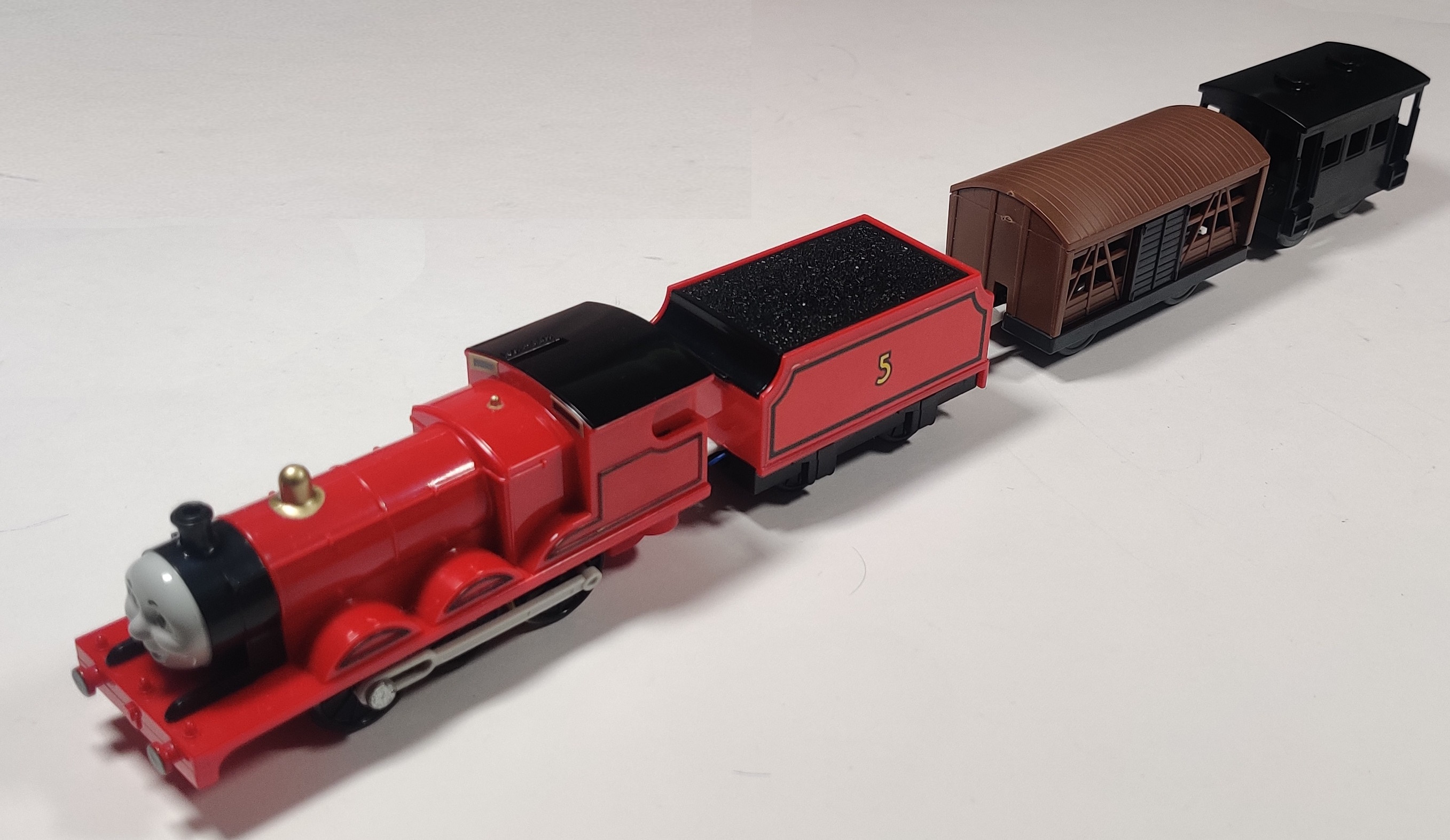
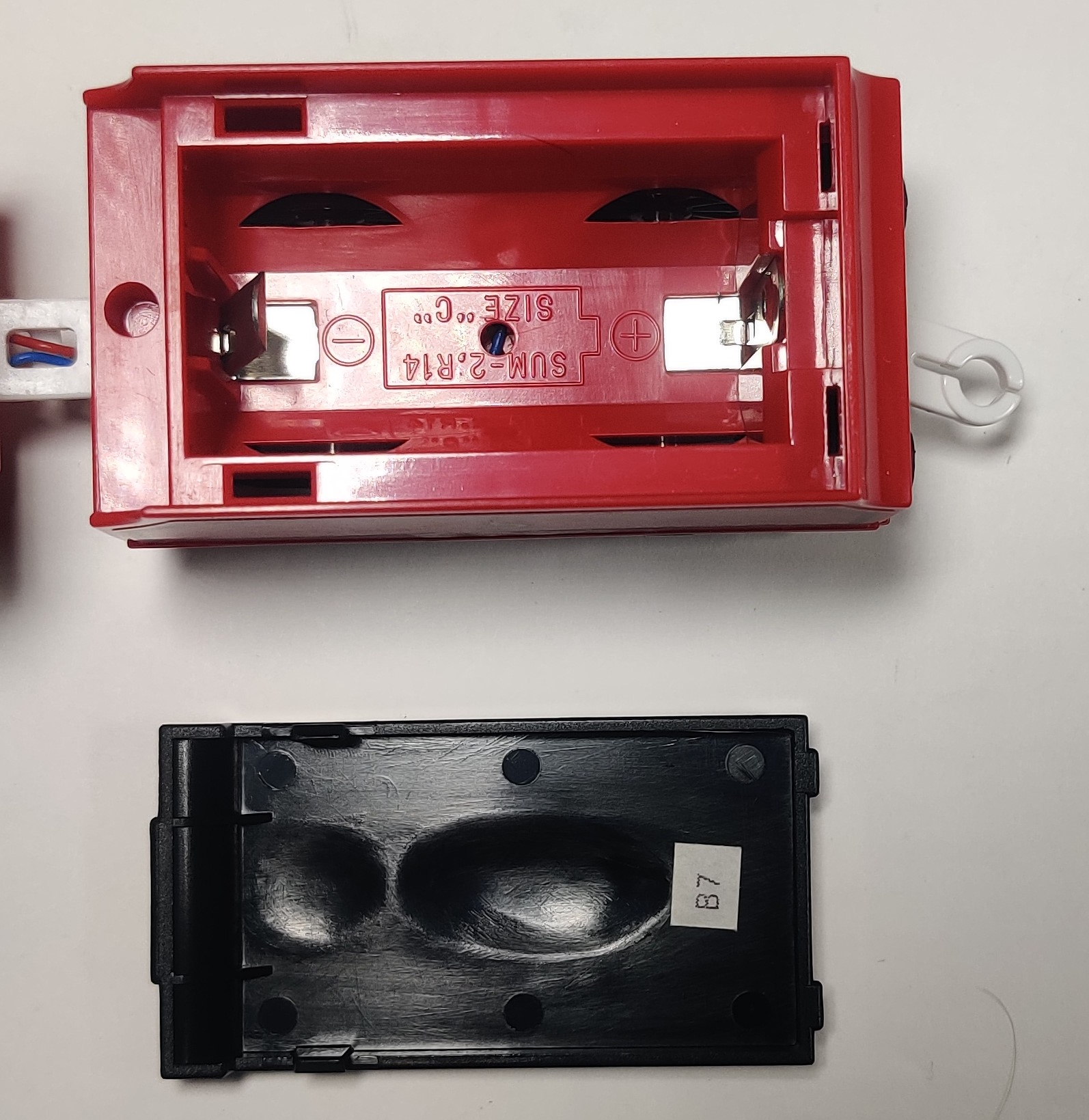
Jameses in this style of box were produced in 1996 and early 1997, and are identical to later 1995 Jameses other than the production code stickers. In 1997 a new box with updated incompatibility list was also printed. I do not currently own an example of this box run, although the 1999 print run box shown below is almost identical aside from the fact that the Tomy phone number on the back is bolded on the later box. These boxes would have contained Jameses produced after the first few months of 1997 and into 1998 and possibly 1999. These Jameses were the first version to be exported, first in the Battery Operated Rail System in 1997 and later Tomica World in 1998.
1375 James Accessory Set (Thomas Battery Operated Rail System) (1997)
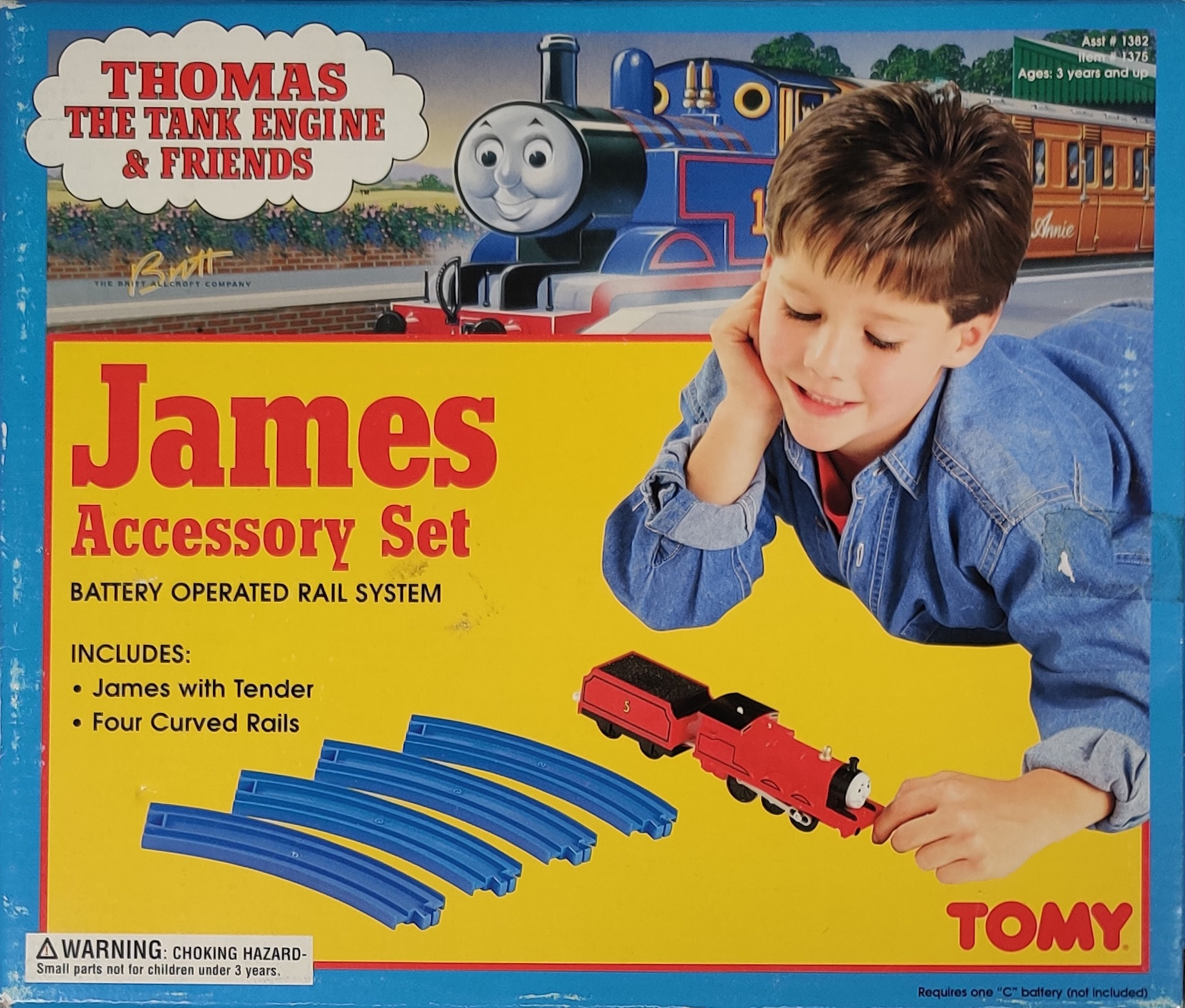
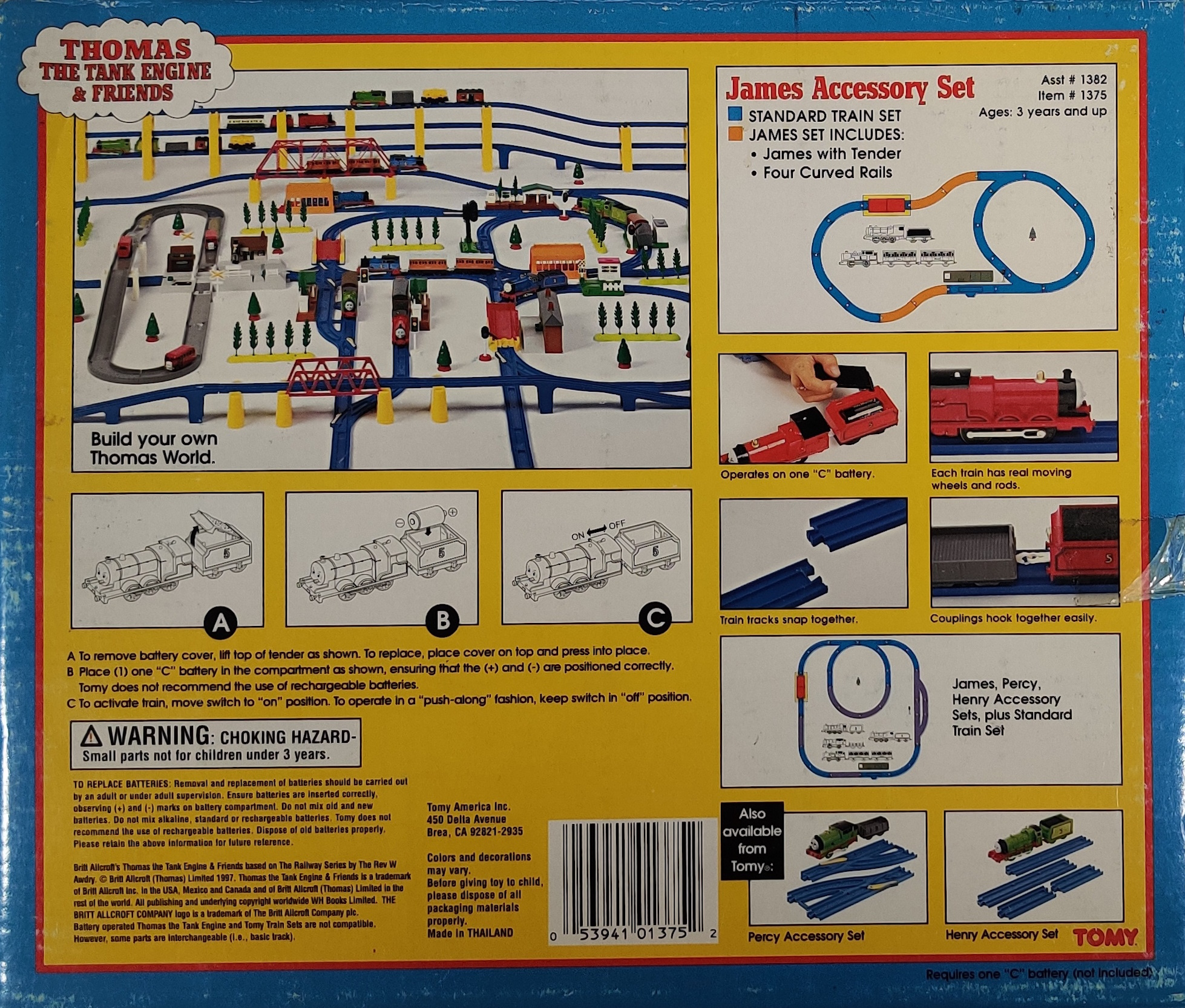
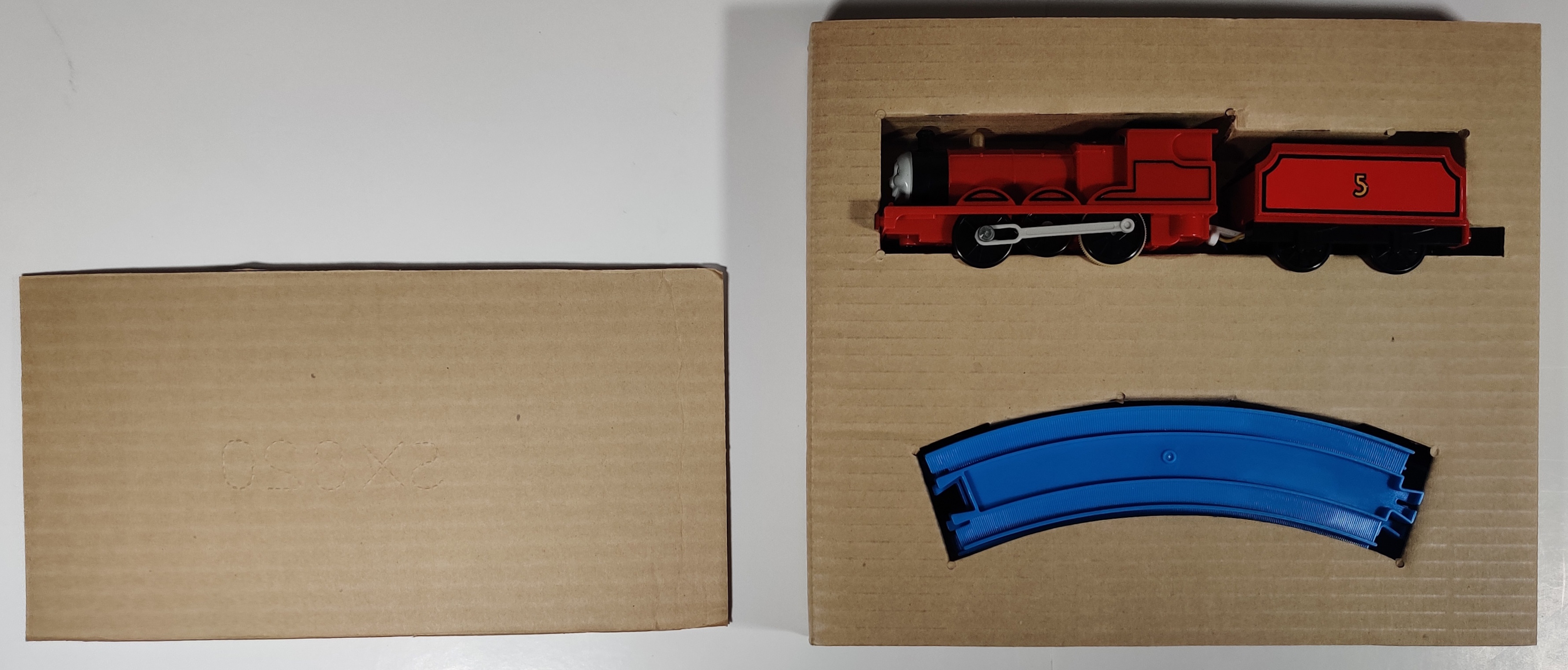
The first overseas exporting of Thomas-series Plarail began with the Battery Operated Rail System replacements for the Tomy Train Thomas series in the United States. These accessory packs are fairly uncommon and were the only way to buy characters other than Thomas until the expanded Tomica World range in 1998.
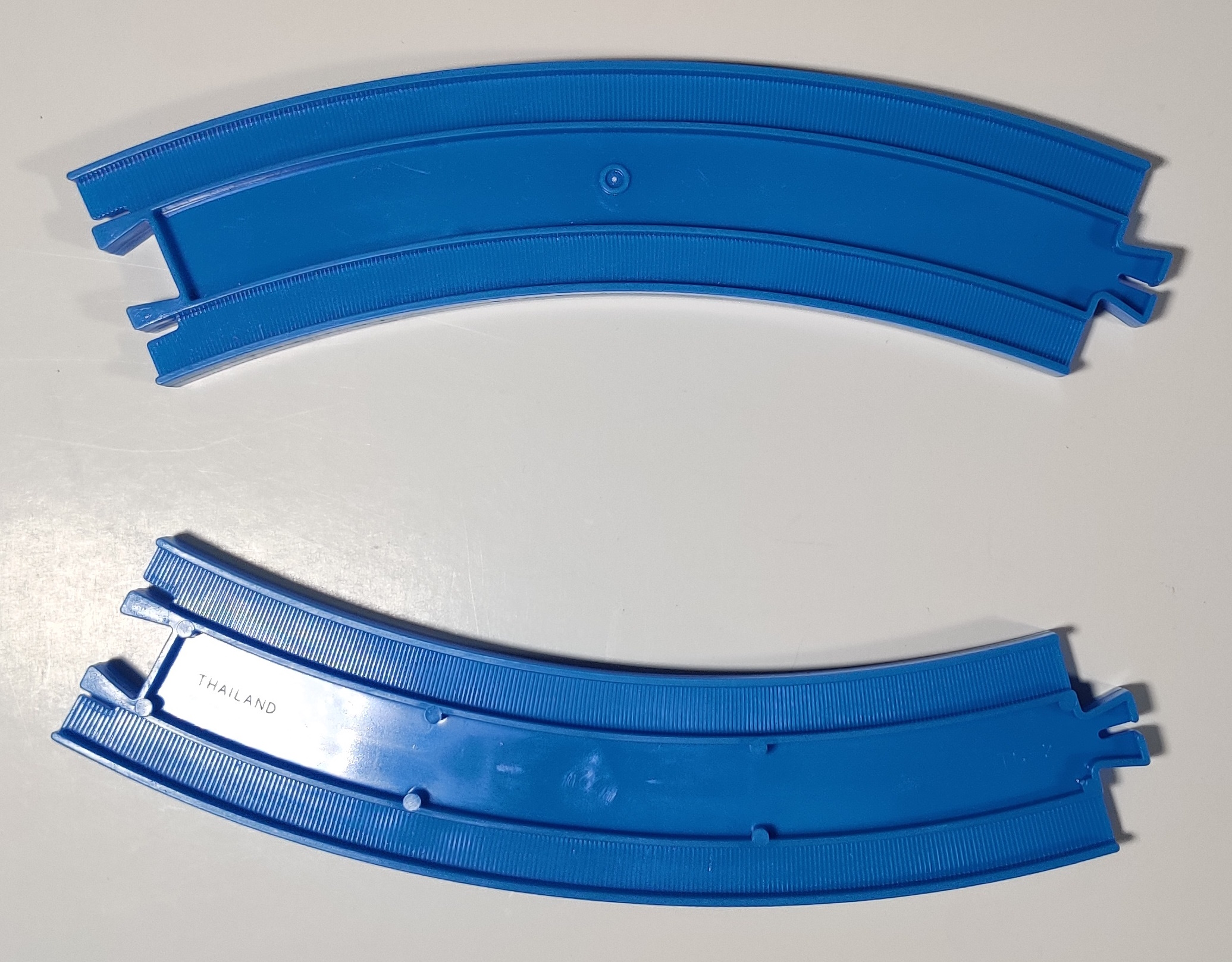
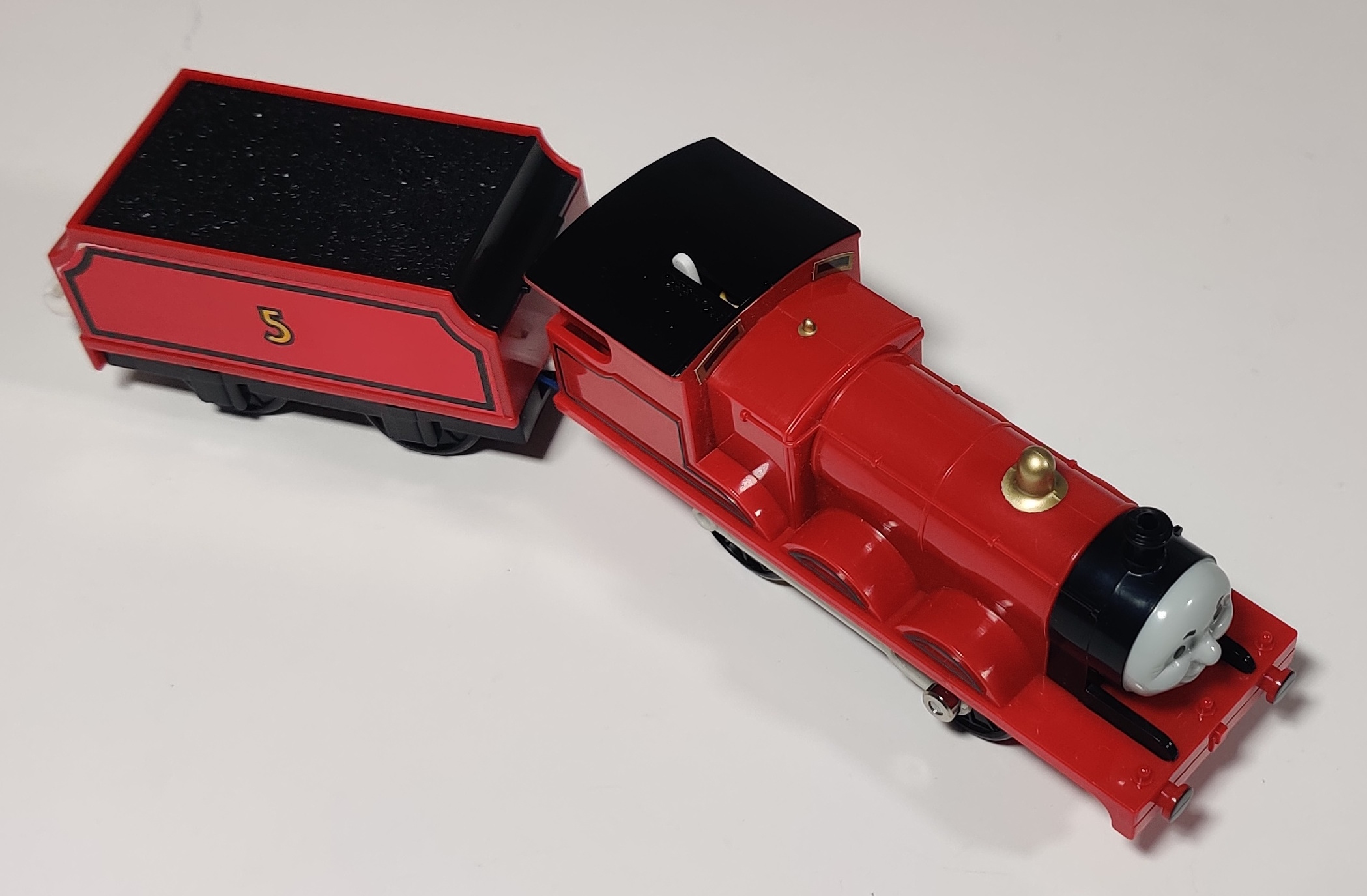

The James Accessory Set includes James and four curve rails.

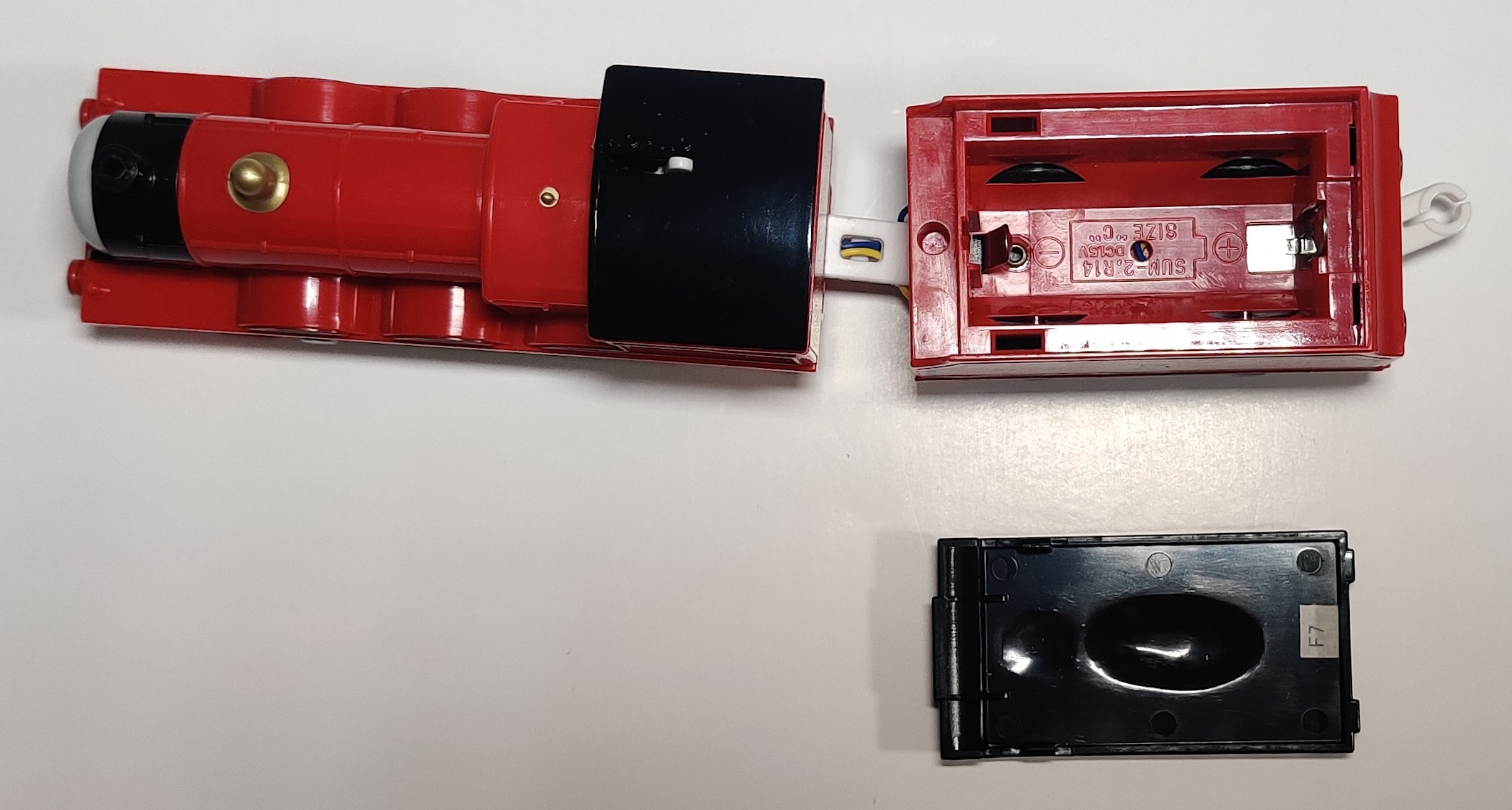
I bought this and the other two 1997 accessory sets unused and in very nice condition in 2021. All three engines from the packs were produced in June 1997. The James in my example of the pack has blue and yellow wires.
7444 James (Tomica World) (1998)

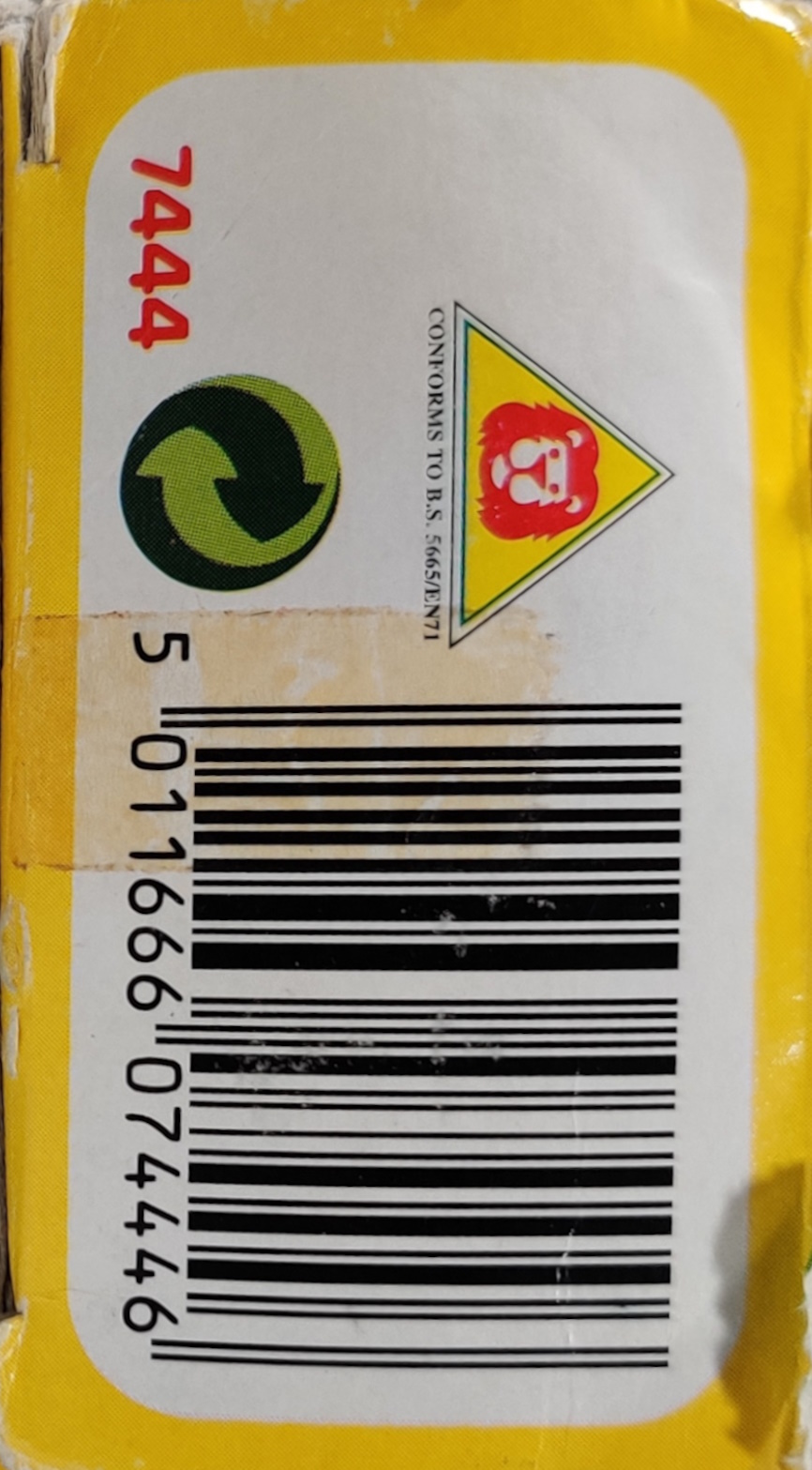

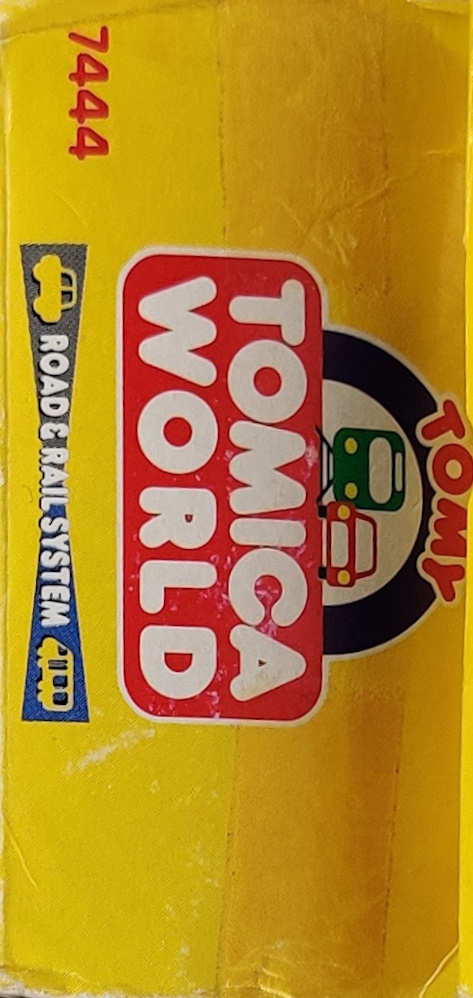


In 1998 as part of the Tomica World range James and his regular cattle van and brake van were released individually first in the 1998 yellow Tomica World Thomas packaging.
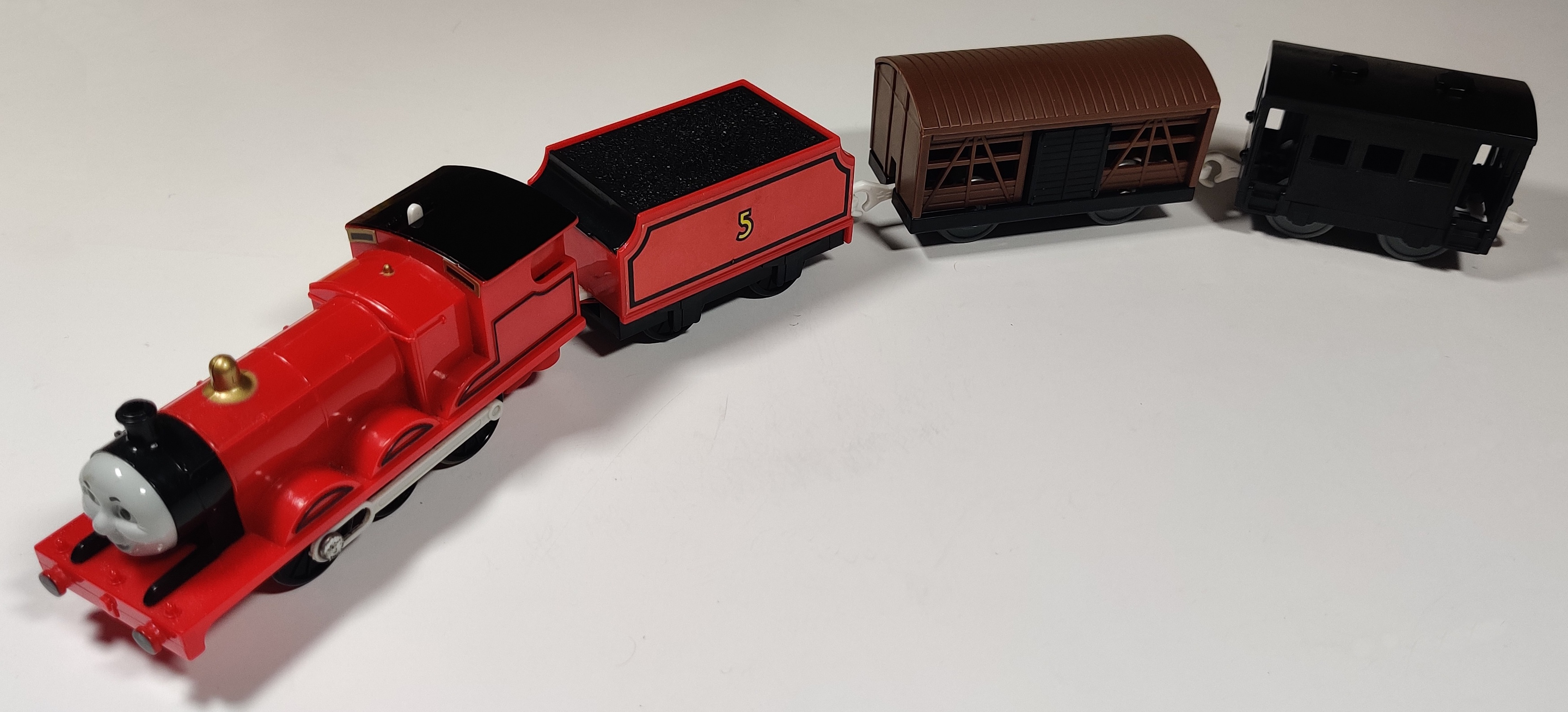
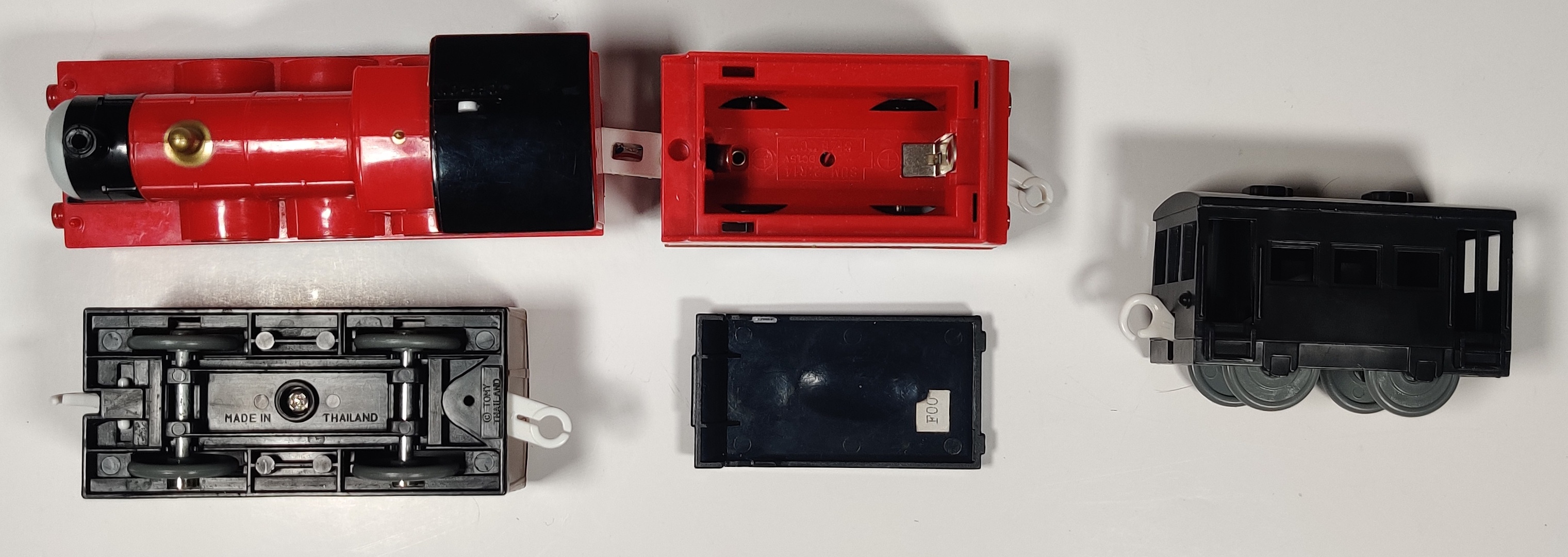
Early Tomica World James have hammered axles while this June 2000 production example has capped axles and a transitional set of rolling stock from when the small-chassis rolling stock had been updated with axle boxes but before the cattle van tooling was.
Plarail James (Capped axles) (1999)

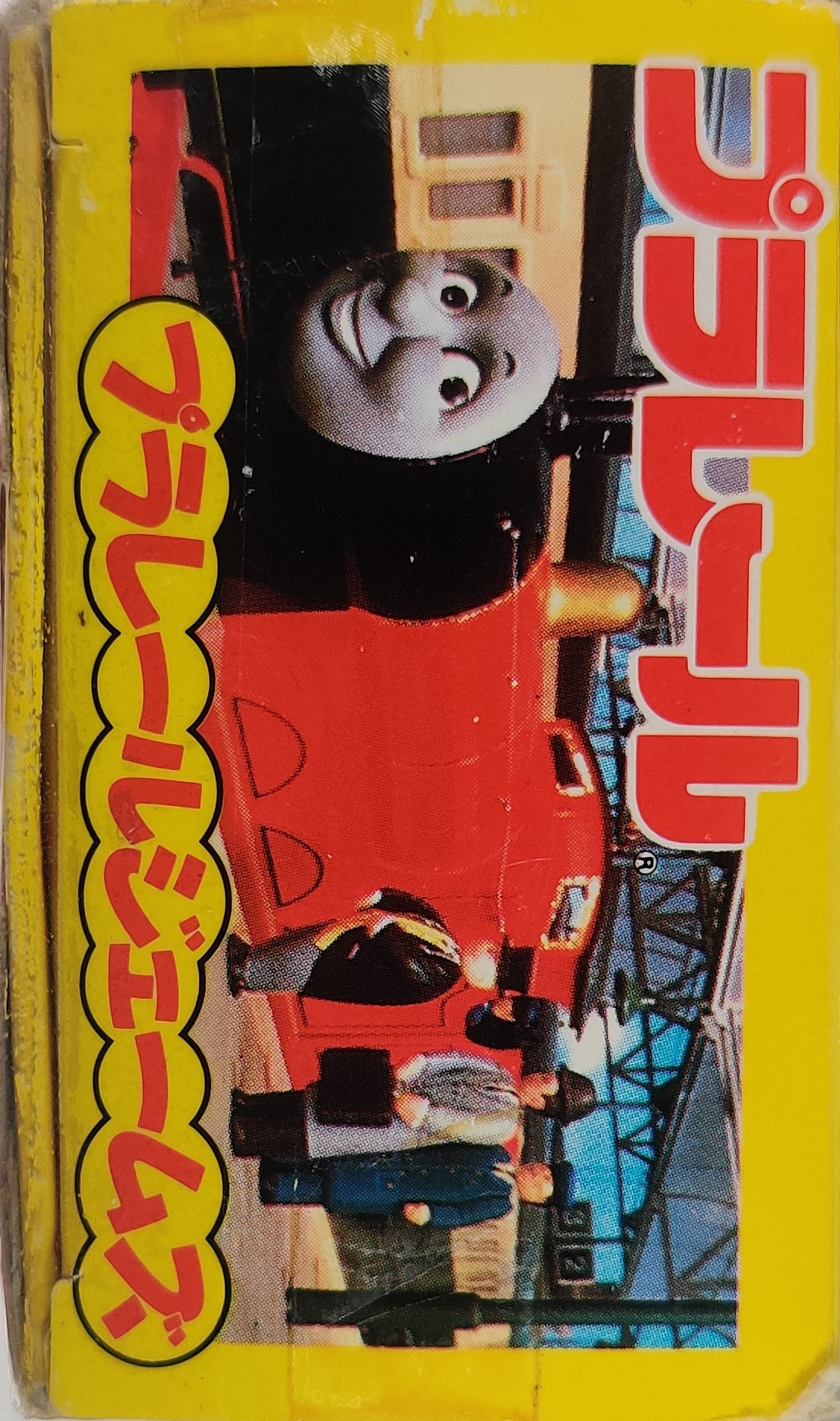

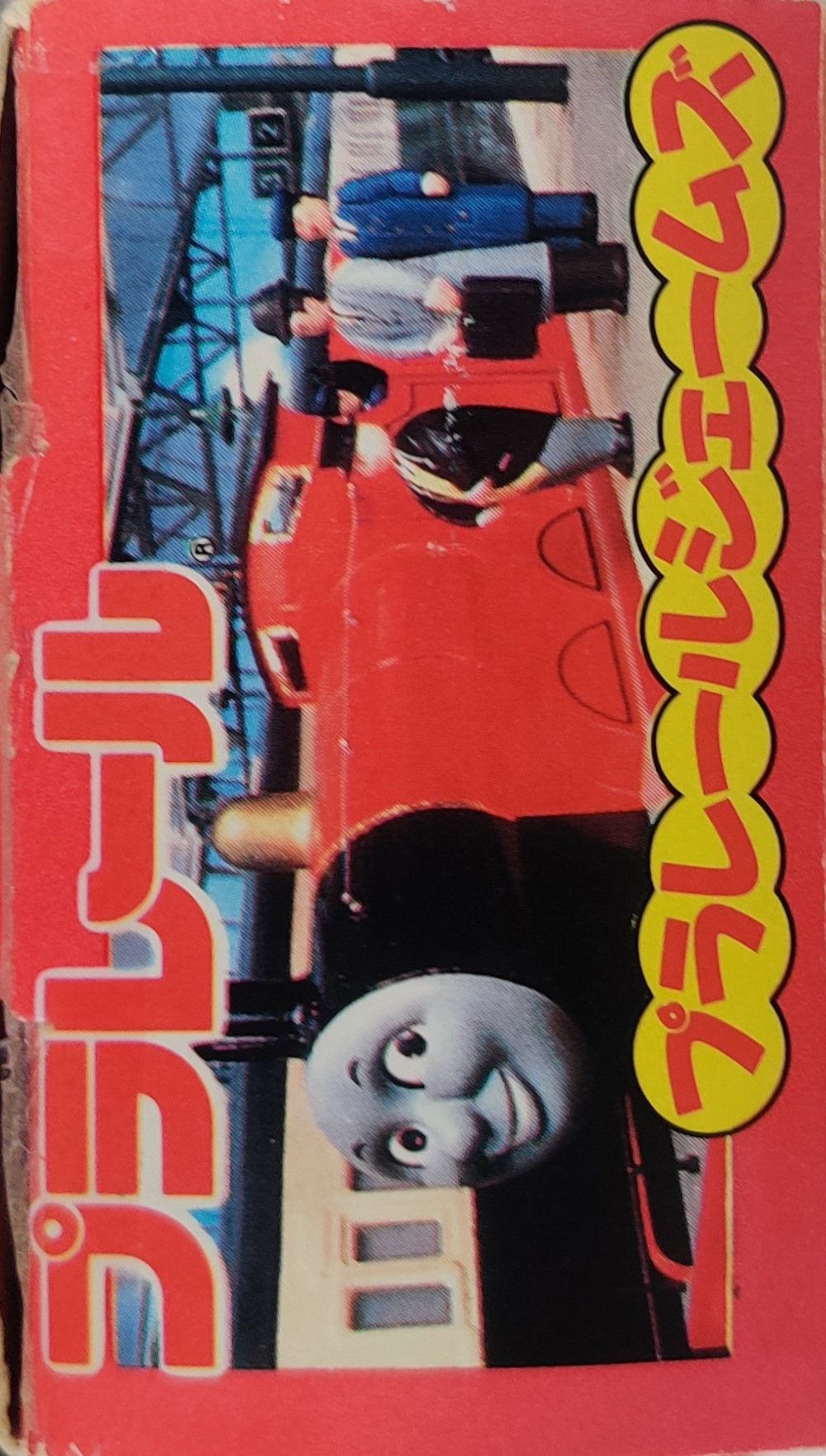


In 1999 a new print run of boxes was done that were seemingly used until the brand refresh in 2002. This box is almost identical to the 1997 print run boxes except with the Tomy telephone number on the back bolded. The compatibility list is the same late 1996 one used on the 1997 print boxes.
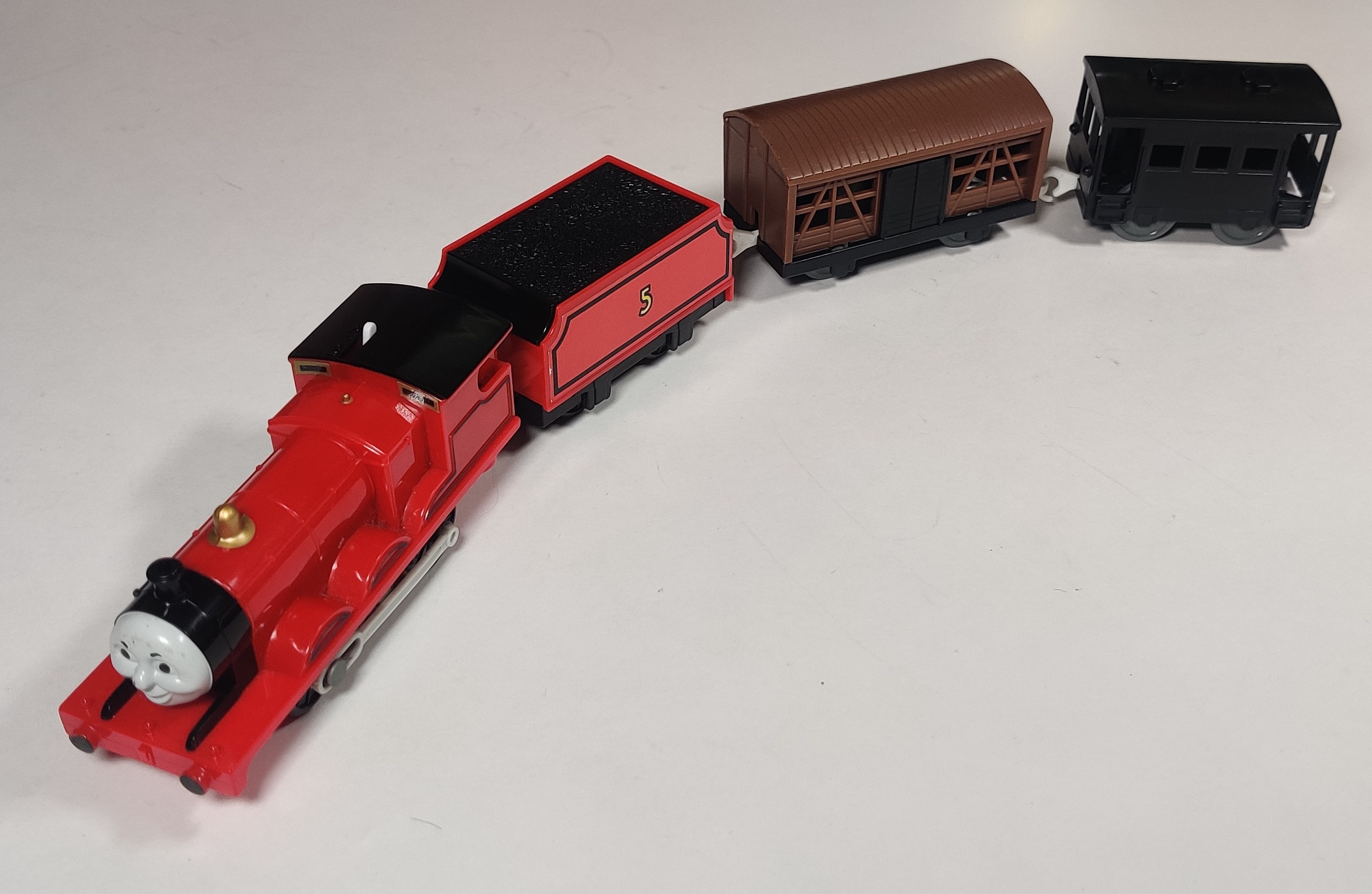
These Jameses, produced between 1999 and 2002, have a few minor changes from the mid 1990s Thailand iteration.
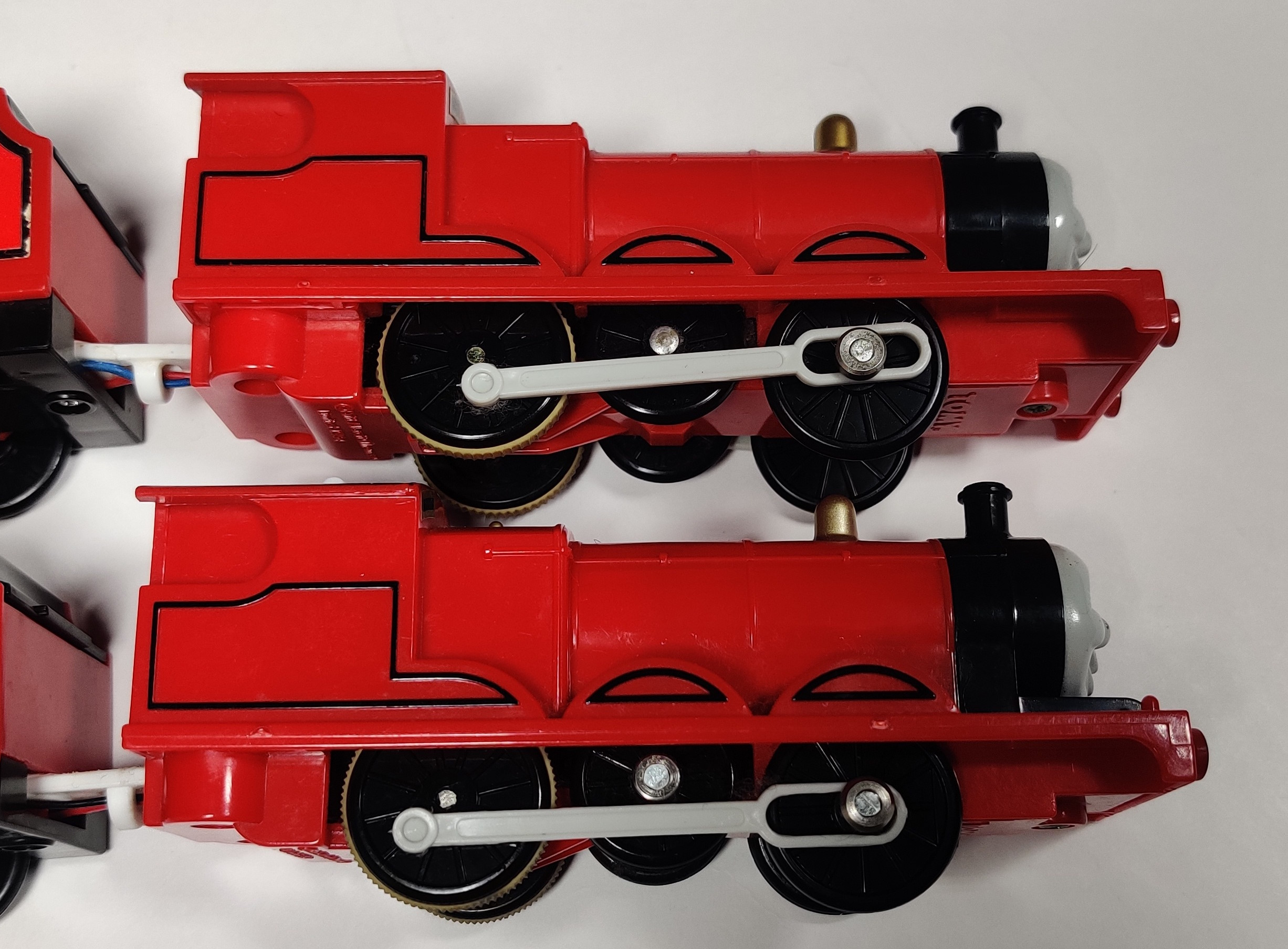
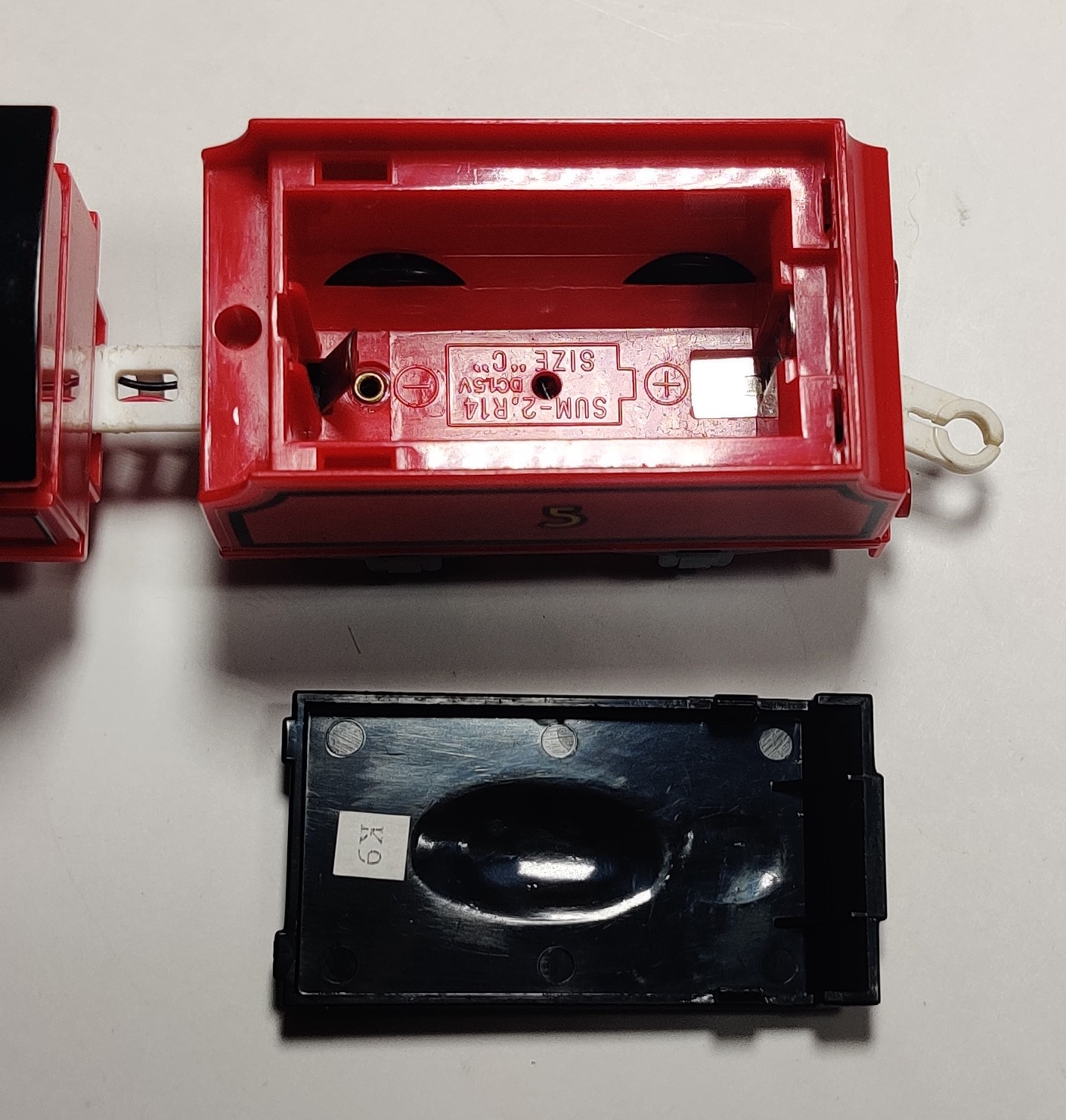
The middle axle has a cap instead of being hammered down to retain the two wheels. This cap actually end up fouling on the coupling rods from time to time, and Tomy actually started fitting the wheels of tender engines directly to their axles years later. Some 1999 Jameses have red and black wiring instead of red and blue.
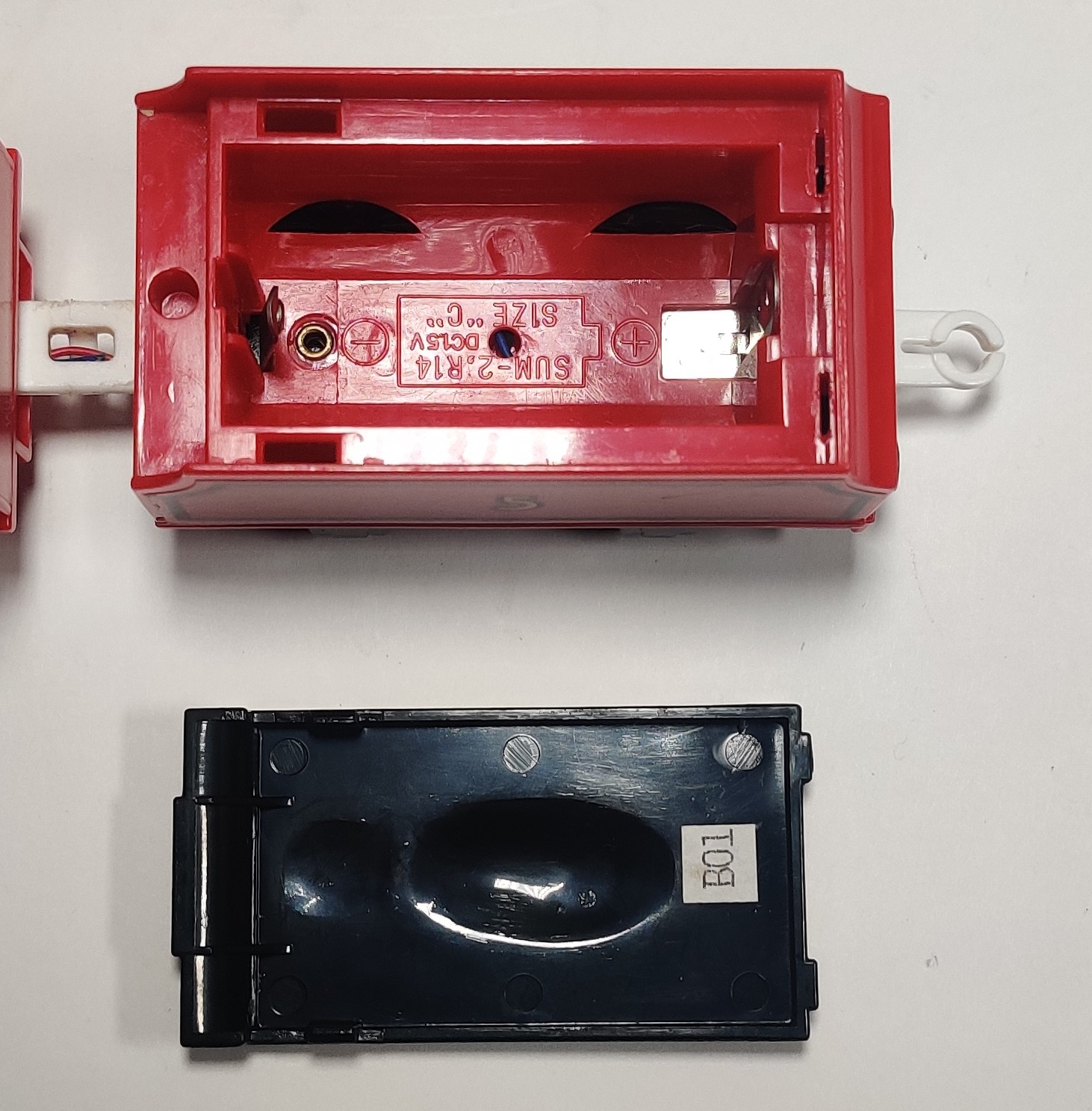
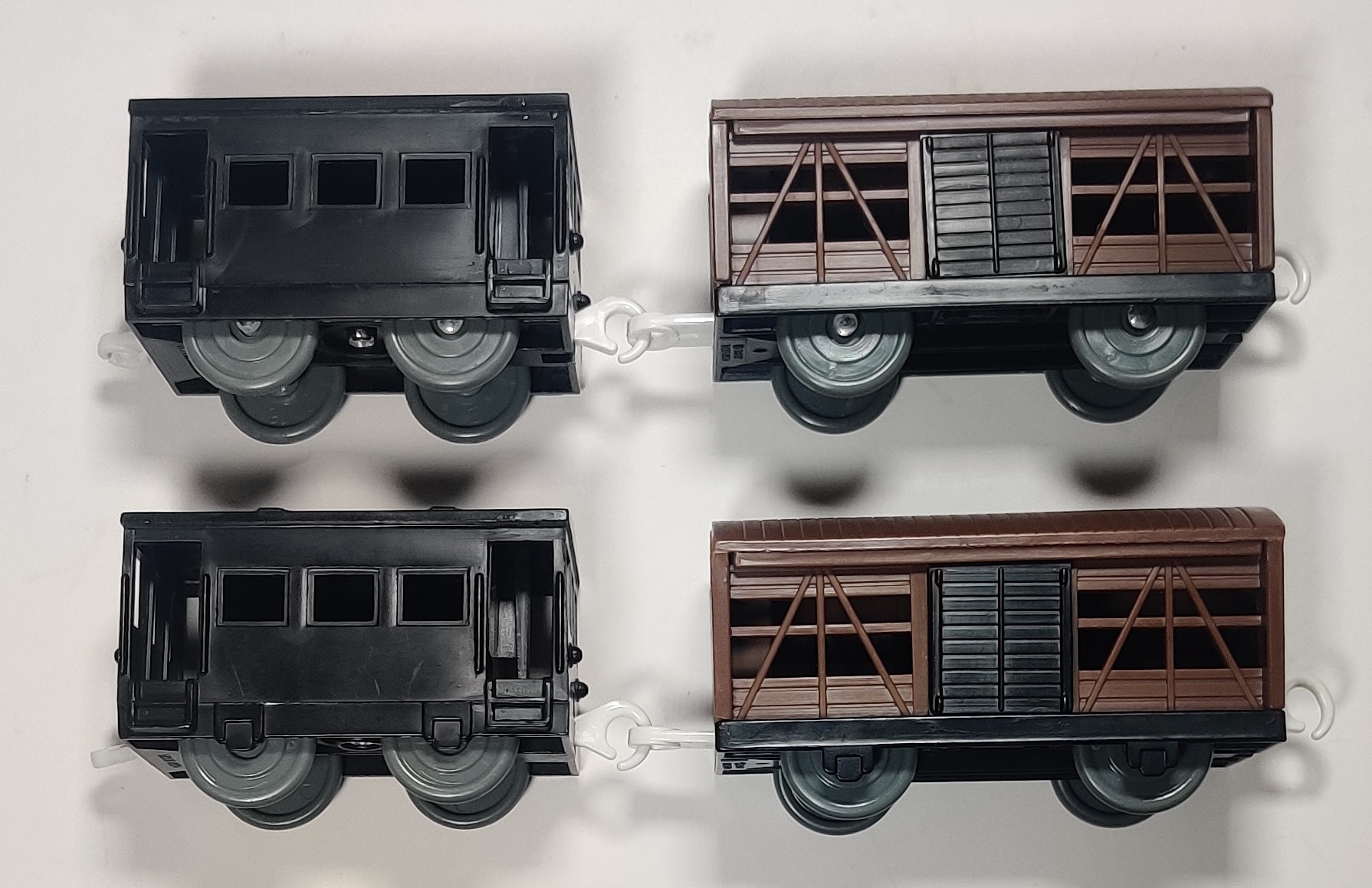
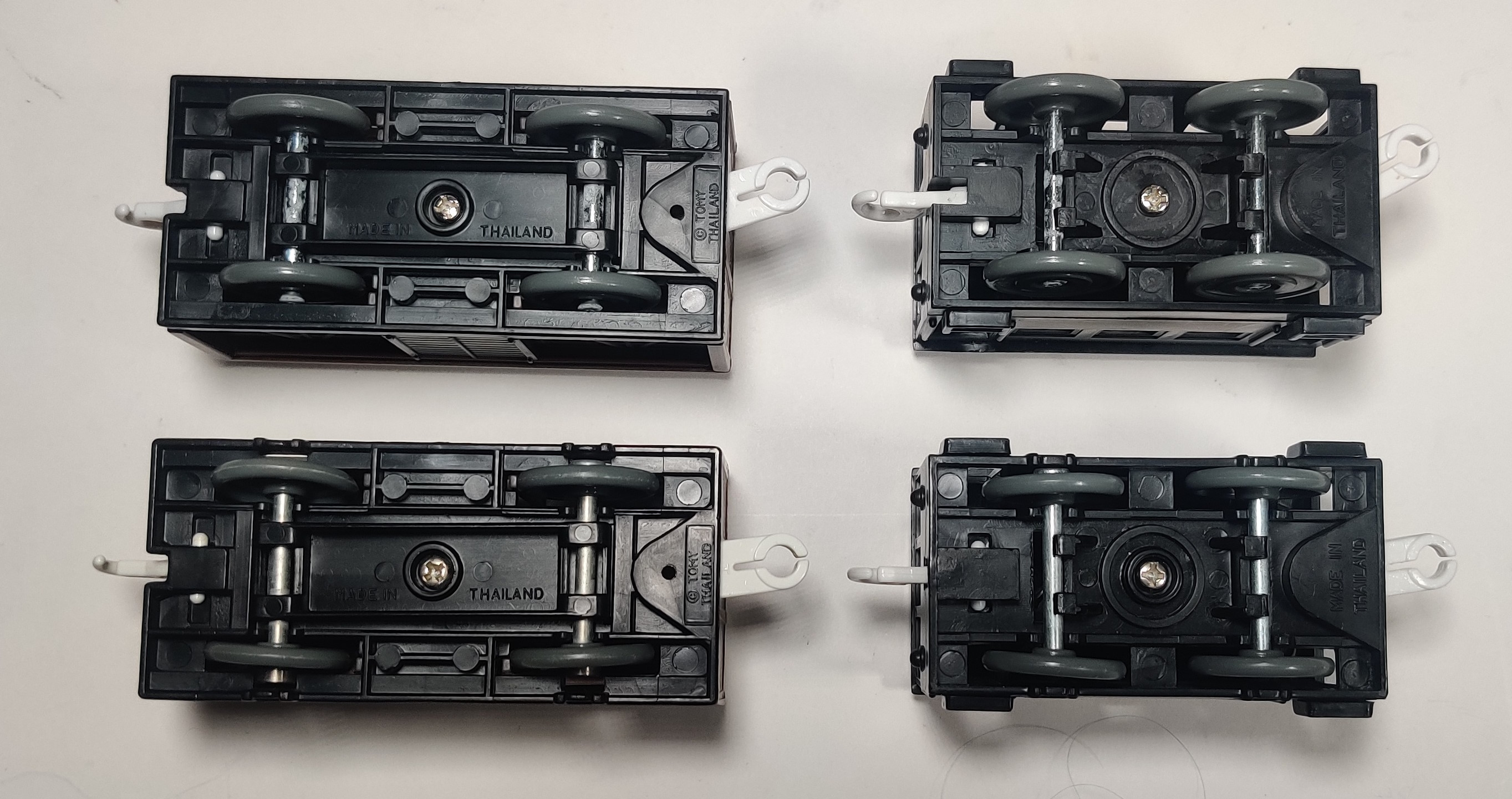
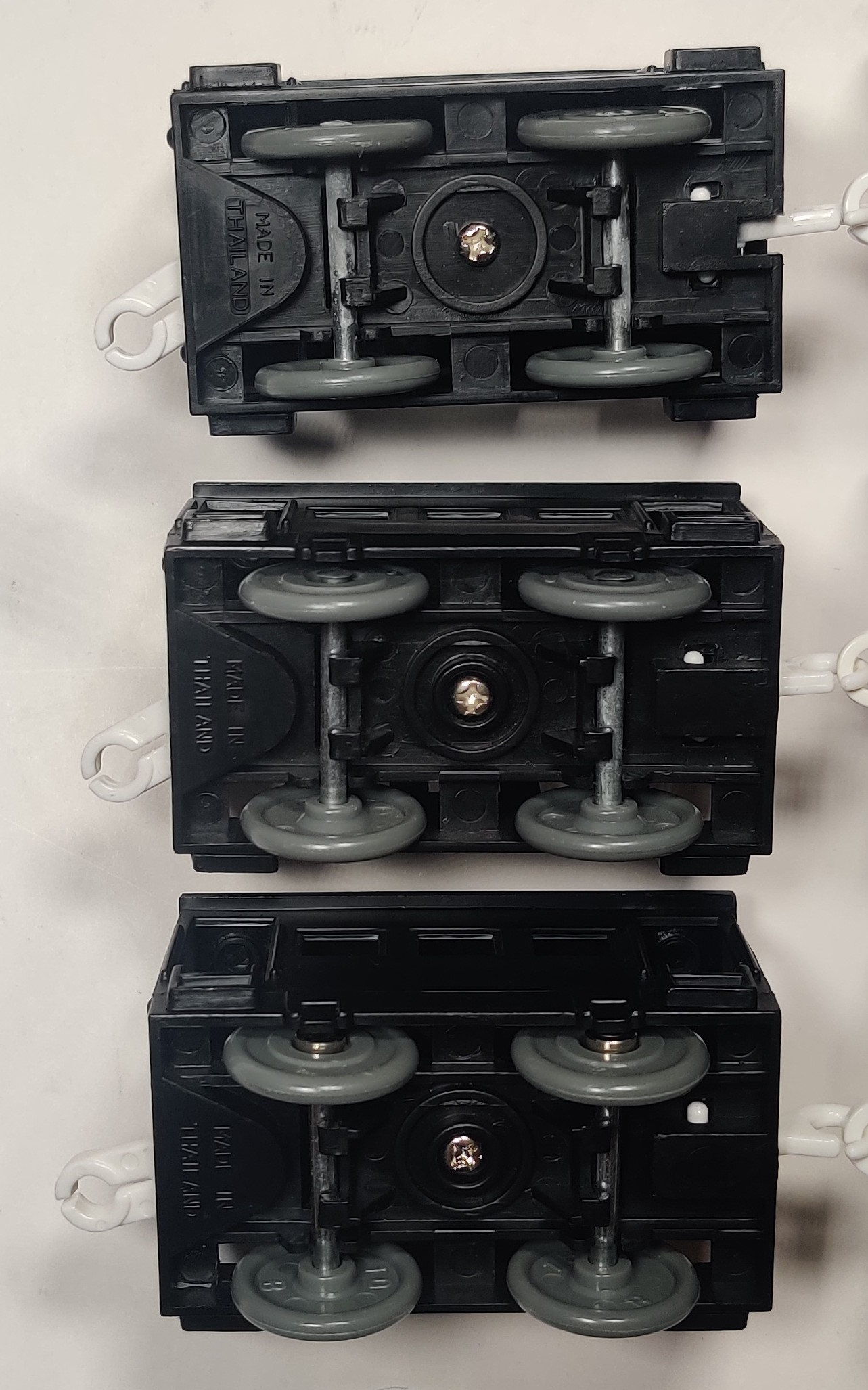
In the very early 2000s the chassis for the trucks was modified to include axle boxes as well as an additional support around the screw of the brake van. As noted above, the chassis for the short-chassis rolling stock was updated before the one for the cattle van. On the early 2001 example in my 1999 print box, the cattle van has the new capped axles while the brake van has the old hammered ones, probably because the small stubby chassis did not fit them as well. Later examples have capped axles on both cars. The 1999 print boxes appear to have been the last batch of boxes produced for engines introduced before 1998.
7444 James (Tomica World (U.K.)/Motorized Road & Rail (U.S.)) (2001)
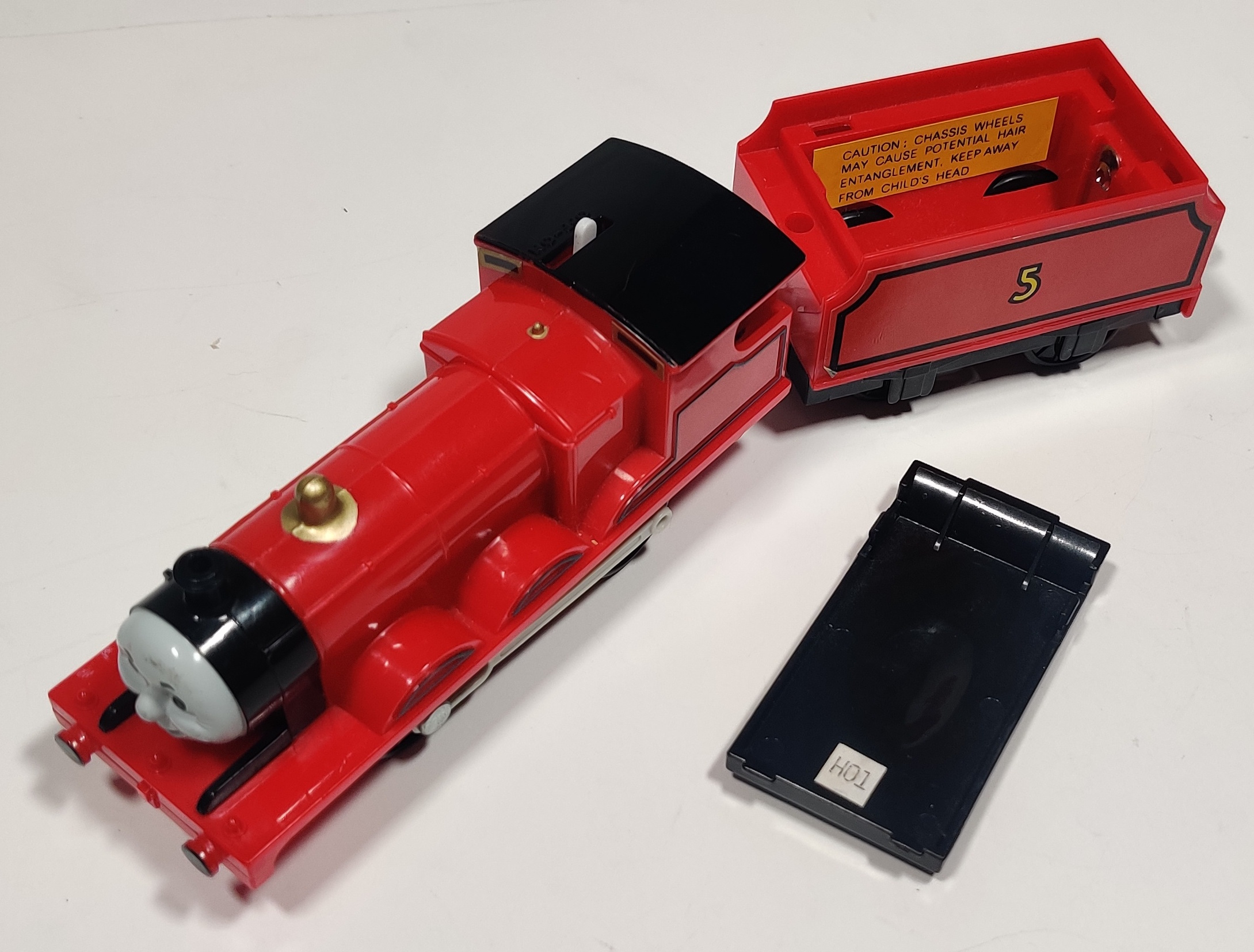
James was released in red and blue Tomica World packaging in Europe and in blue Motorized Road & Rail packaging in the United States in 2001. These releases still use the old painted-face version of James and, in the United States, include a warning about hair entanglement.
James (Tightened dome paint) (2002)
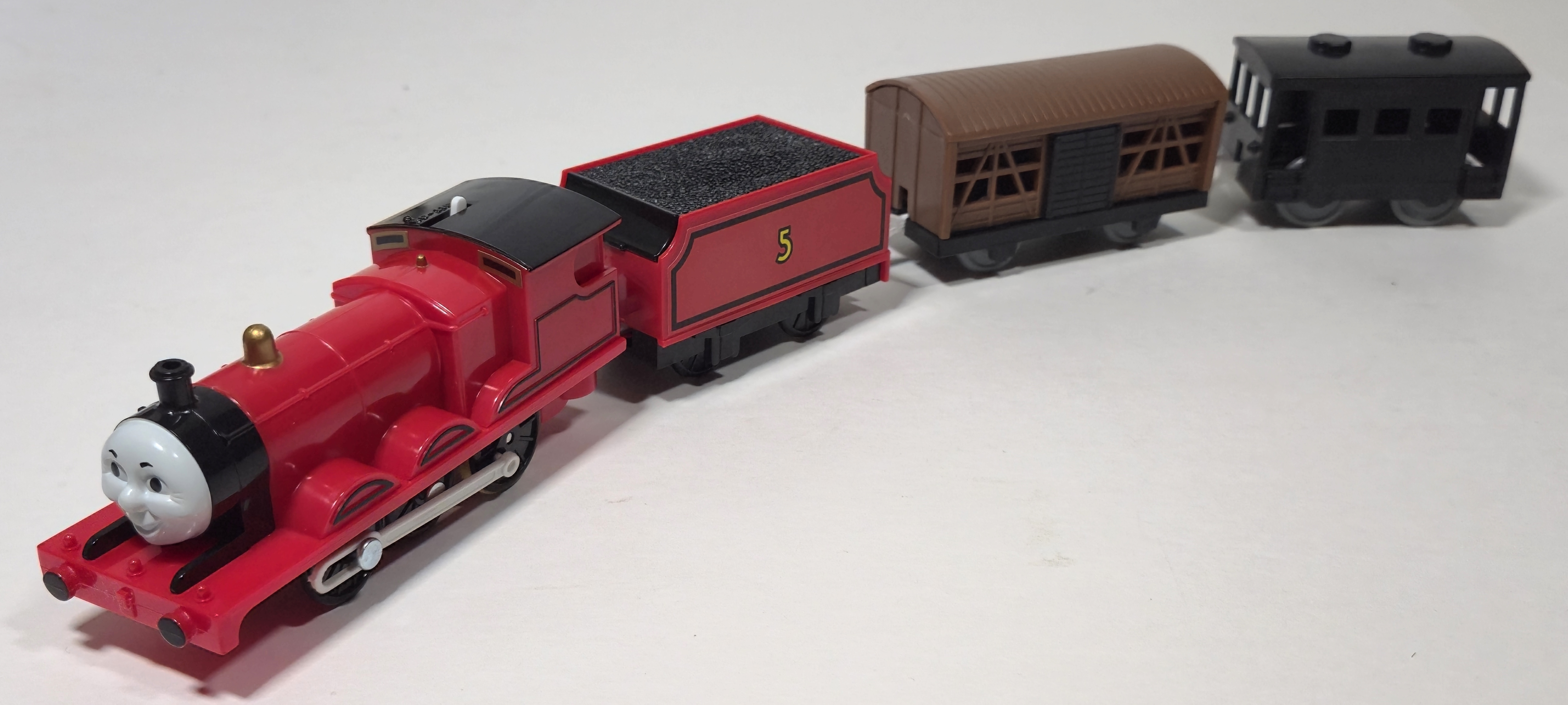
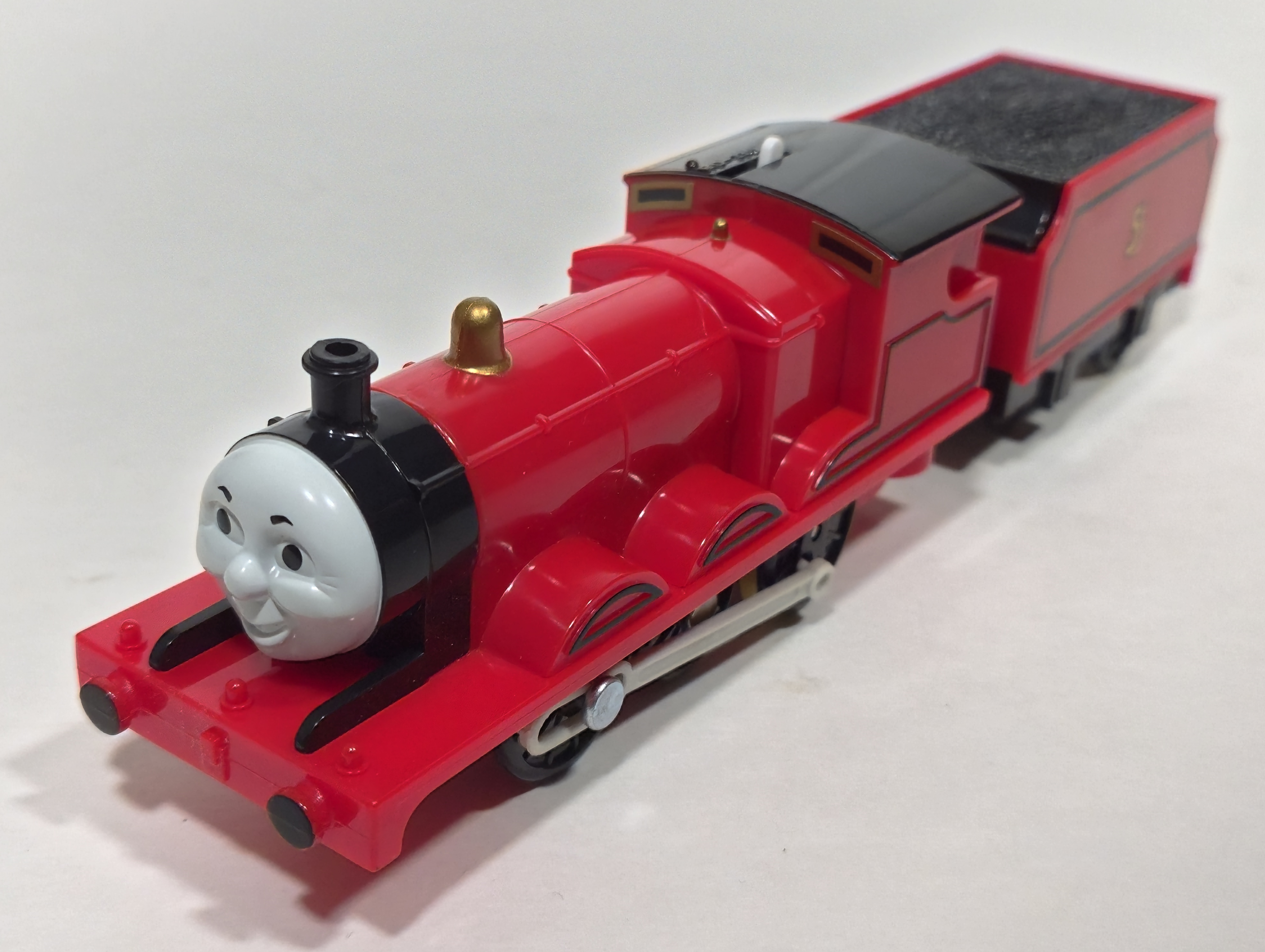
By April 2002 Tomy had begun applying the gold paint around the dome in a more controlled fashion, eliminating the wide rim of gold paint around the base of the dome. These James' still have molded, painted faces and the more tight dome painting was carried forward to the 2003 redesigned James.
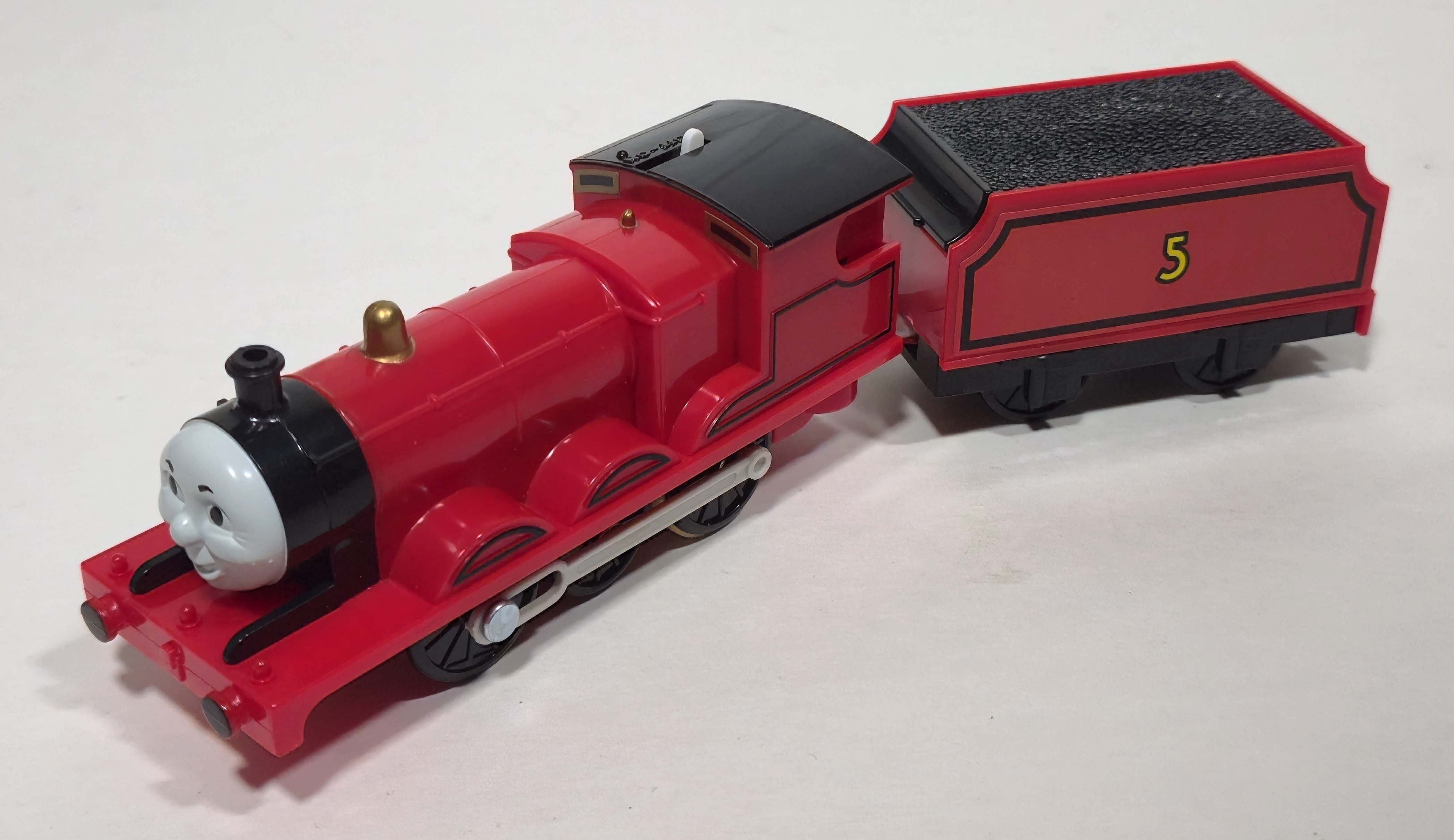
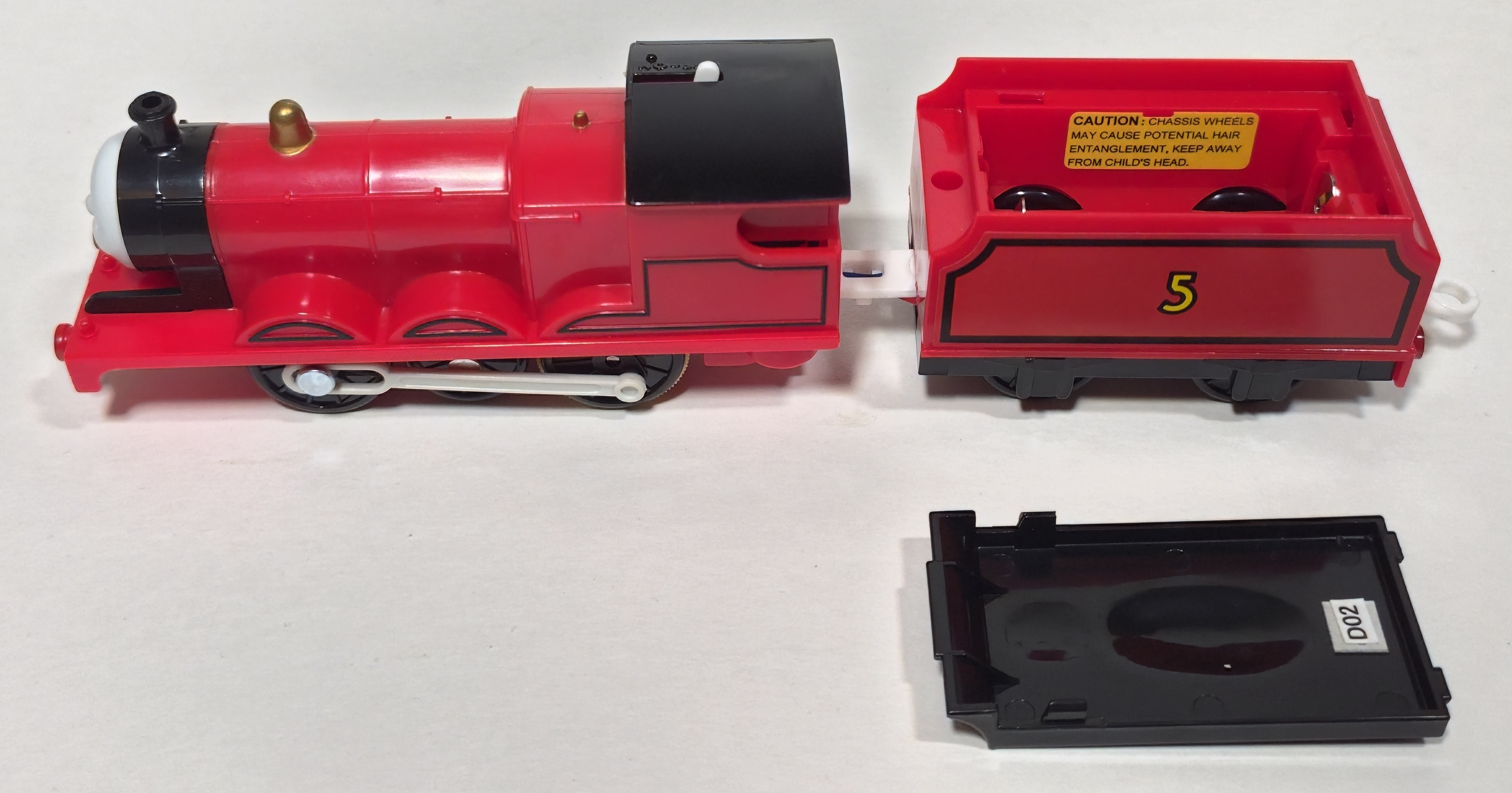
This James is an export market example from an American copy of the James at Wellsworth Station set.
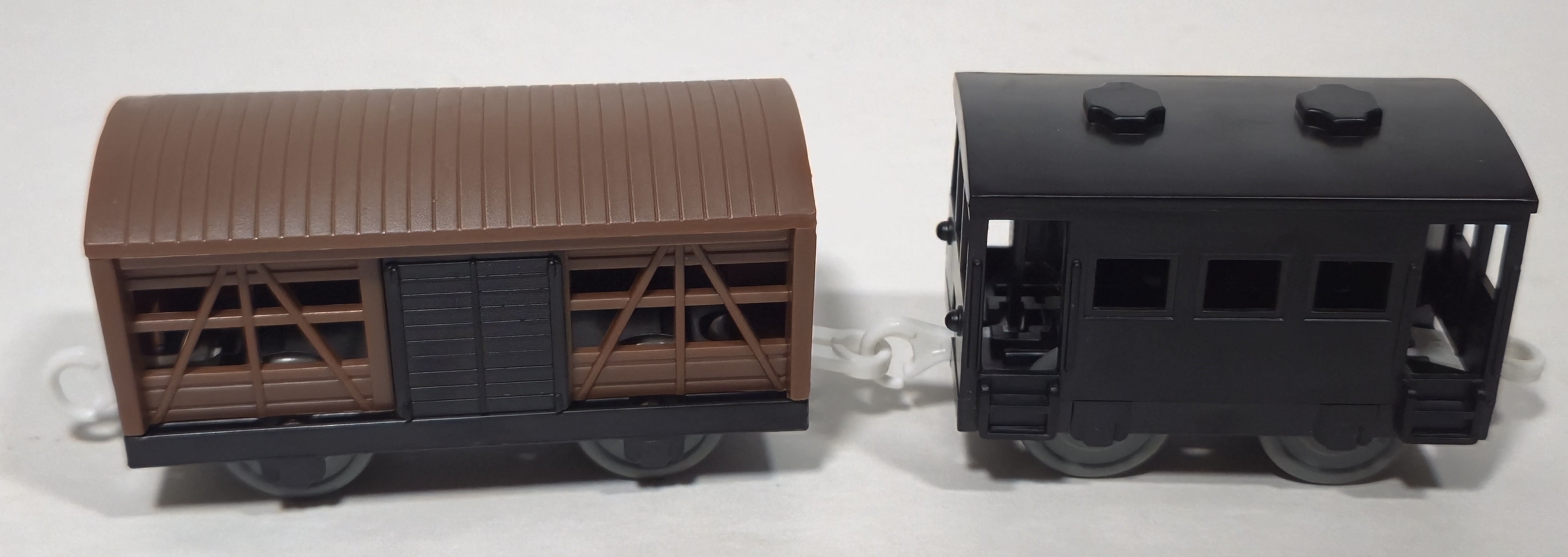

The freight cars with this James have the new axlebox tooling and the cattle car has changed to capped axles with the brake van remaining the flared type.
T-5 Plarail James (Updated rerelease) (2003)

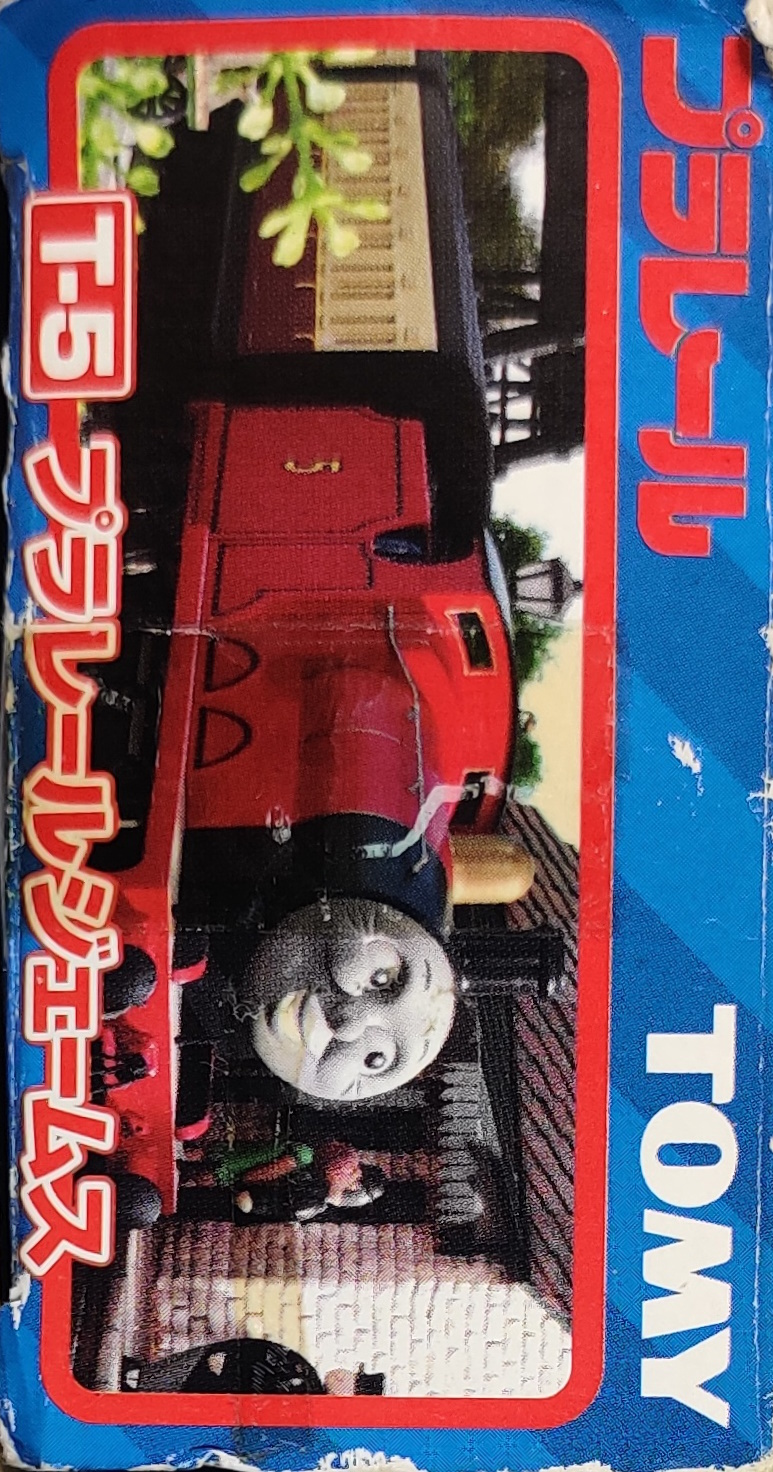

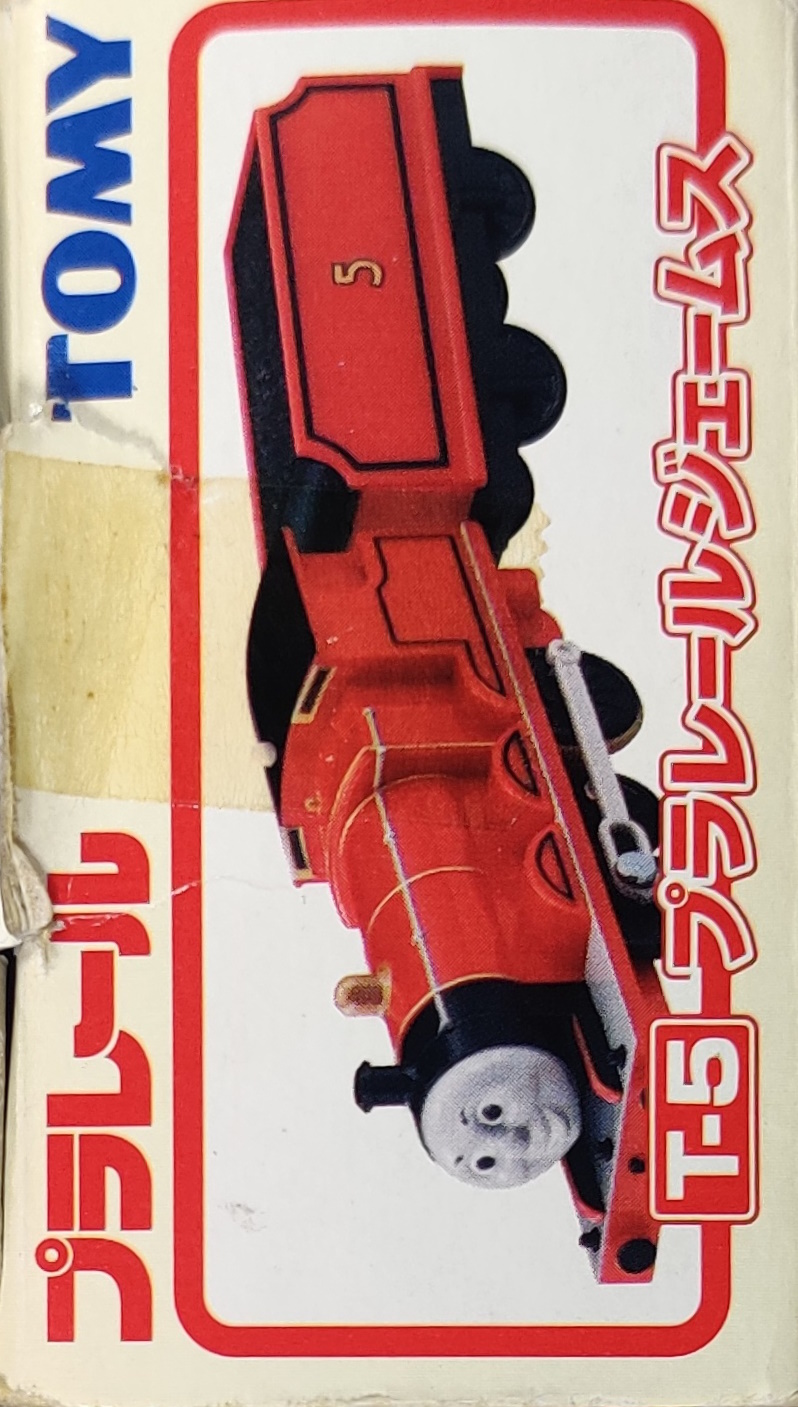


In 2003 the Thomas Plarail range was revamped and the main cast of characters received updated detailing. The James box shown here is a 2002 print example predating the January 30, 2003 relaunch of the series.
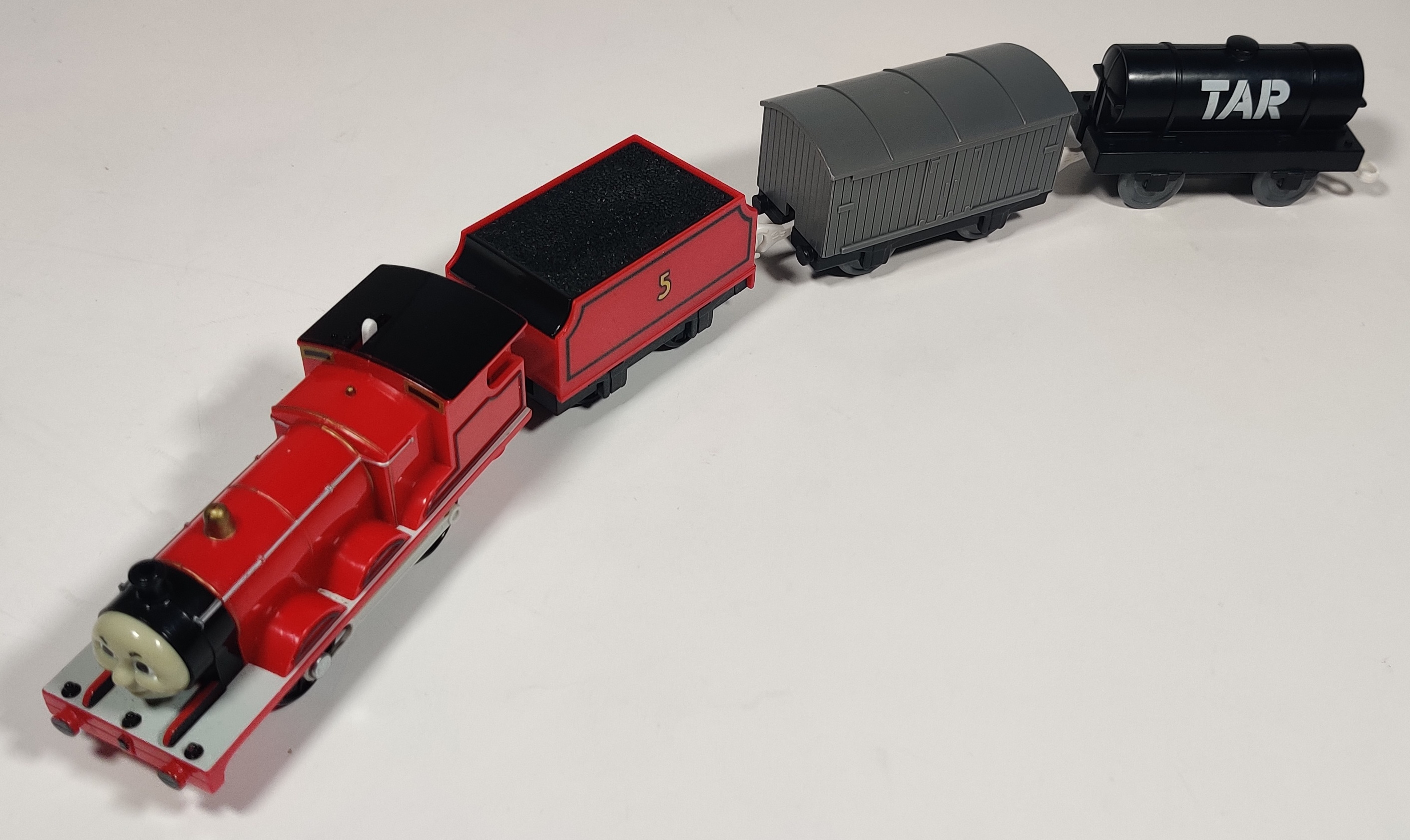
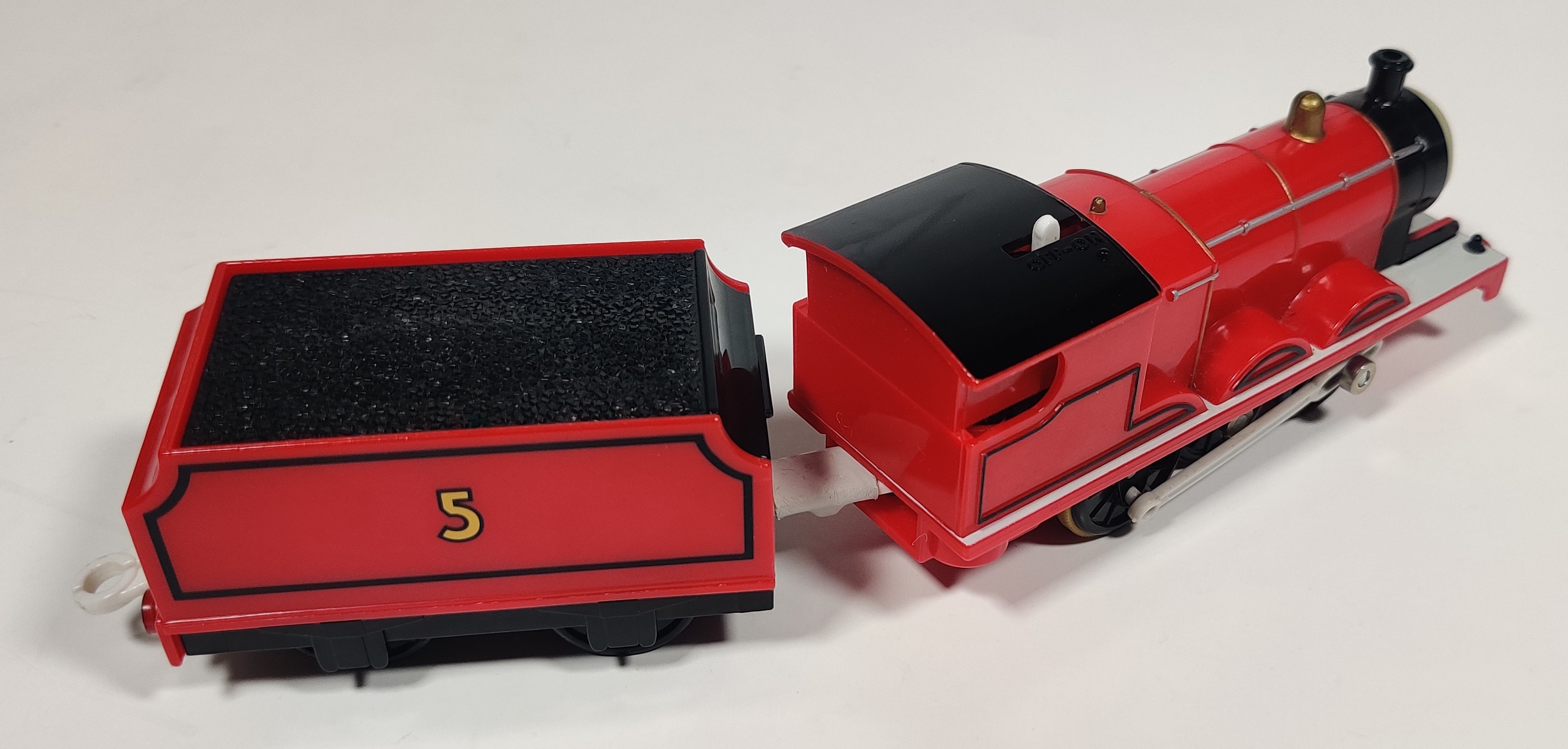
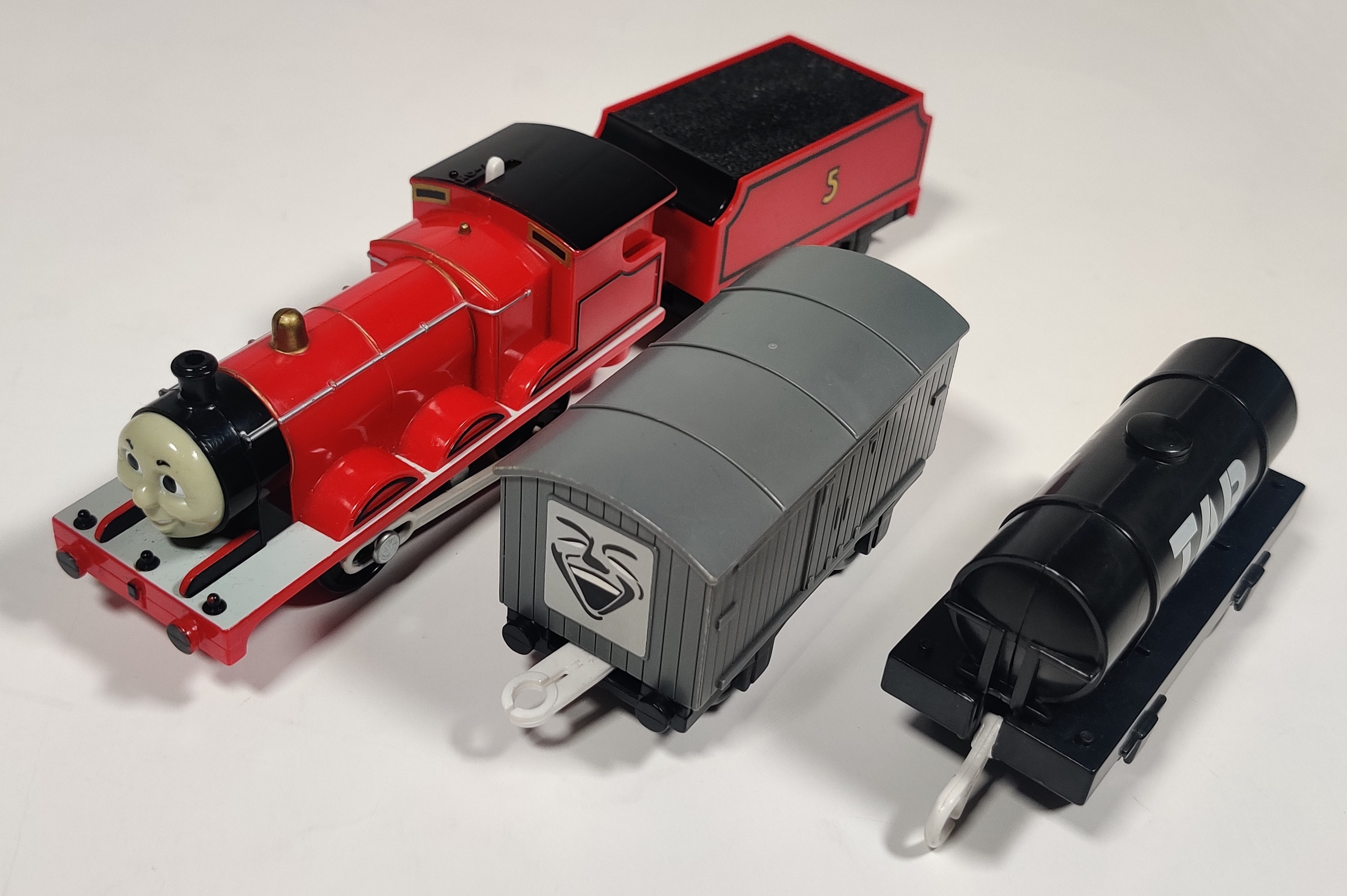
James has a new separate plastic face - early examples yellow with age and exposure. His running board and boiler have new details and instead of a sticker the tender has printed details. The cattle van and brake van were replaced with an oil tanker and troublesome van.

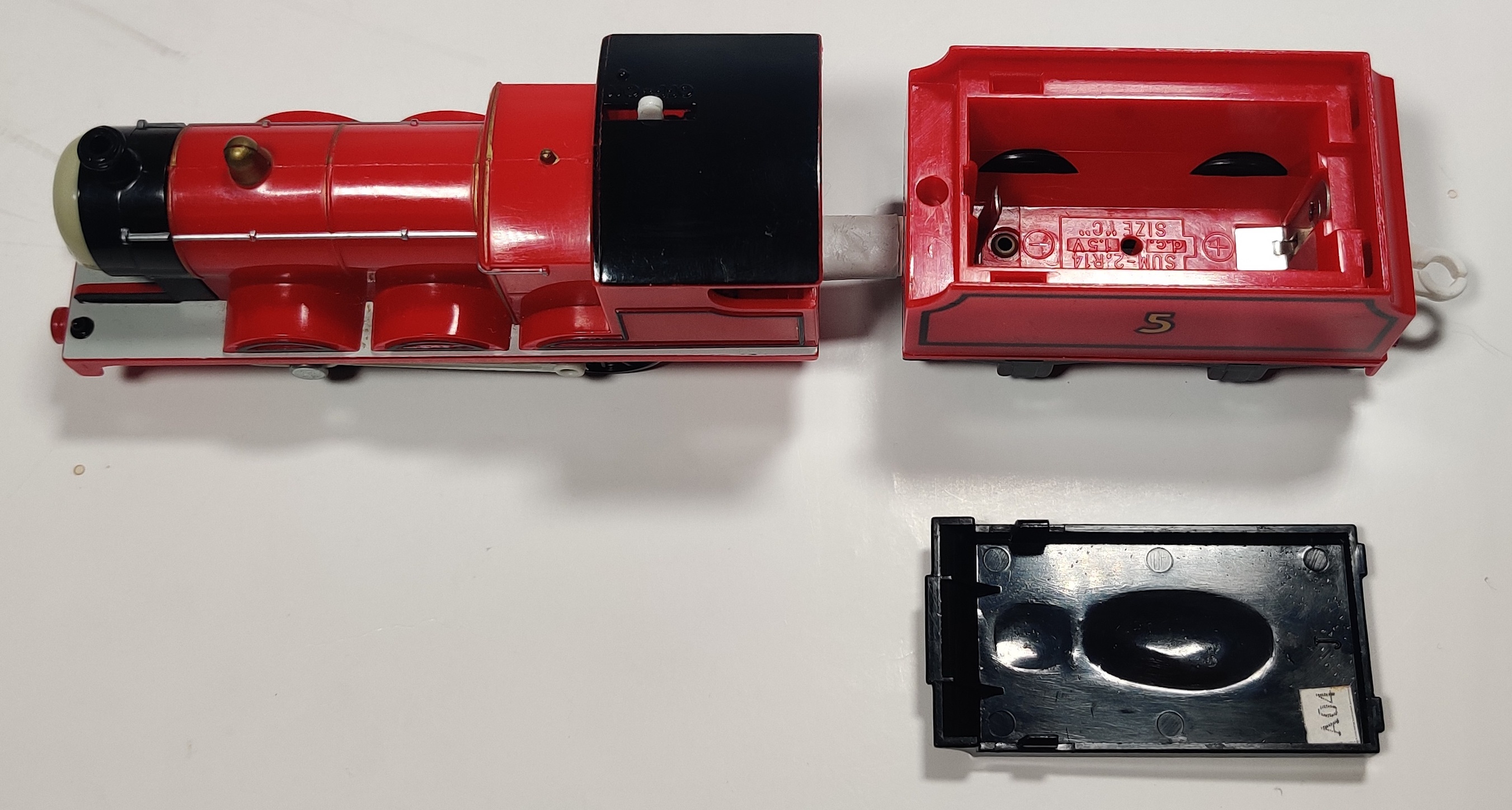
James' chassis has been updated with the new Tomy logo and 2002 Thomas licensing, and the coal load now has a "J" in the underside. This example dates to 2004. The tender connector has a sleeve of white heat-shrink tubing to help provide additional protection. At this point, the Plarail and international releases split ways, with international releases gaining the separately molded face and nicer paint application on the dome but not the added white running board, boiler stripes, or new rolling stock.
7444 James (Motor Road & Rail (U.K.)/Motorized Road & Rail (U.S.)) (2003/2005)
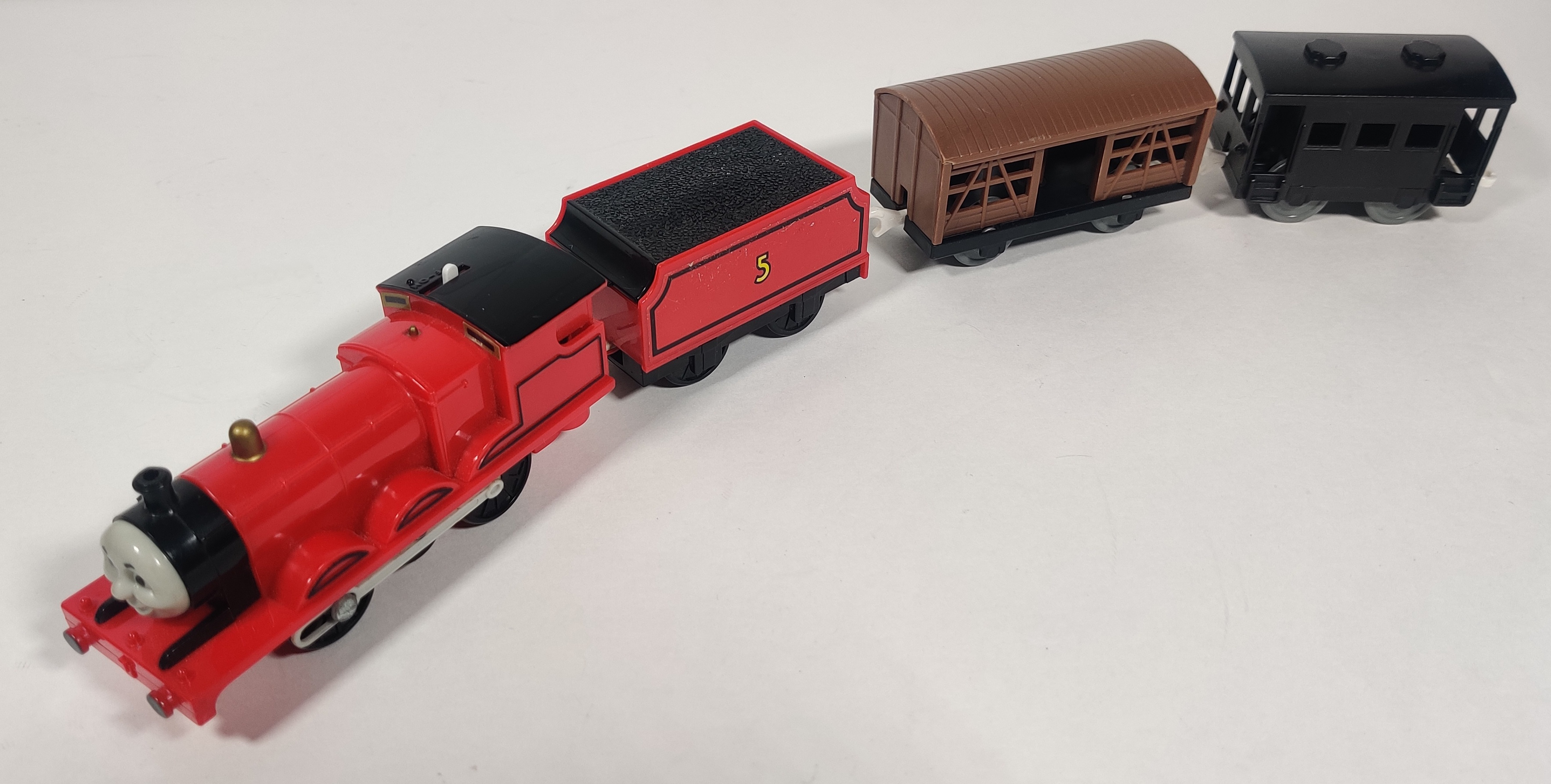
In 2003 new updated plastic faces Jameses began being sold in Europe in blue Thomas Motor Road & Rail packaging with cattle van and brake van.
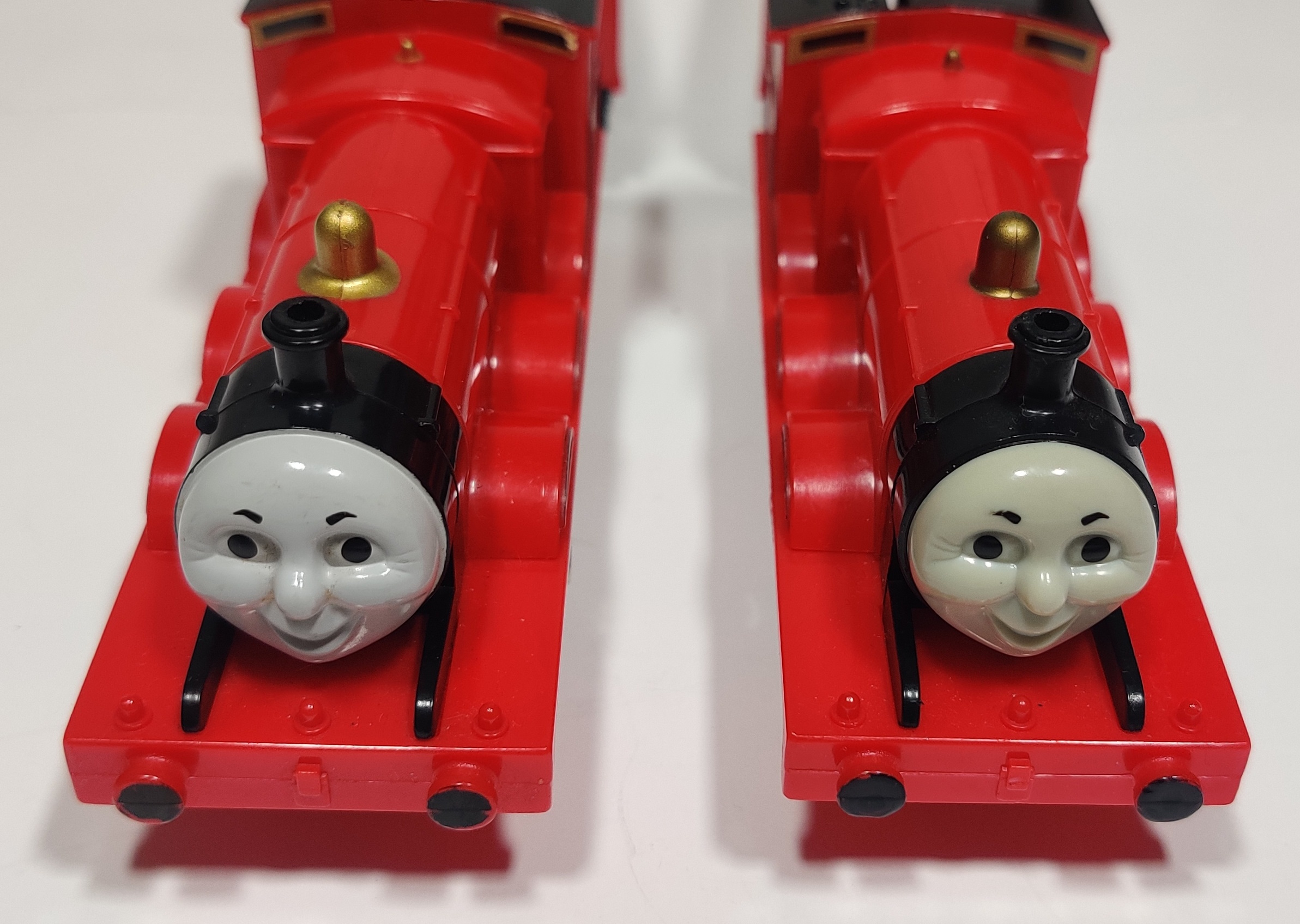

Other than the new plastic face, James' brass dome and whistle paint application also continued to be the more refined type. In 2005 these three-packs were sold in the United States at Toys R Us in the North American style packaging. The European release got a new box in 2005 used until the Tomy TrackMaster box in 2008.
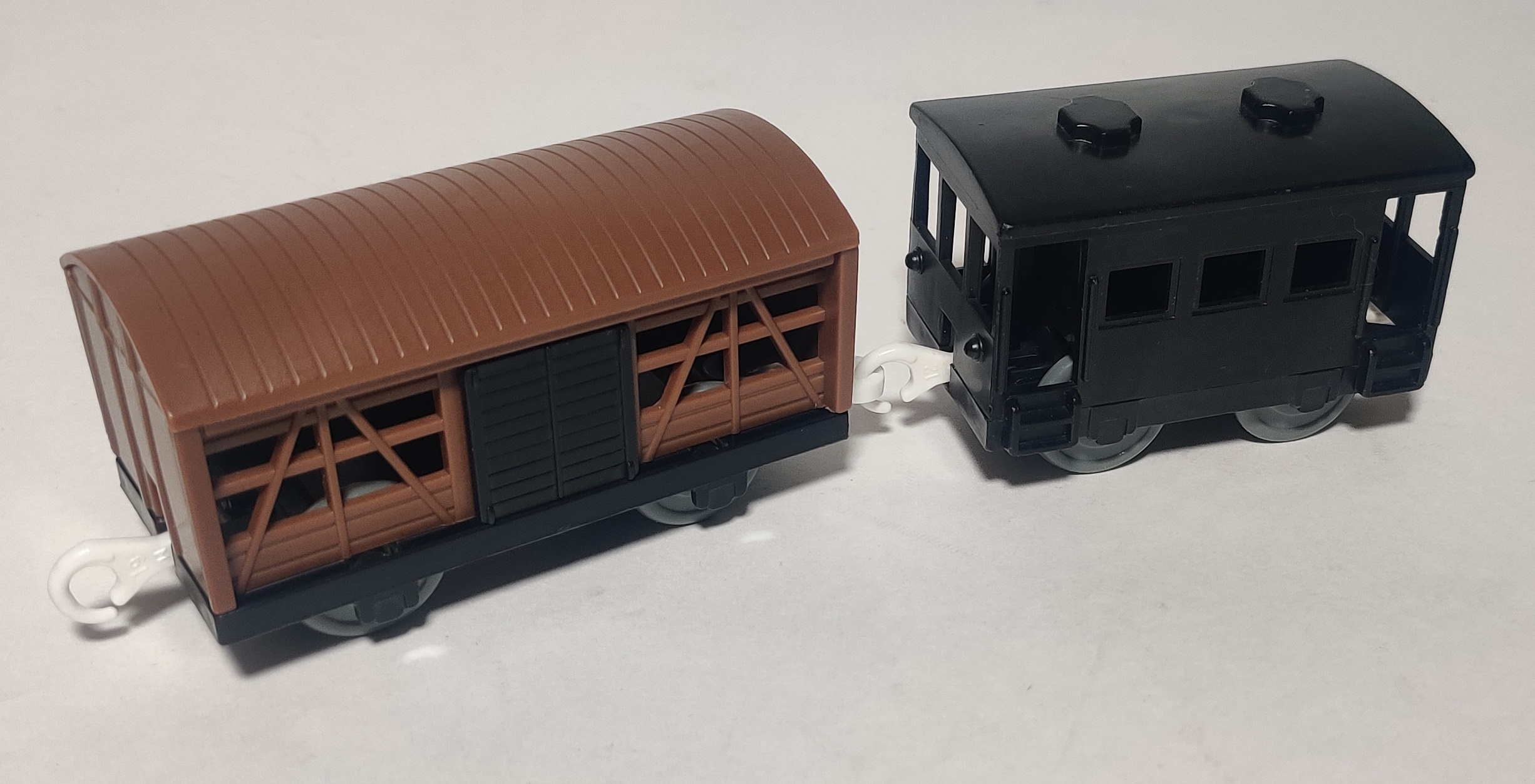
Unlike the updated Plarail James in 2003, these export Jameses continued to come with the axle-boxed, capped-axle trucks.
4834 James (Motorized Road & Rail) (2004)
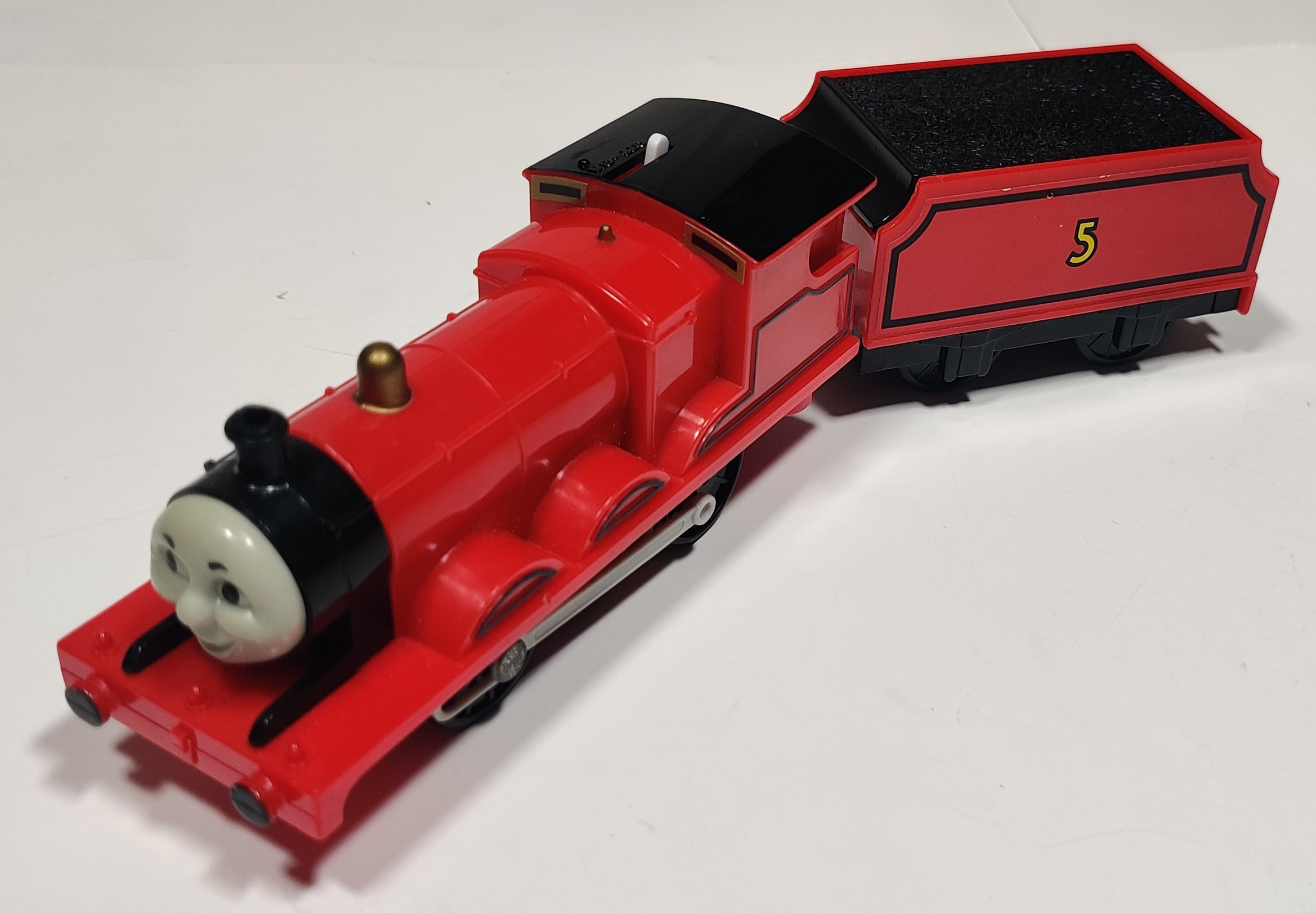
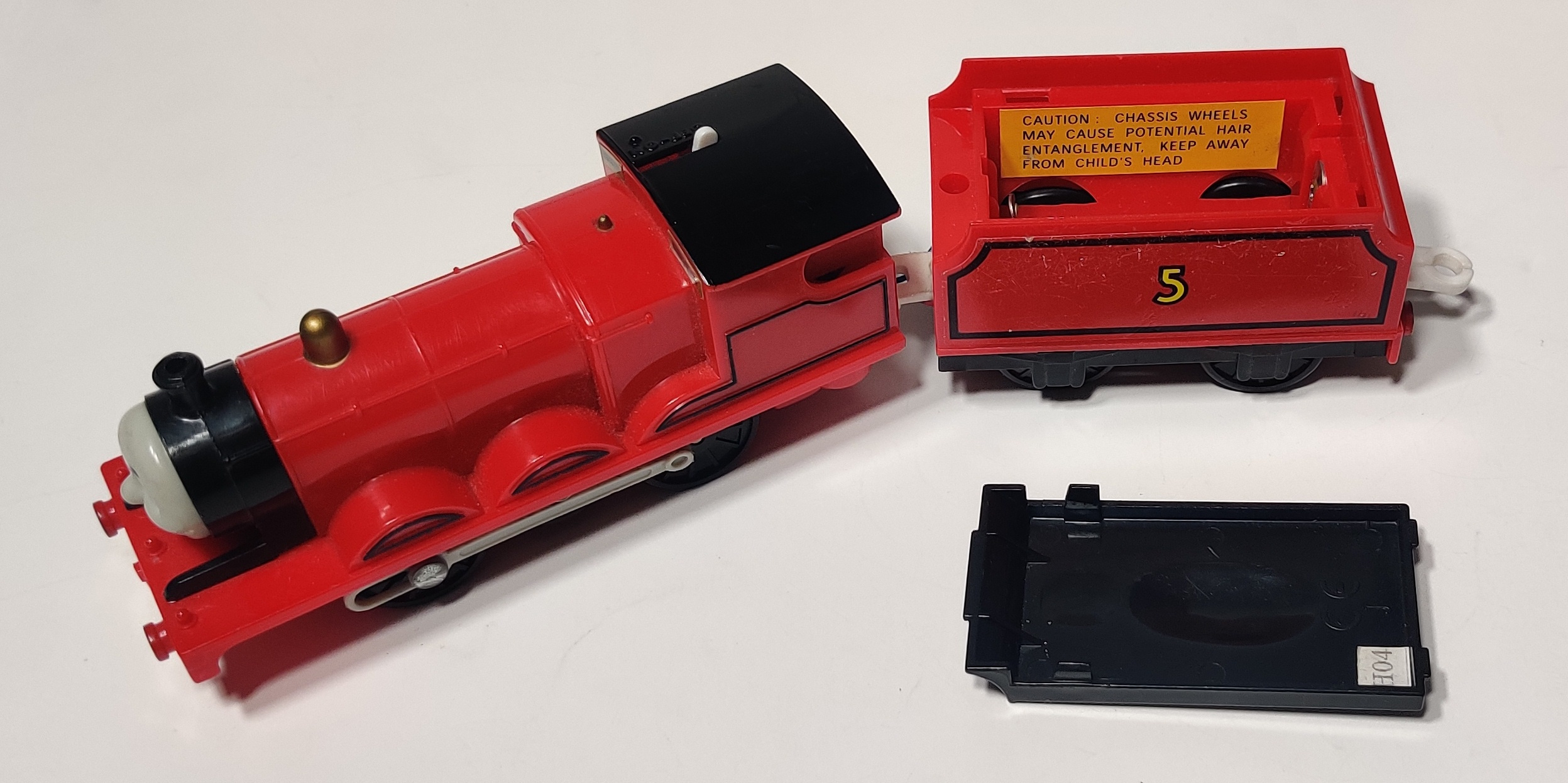
In 2004 James was exported to the United States in individual plastic-box hangtag packaging.
4888 James with Track (Motorized Road & Rail) (2005)
In 2005 in the United States export James was released with four curve rails.
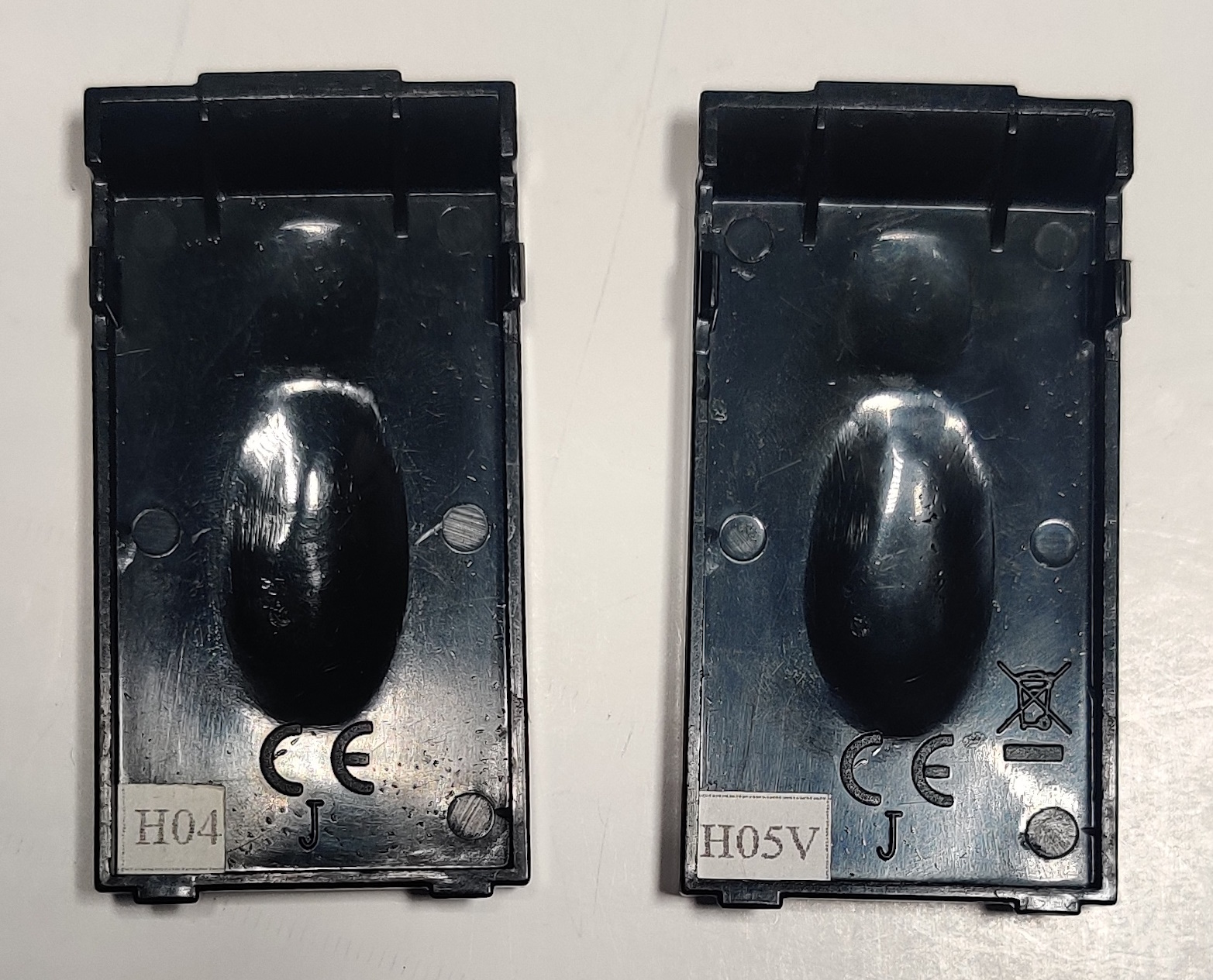
At some time between August 2004 and 2005 the "do not dispose" trash can mark was added to the tender coal battery cover tooling.
T-5 Plarail James (updated coupling) (later 2000s)


In the later 2000s the plastic used on the tender drawbar couplings was changed to a seemingly stronger black type, with the white heat-shrink tubing also changing to black. These new couplings do seem to appear on particularly late export Motor Road & Rail engines.
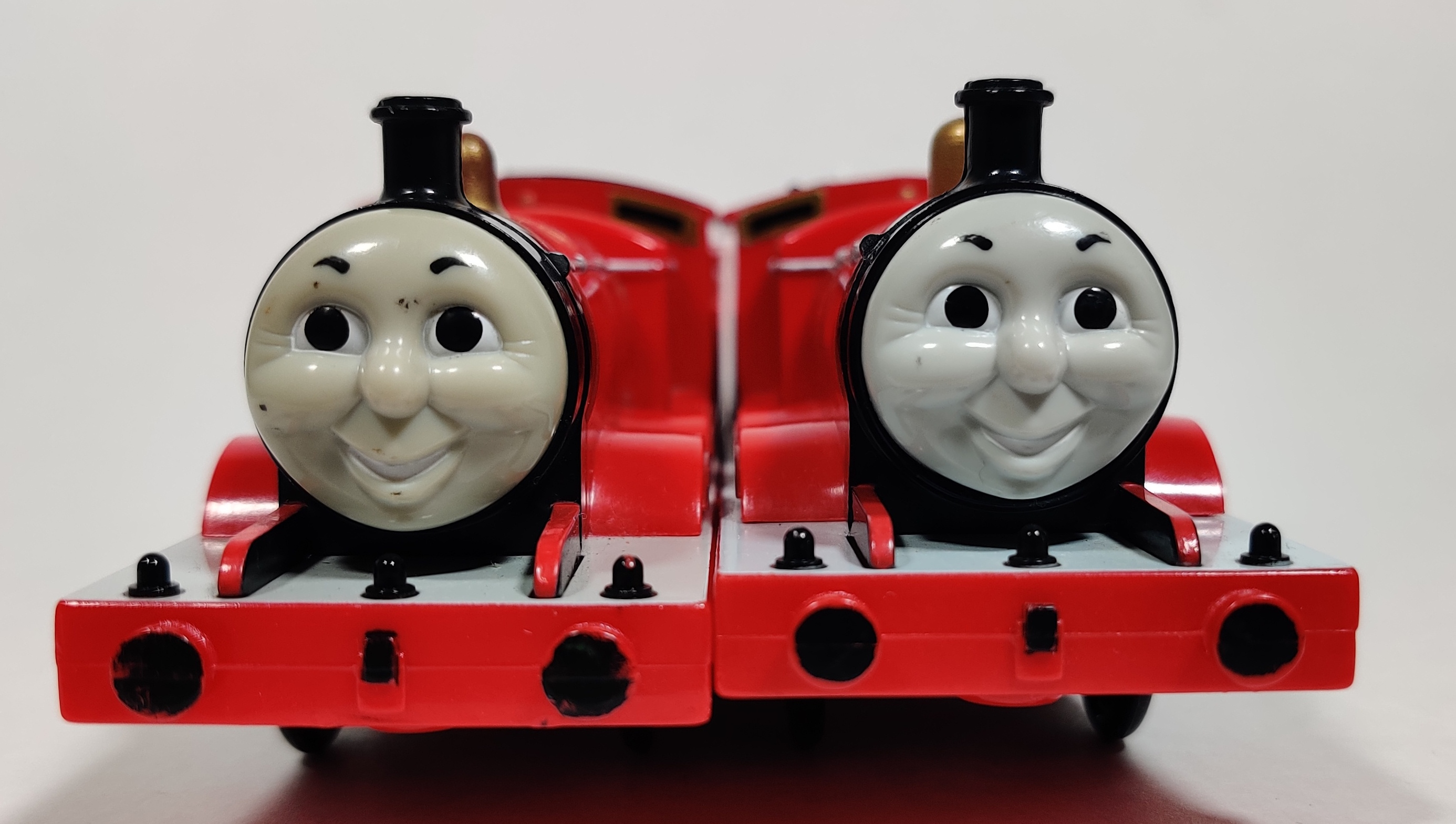
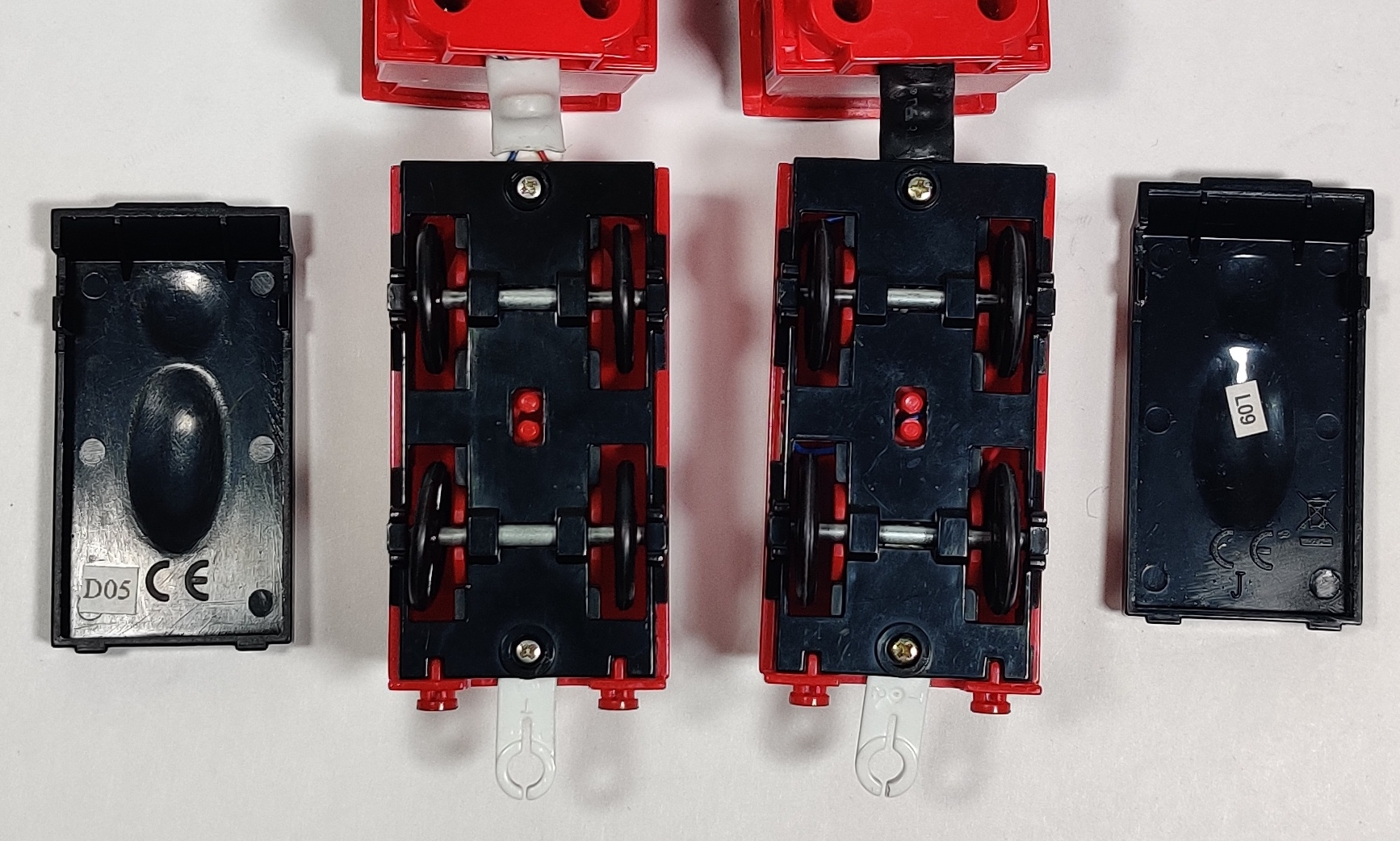
As time went on, the tooling for James' face started to degrade, and later 2000s and early-mid 2010s Jameses have noticeably smaller faces, with the area under his cheeks contracted up into the face more... At least they don't turn orange or yellow as often as the earlier 2000s ones. Shown here is the face and drawbar connector on a 2005 and 2009 James.
Around 2010 the middle wheels of James, Henry, and Gordon began being pressed to the axle instead of sitting loose on a capped one.
TS-05 Plarail James (2012)
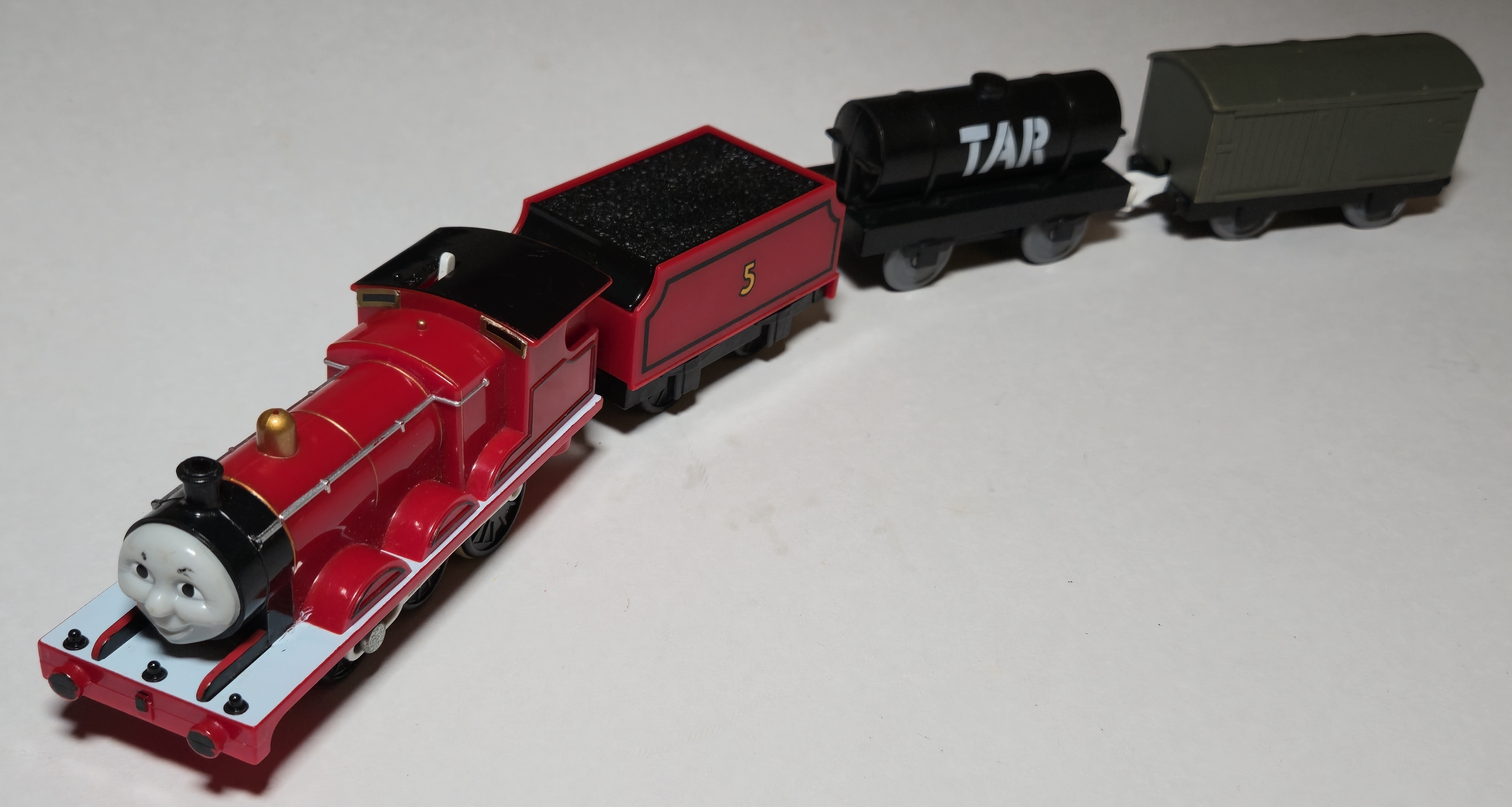
In 2012 the Plarail James with oil tanker and van was rereleased in the new style of CGI packaging. Other than the box, later production Jameses also have the later style of middle wheels with the wheels press-fit to the axles as well as bluish paint used on the running board.
TS-05 Plarail James (CGI redesign) (2014)

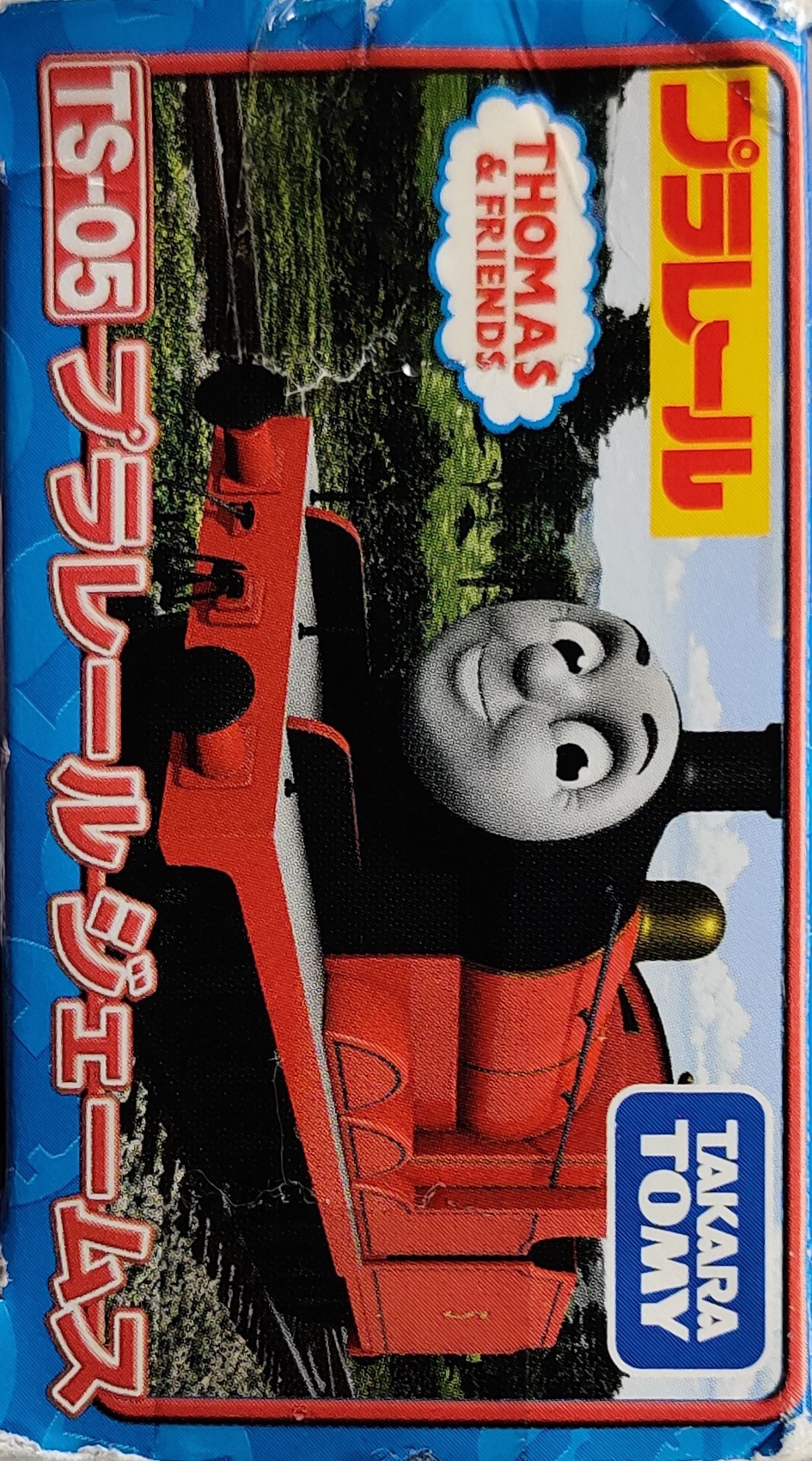

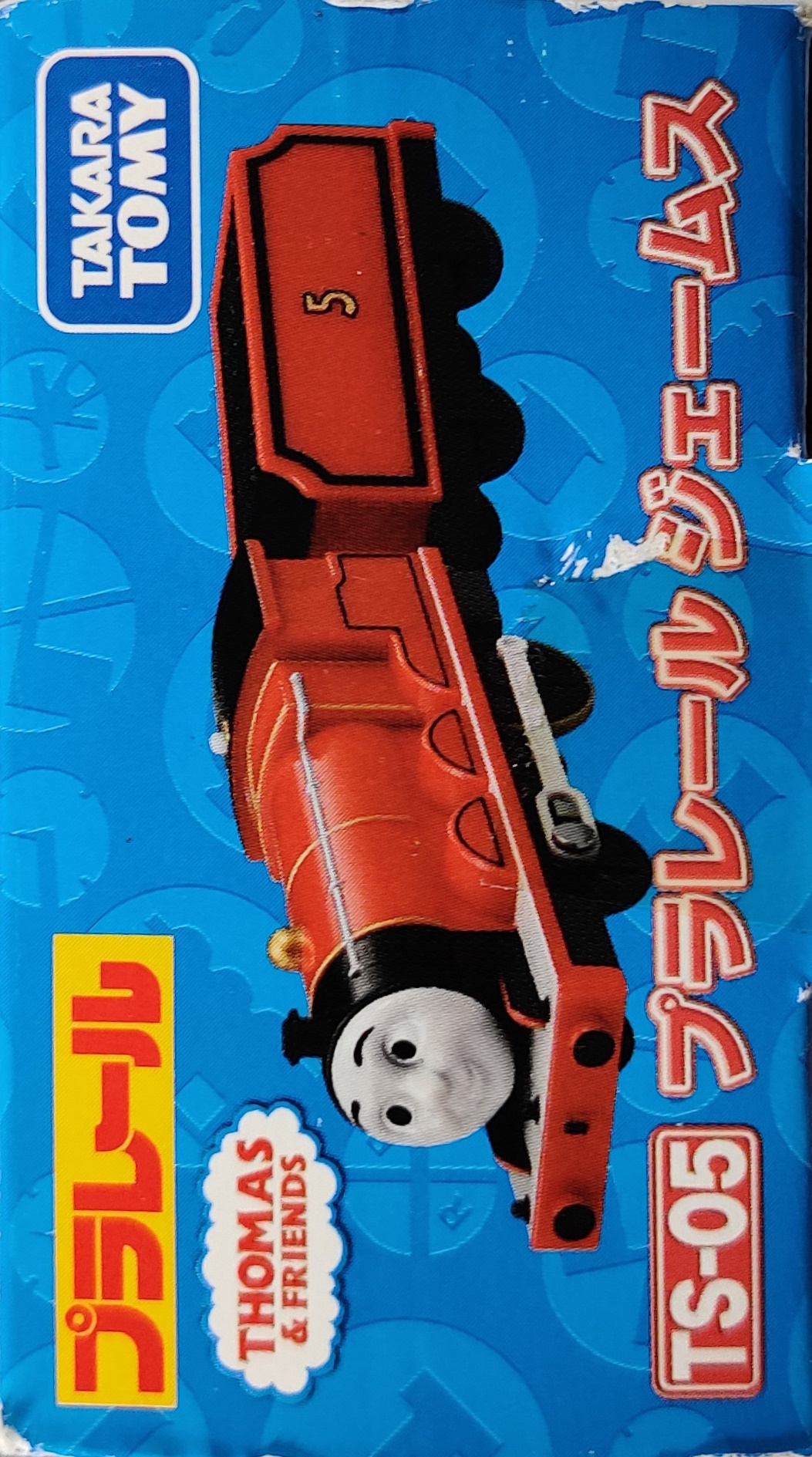


On July 19, 2014 a redesigned AA battery-powered James was released in the CGI style of packaging as TS-05 Plarail James (TS-05 プラレールジェームズ).

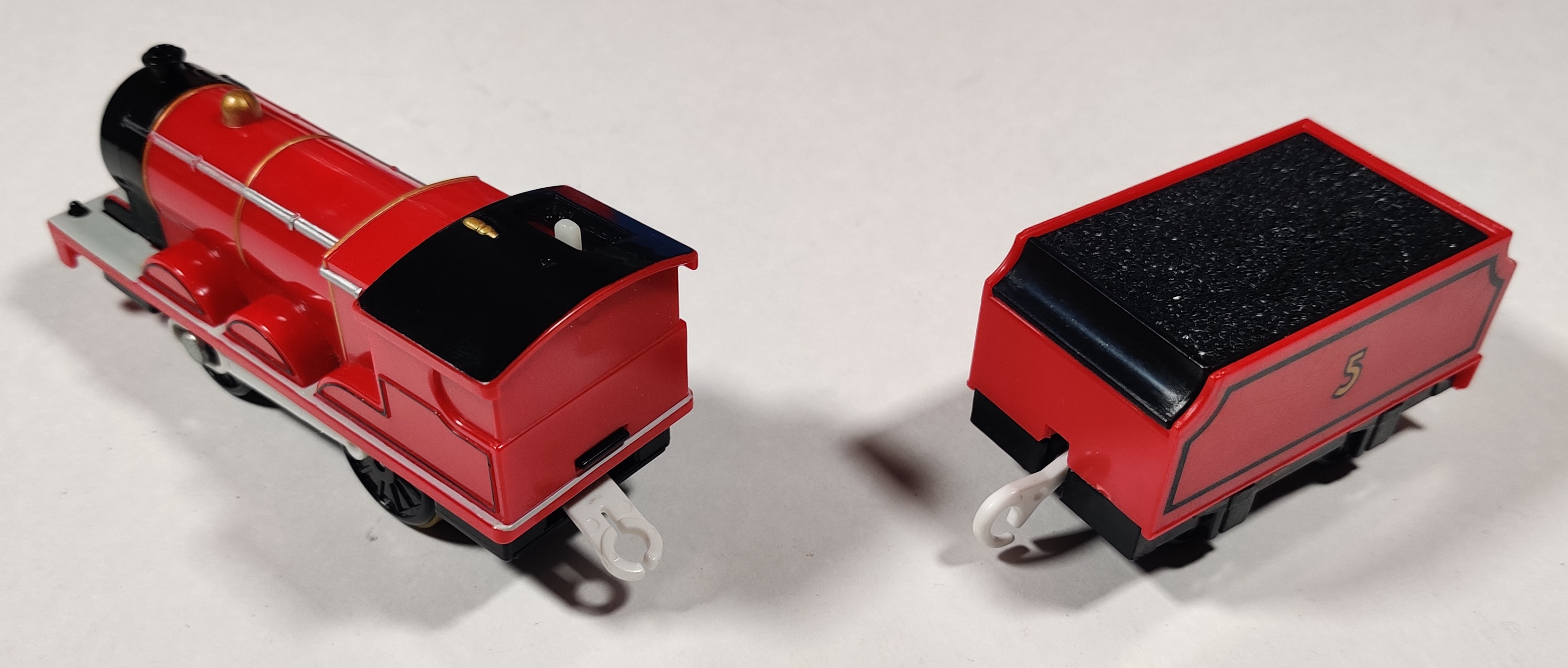
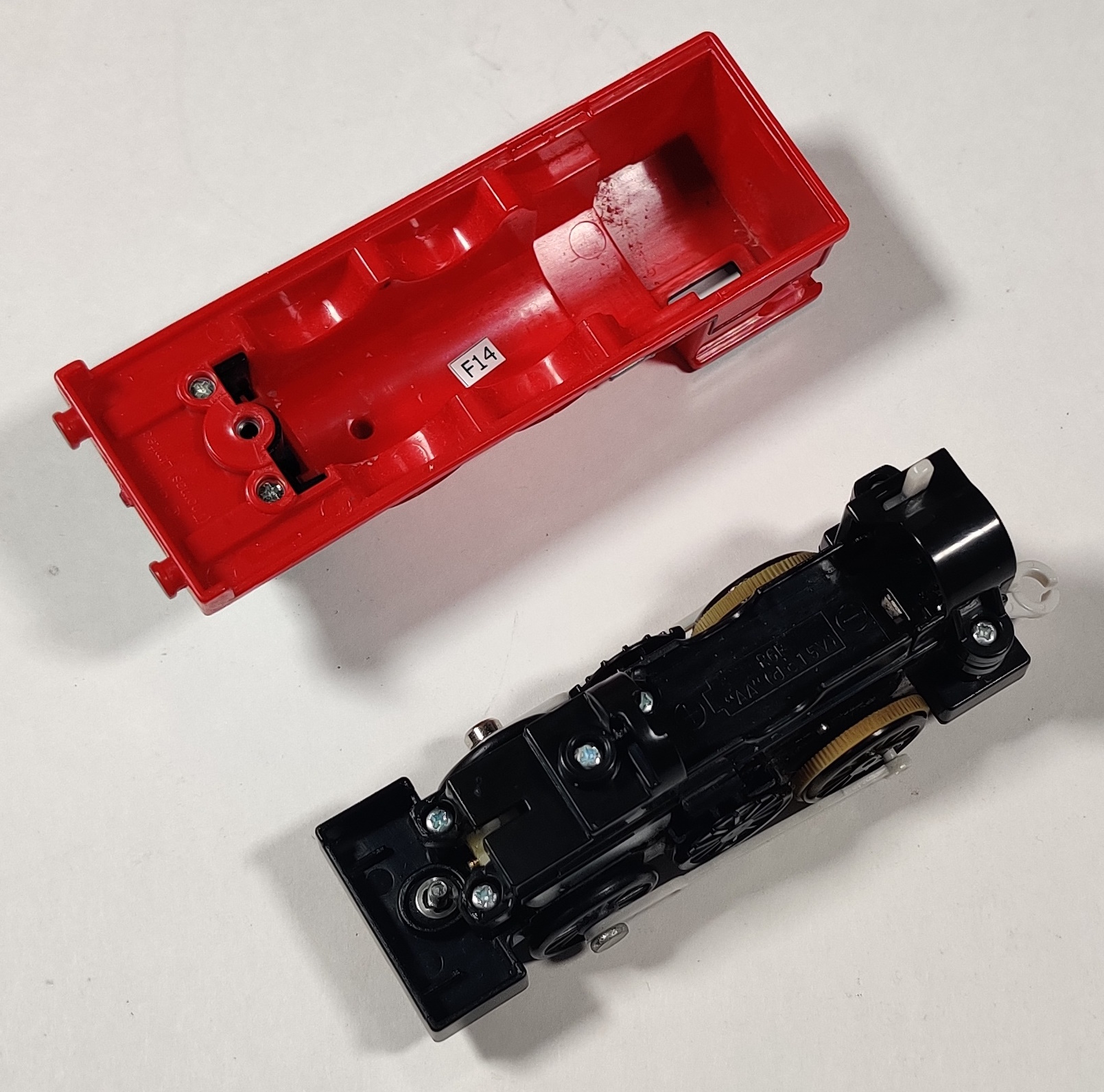
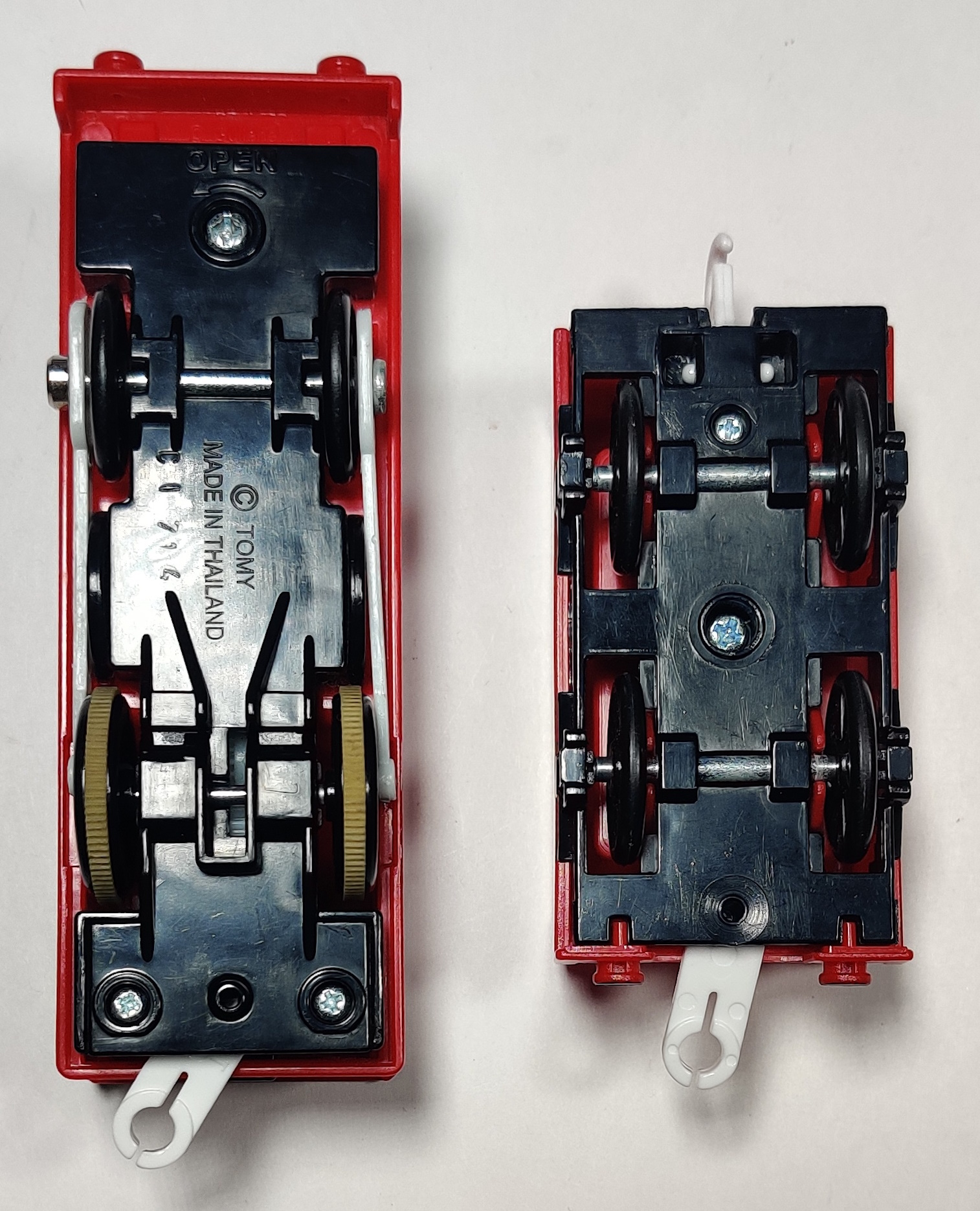
The new James has a CGI face and runs on a single AA battery that is held in the main engine section. The tender is similar to the original tooling but is a separate car.
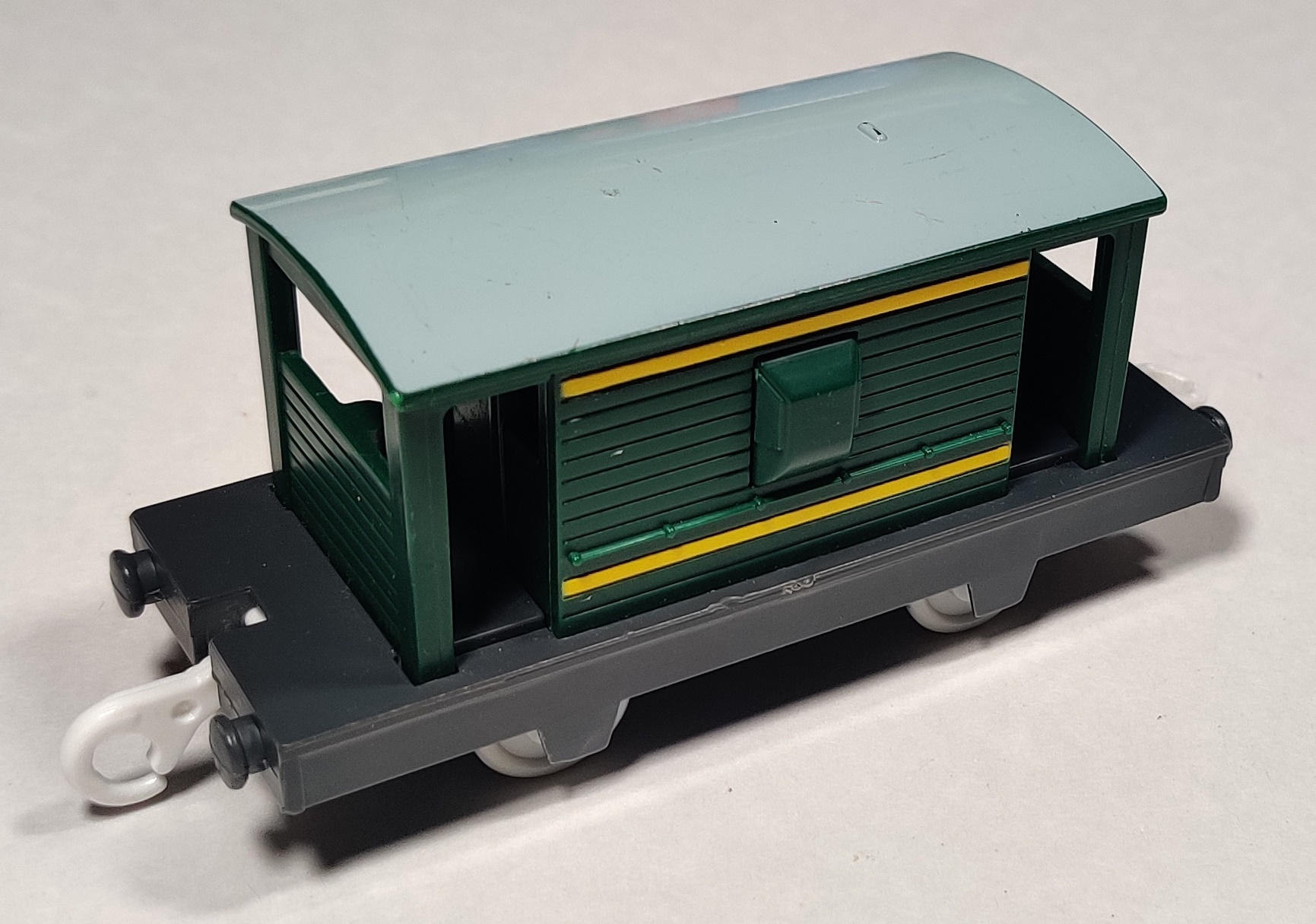
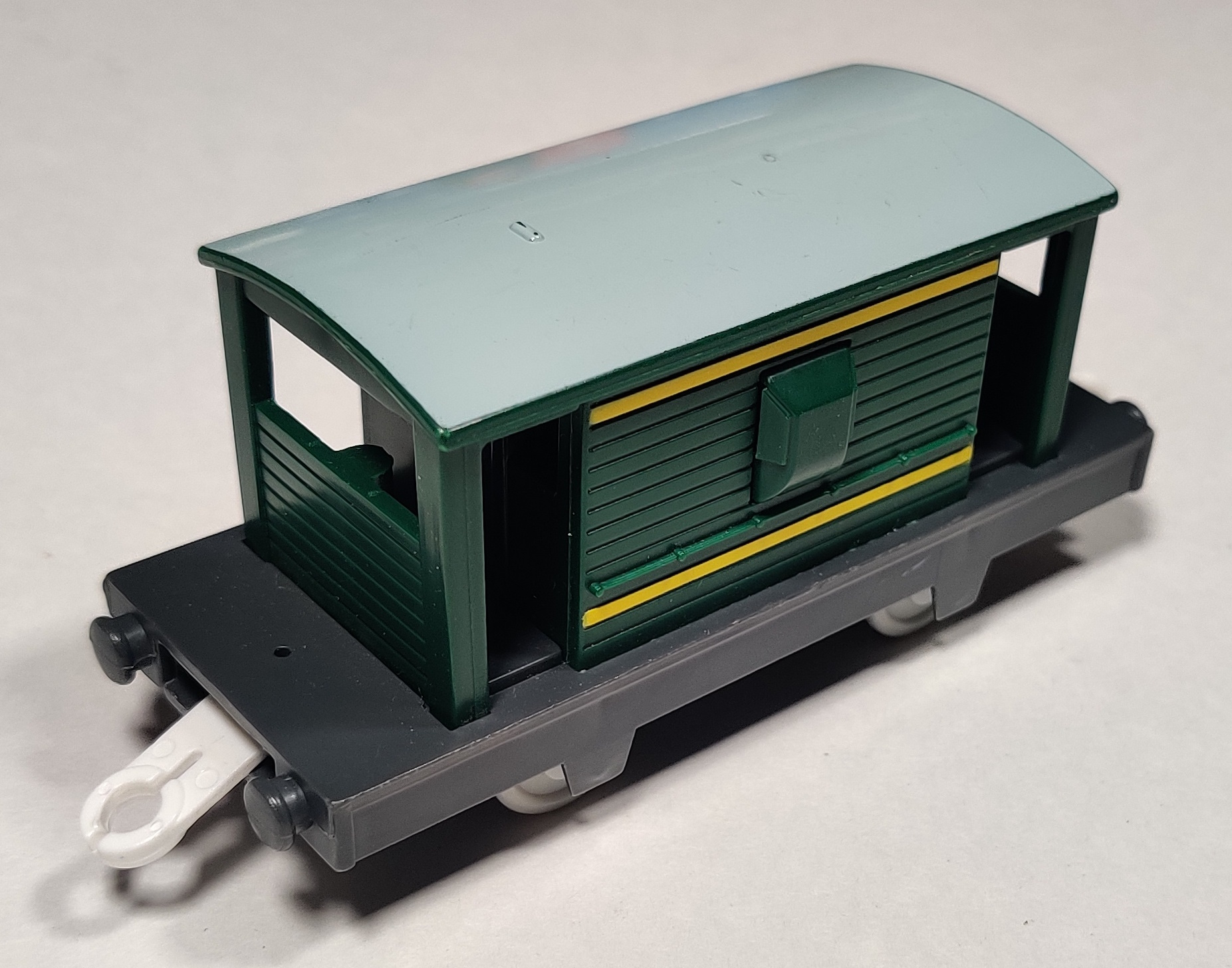
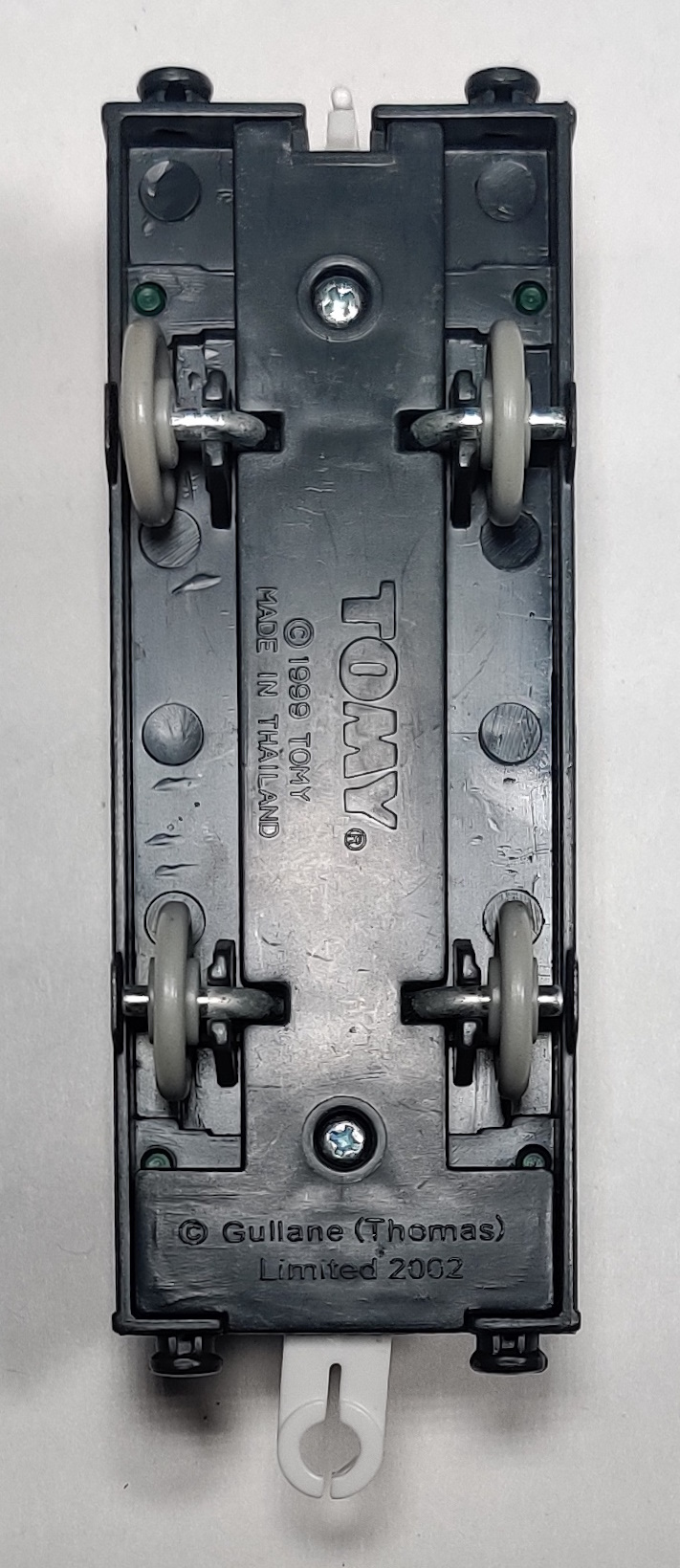
Also included is a green brakevan. Its kind of nice to have a brakevan coming with one of the main engines, but it is also kind of cutting down on the trucks included...
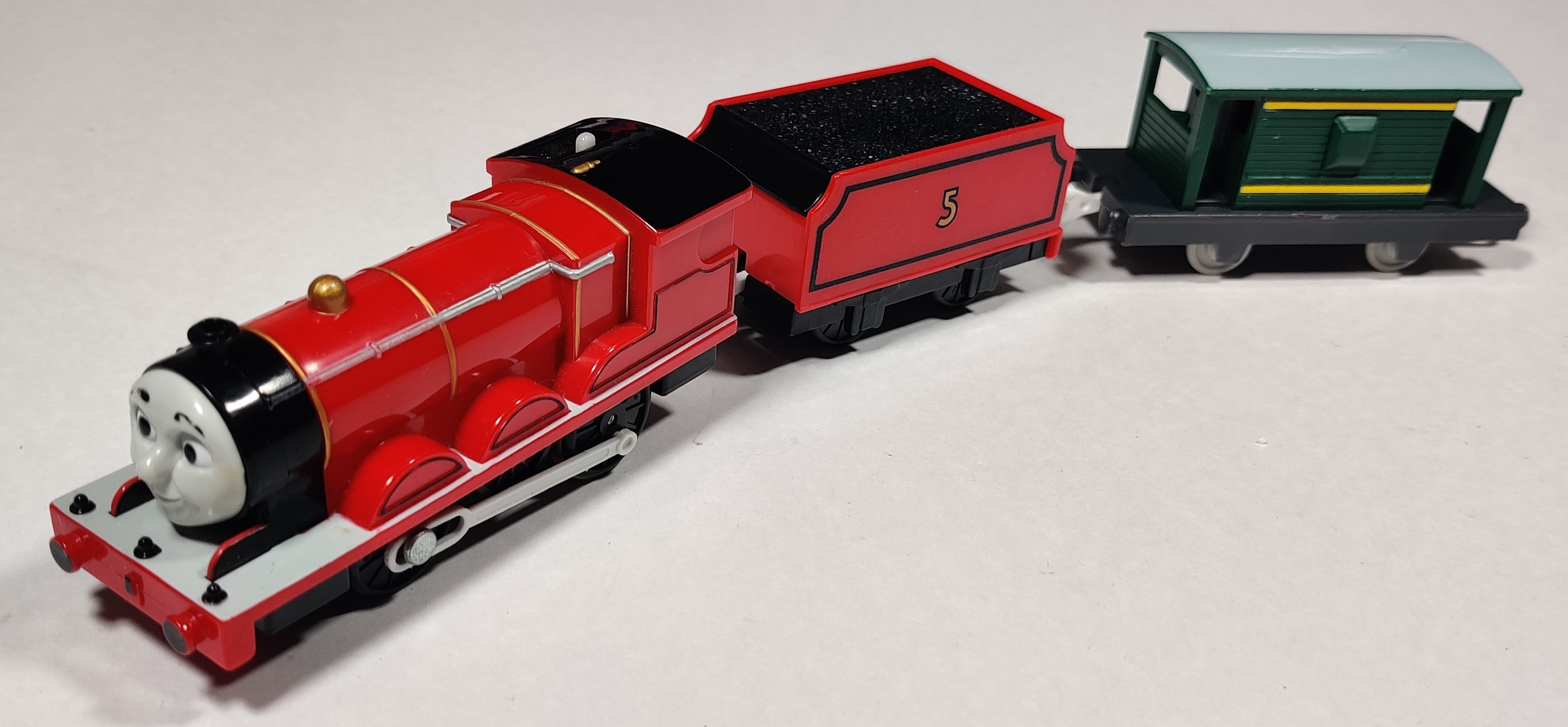
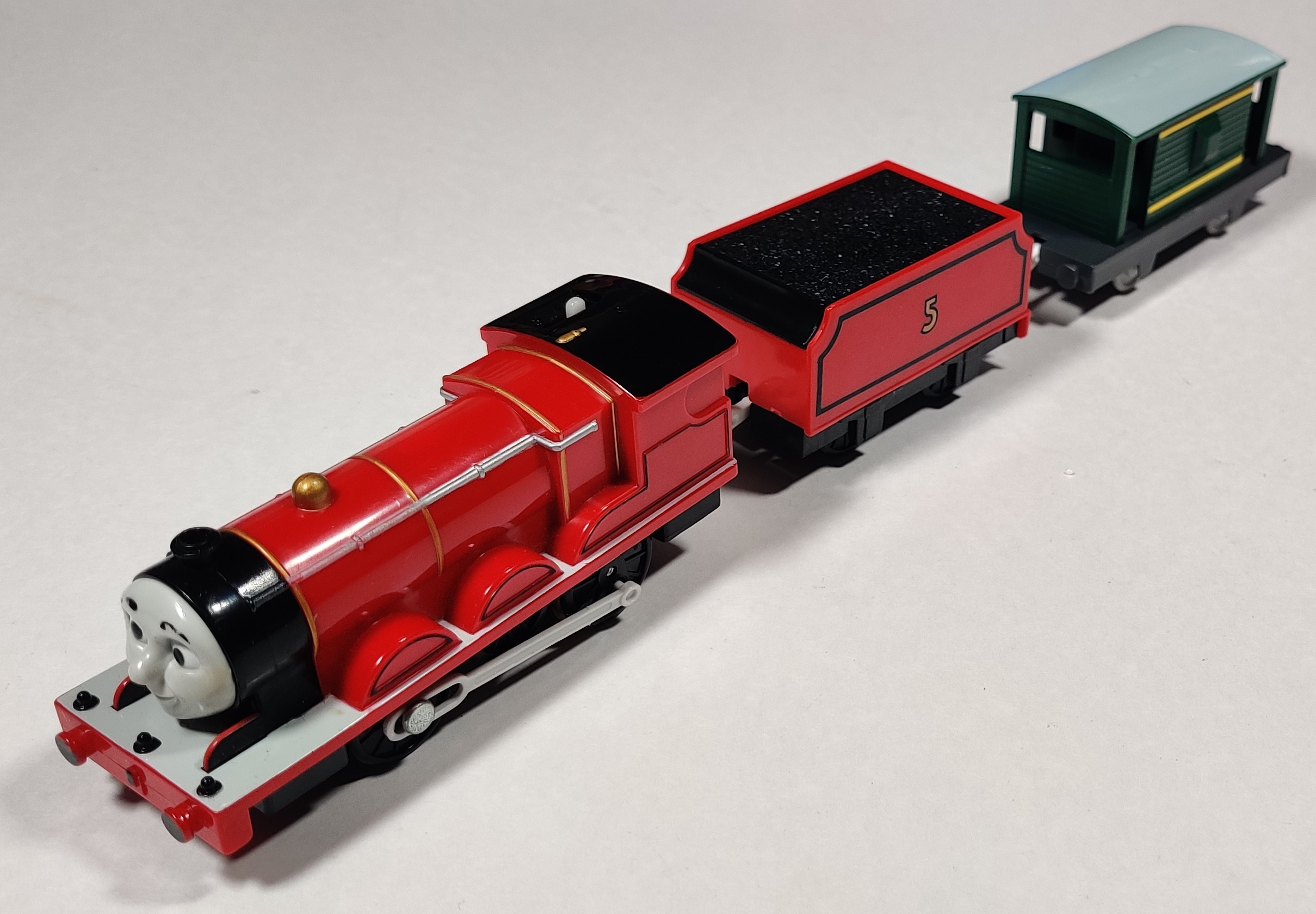
This was the first of the main cast redesigned with a CGI face and newer power mechanism, and although it is probably the nicest and least-obtrusive change it also set the tone for the continuing decline of the Thomas Plarail series...
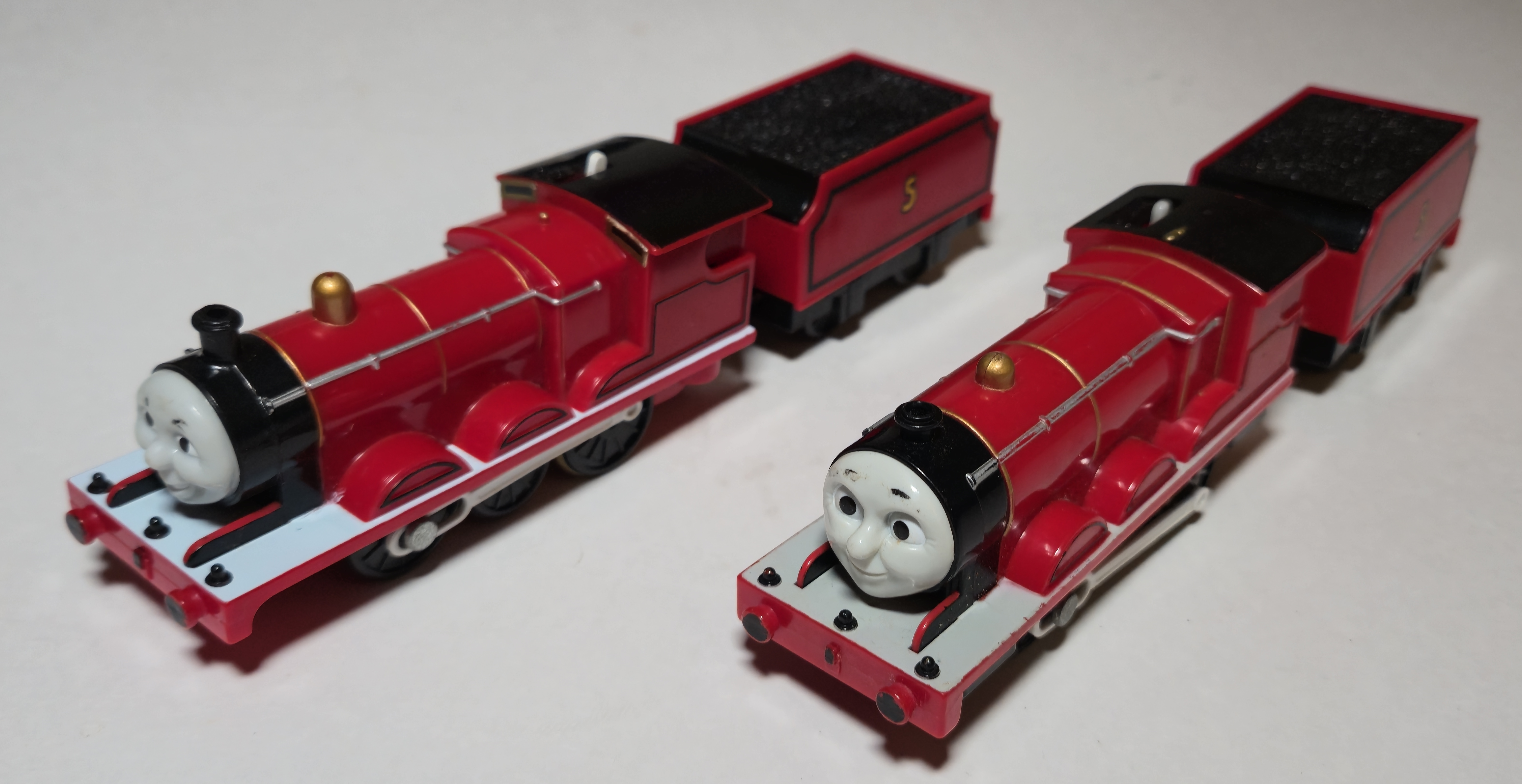
It could be worse, I suppose... I wonder when these James will go out of production for good. There has been a few variations of this new mechanism James over the years.